September 4, 2022
Martha O'Kennon
Summer is back. What a strange one it has been. The Raccoon is tormenting the Fishes, and today I found two dead. It also moves the hose that brings water back to the Pond so that I have to unplug the pump every evening.
The Japanese Anemones are finally blooming! The Asters are budding and beginning to put out little blooms. Betty Beese's tiny Astilbe is blooming - tiny spikes of mauve. And that's just the A's!
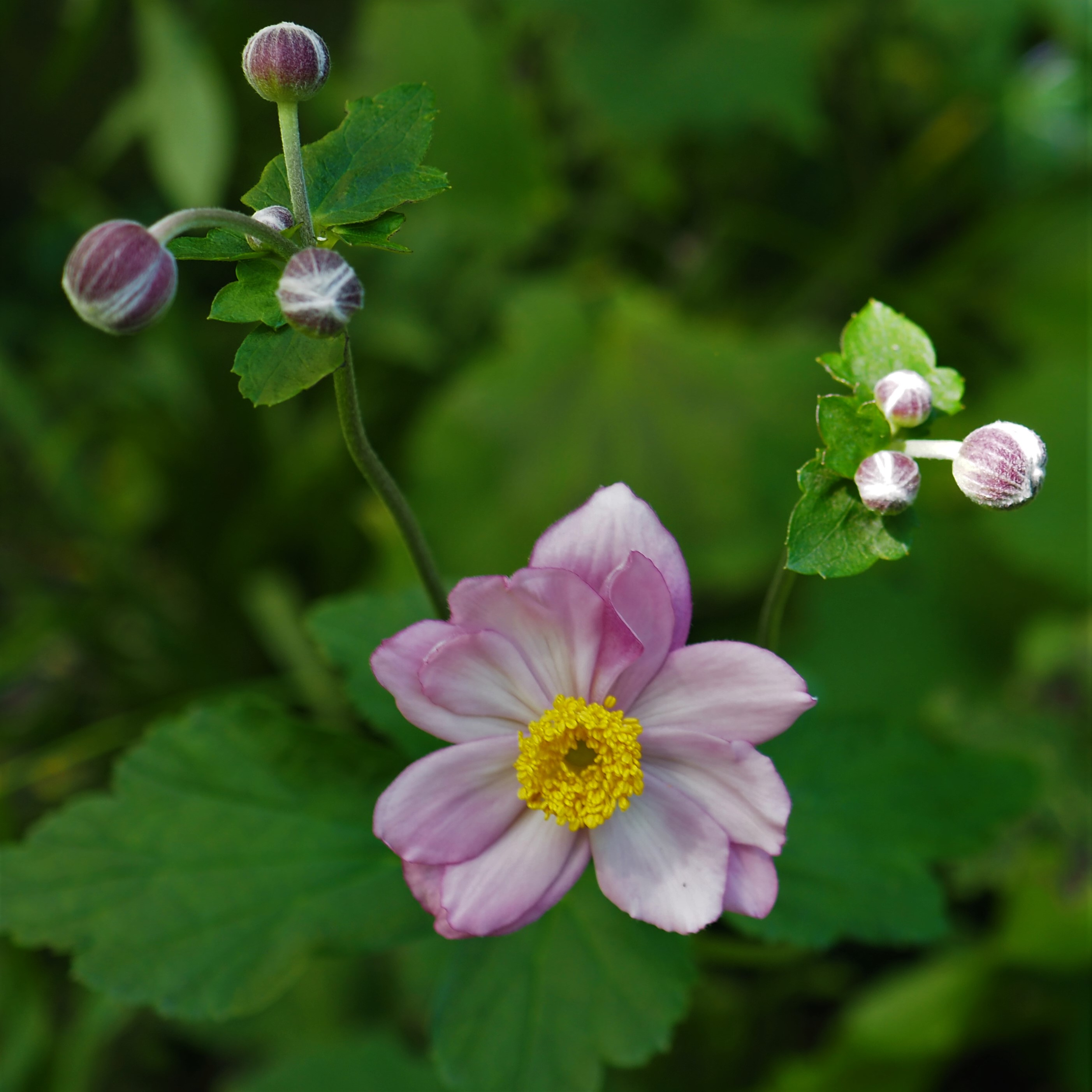
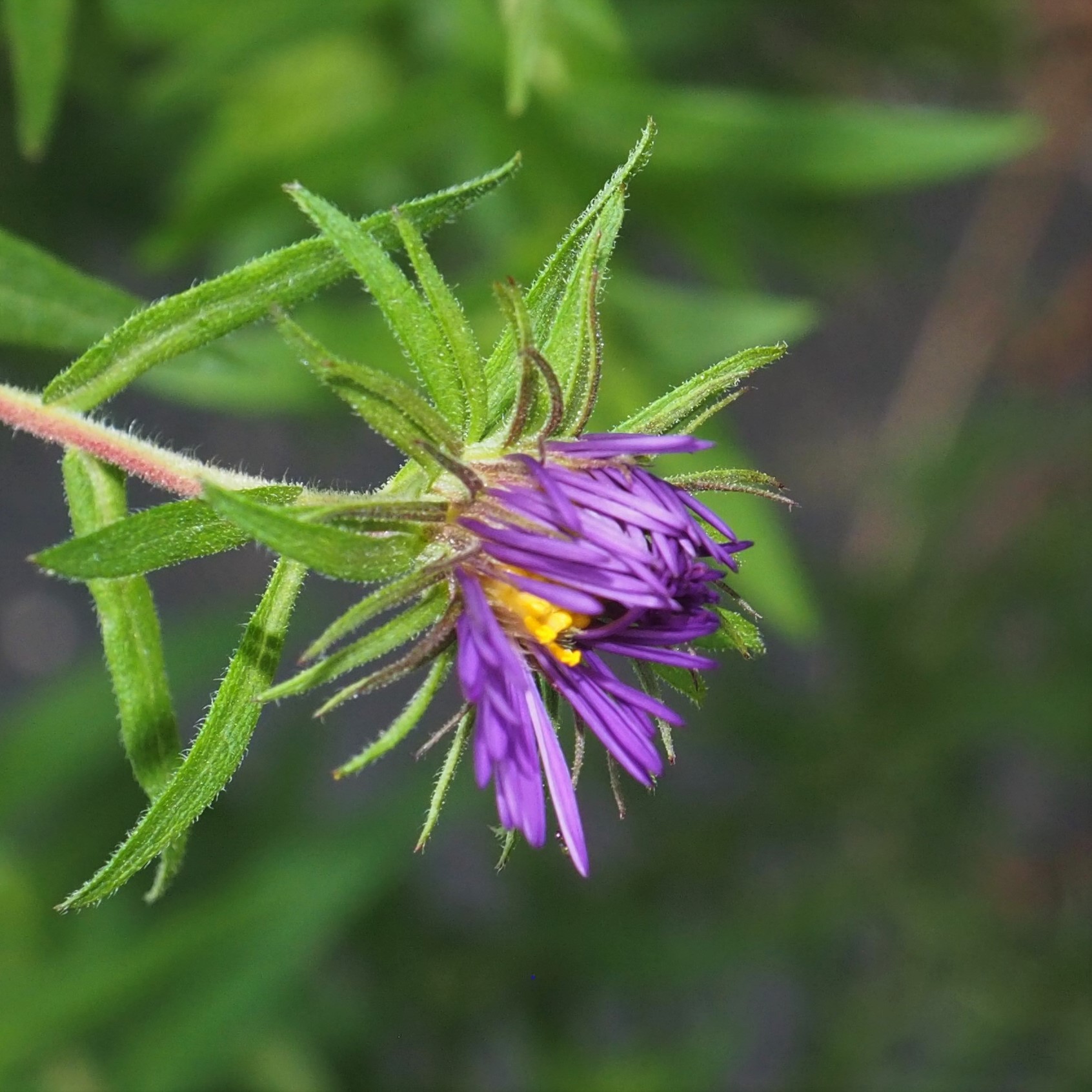
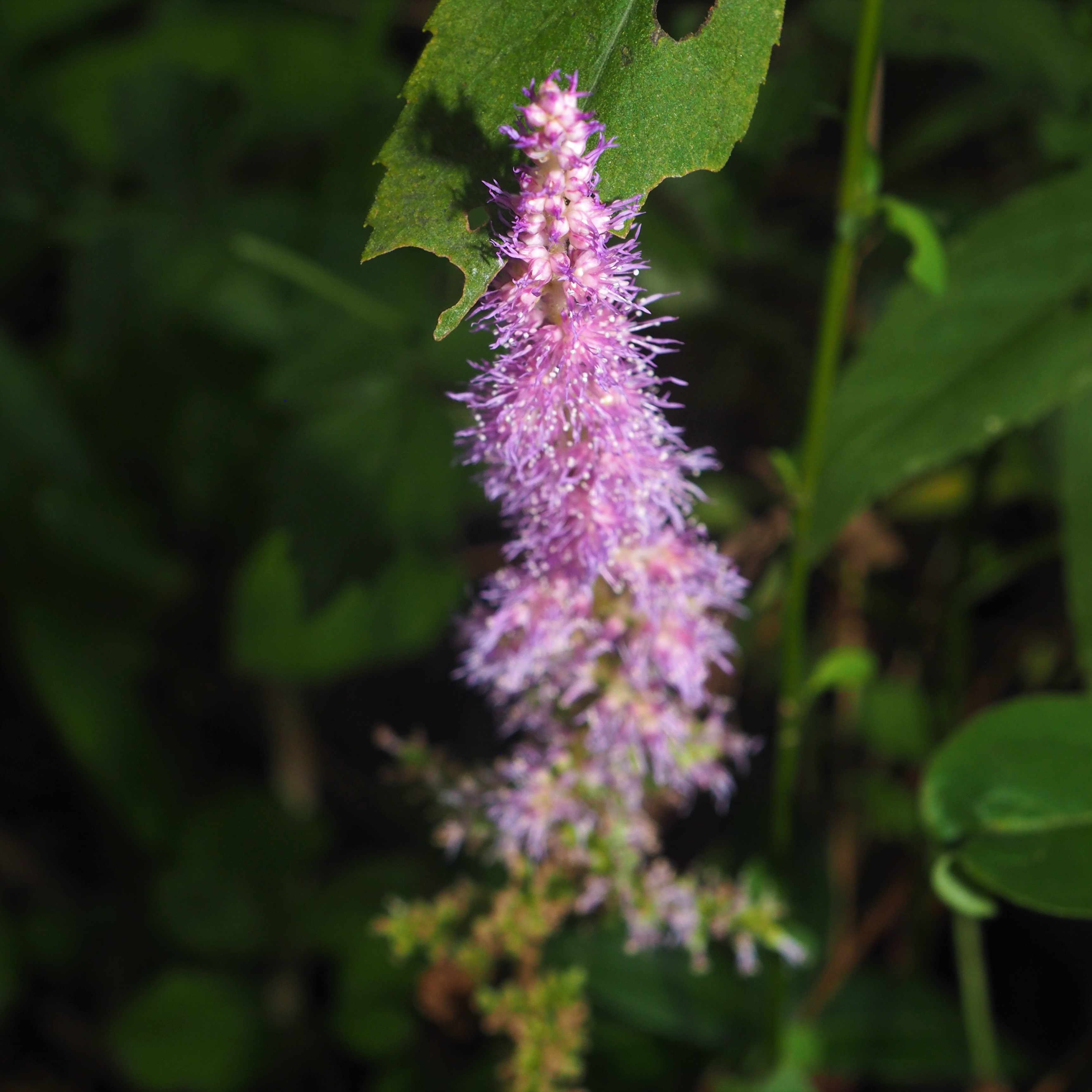
Remember that there is information in the name of the file for each image. You can see it by mousing over the image - look at the lower left of the screen. Or you can click on the image to get to the (usually) larger image. Then the info is displayed in the address line above. Sometimes the second click will actually display a different view of the original image.
I wasn't very good at keeping up with the Ants, but I did find out that the one I told you last week was a Queen is actually a Male! It's a Collared Ant, genus
Aphaenogaster.
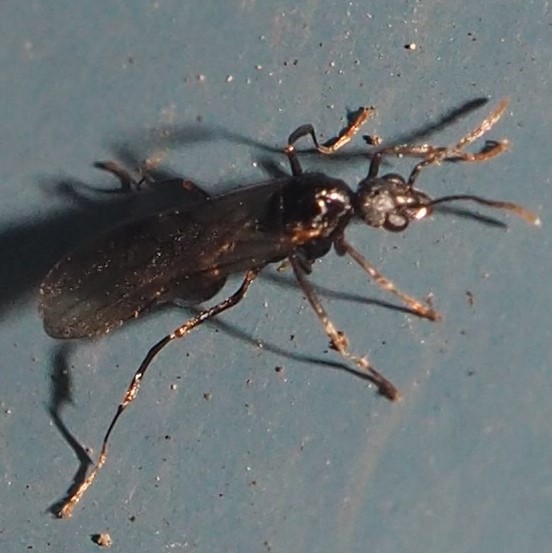
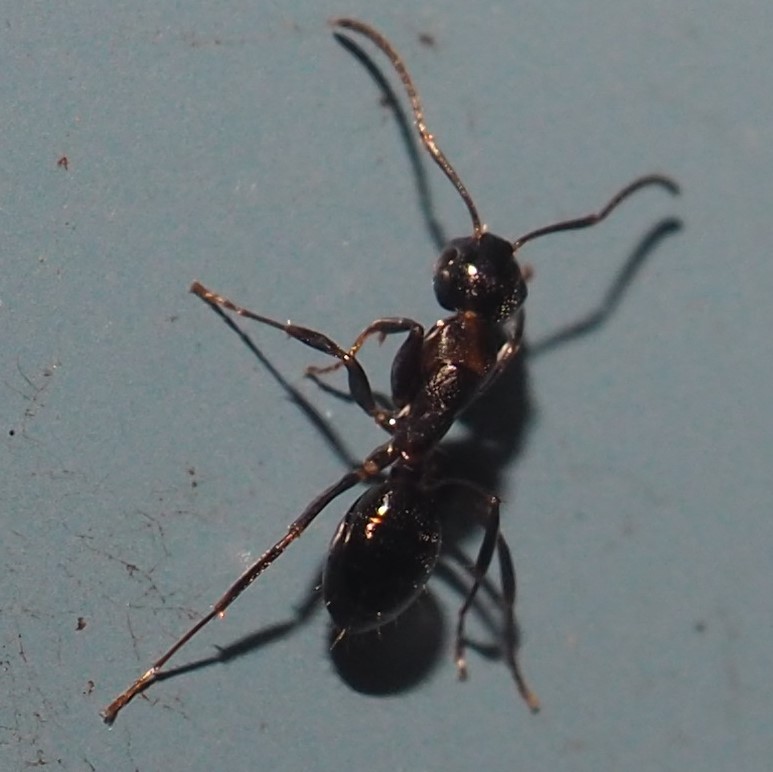
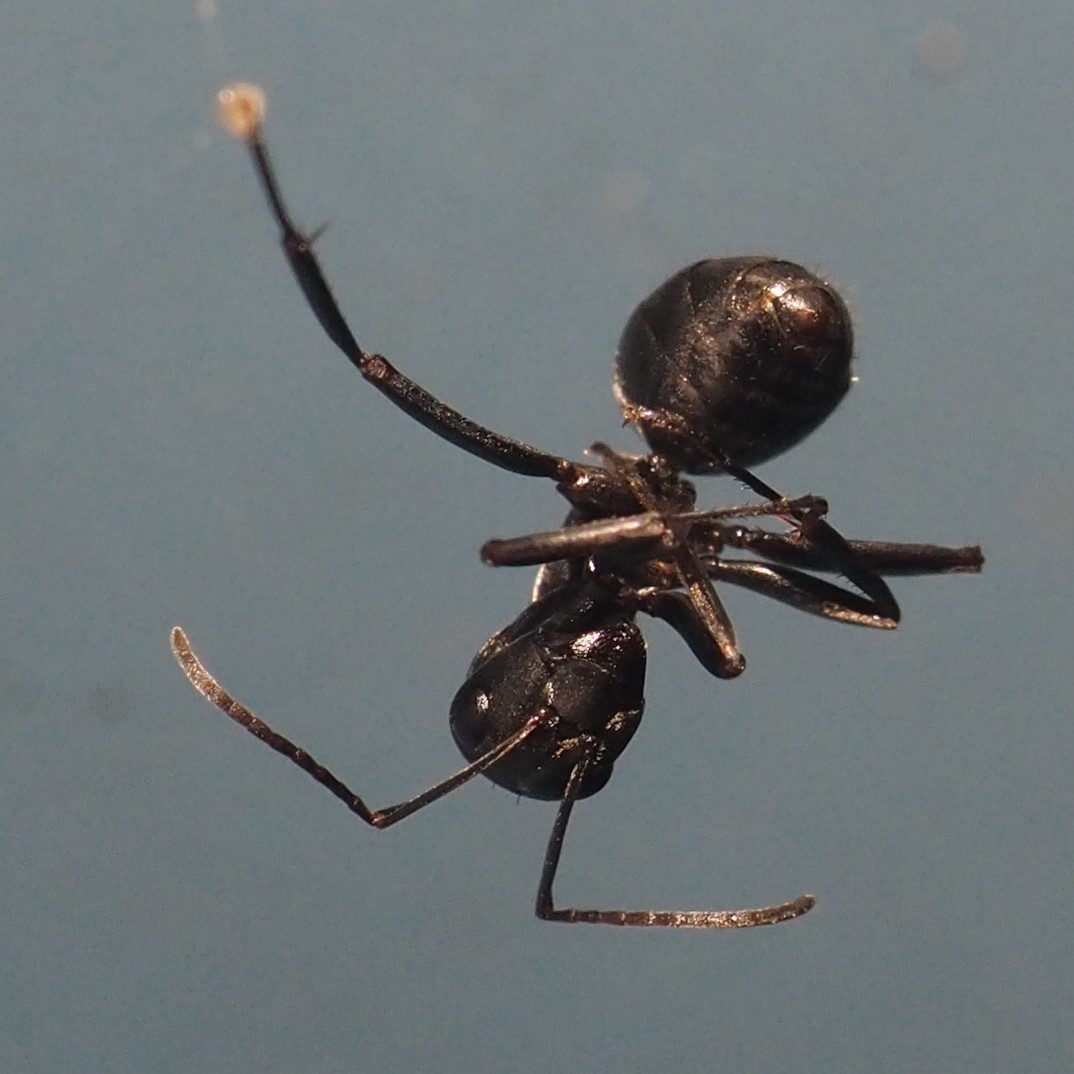
Were there any Bees? Why, yes, since you asked, there WERE! This little Bumblebee was enjoying the Goldenrod. And I learned that the big Bumblebee last week was a Common Eastern Bumble Bee (Bombus impatiens).
(Bombus impatiens)
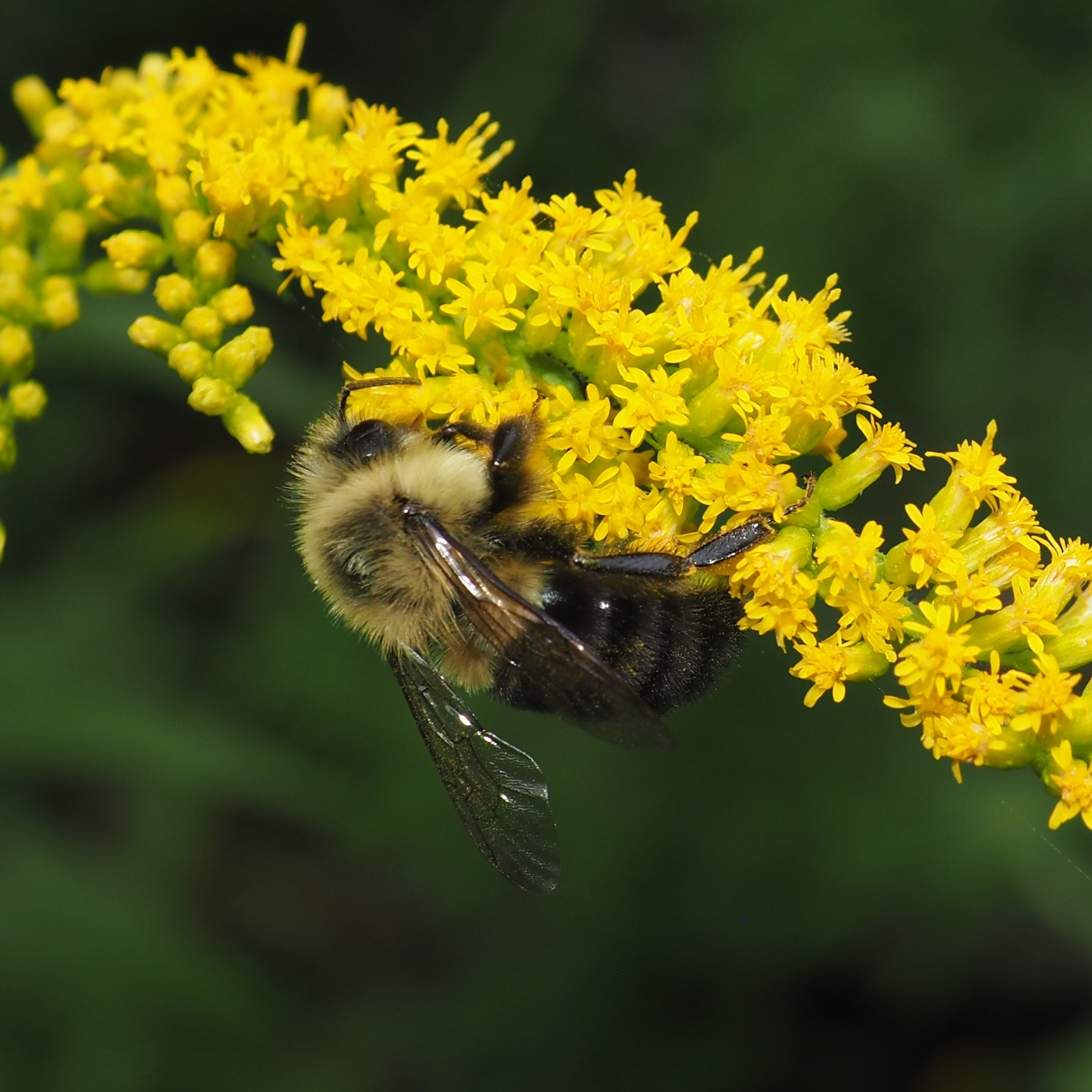
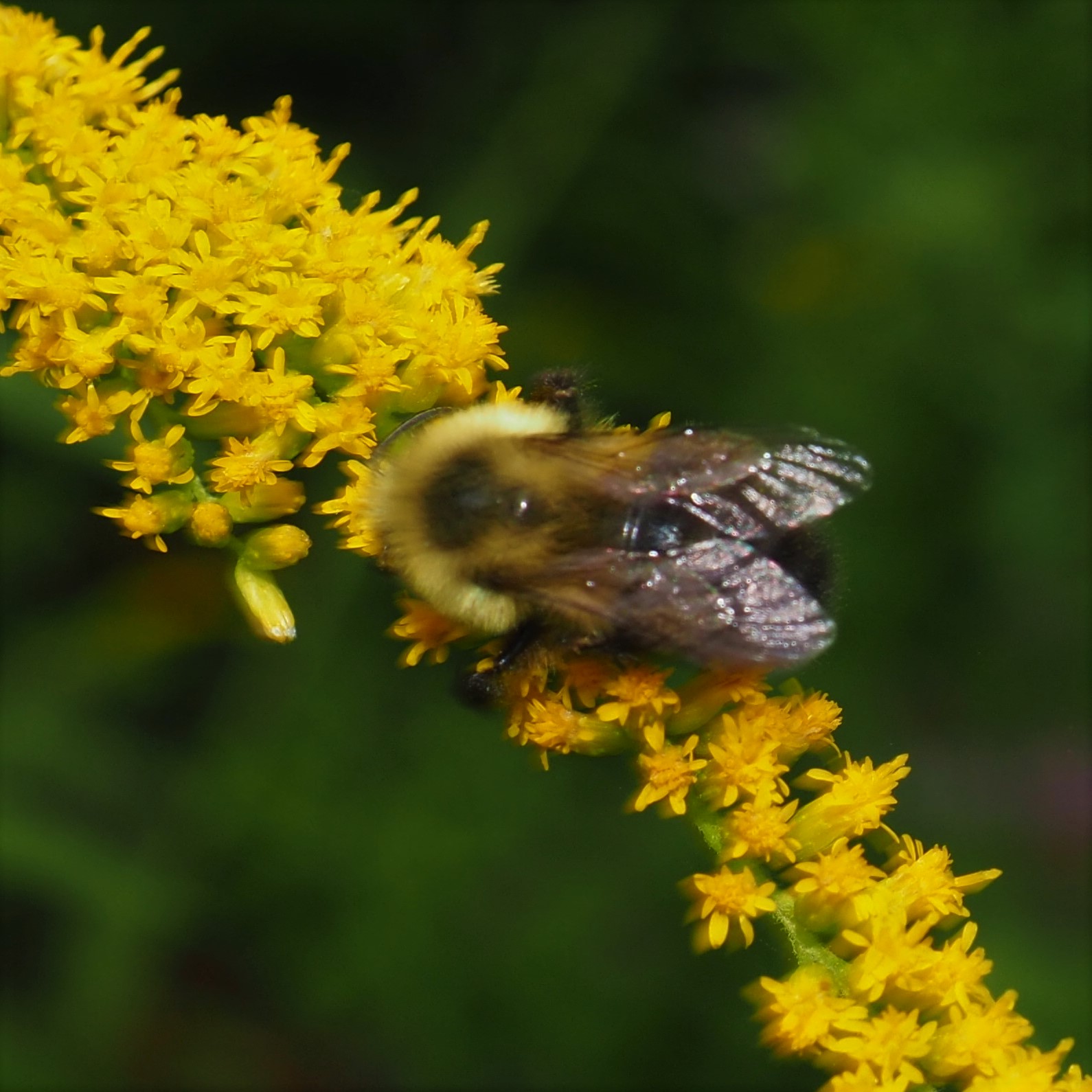
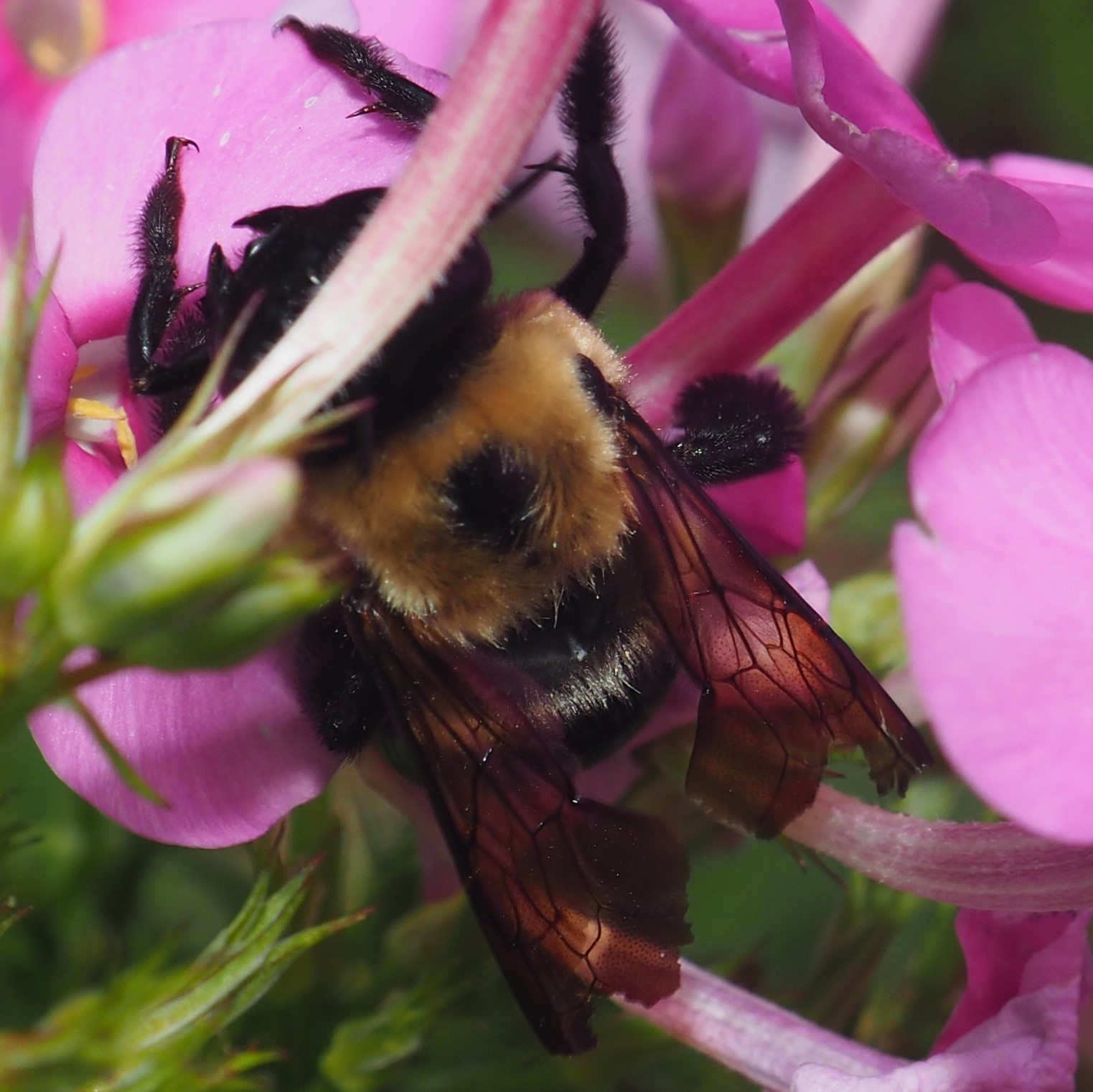
The gorgeous Locust Borer Beetle still loves its Goldenrod. Second is a Beetle that I have seen often but always see it as a new find - Lechriops oculatus! And of course, the ever-present Flea Beetle. It looks about a hundred times bigger in picture 3.
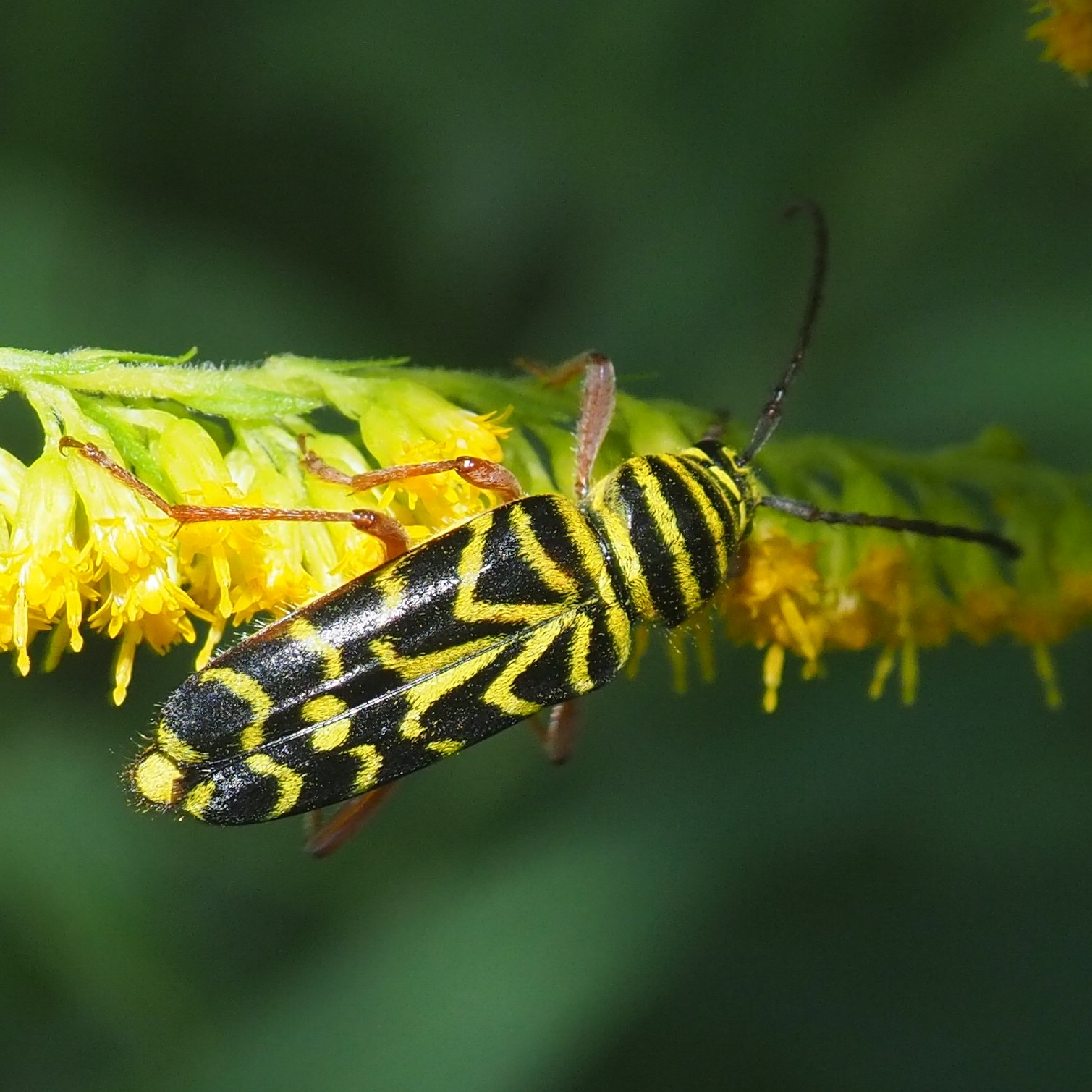
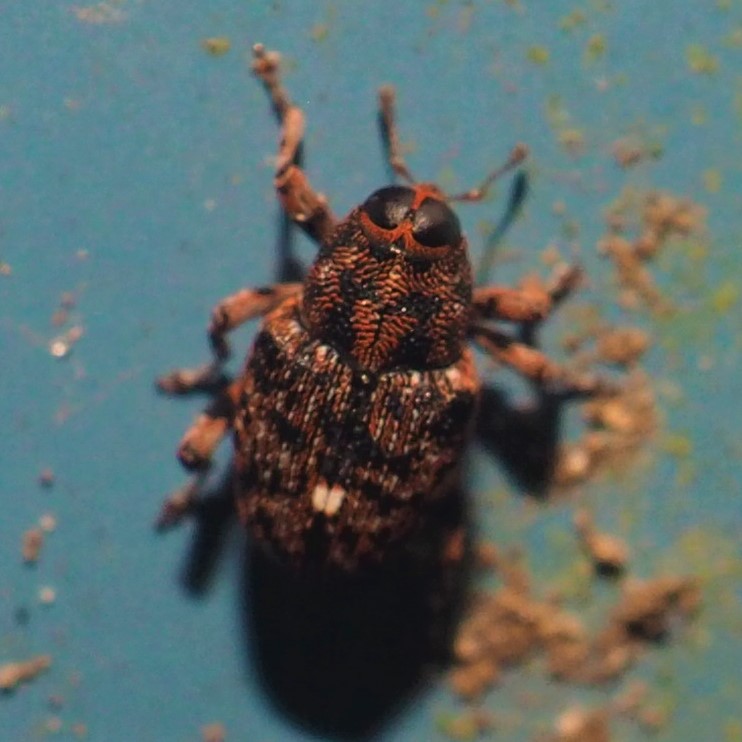

Another mysterious black Beetle, a Redbud seed-eater, and a beautiful Asian Lady Beetle.
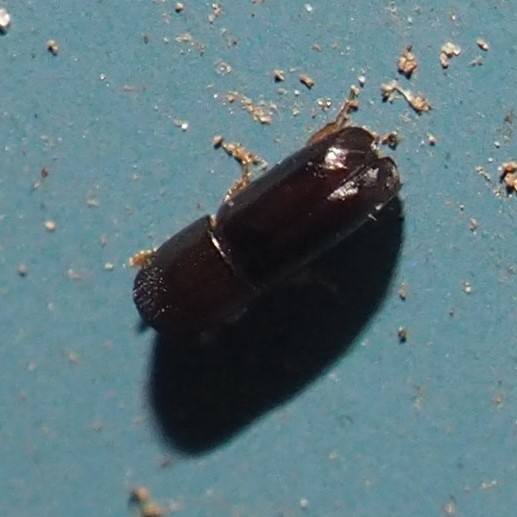
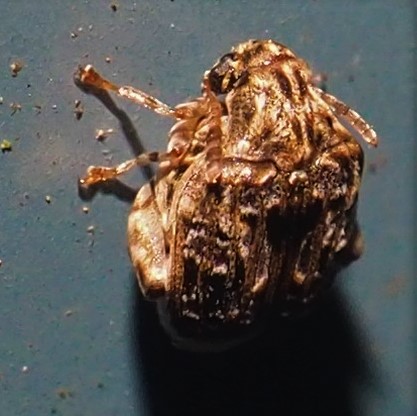
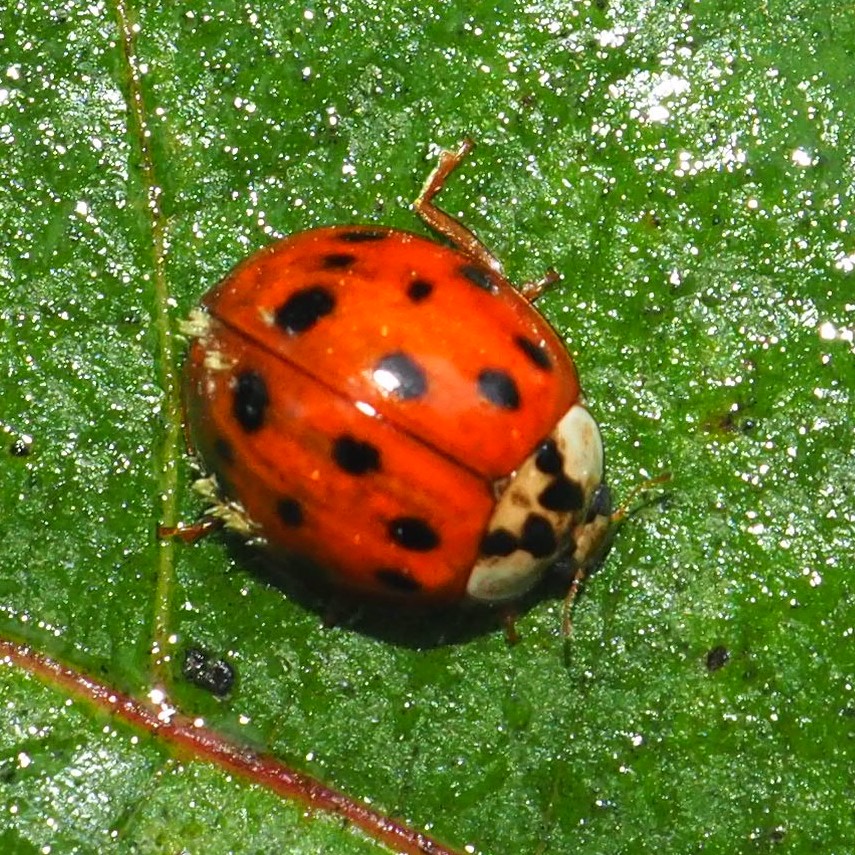
There actually are Bugs that exhult over the new Goldenrod! The first is an Ambush Bug, probably the Pennsylvania Ambush Bug. Look at the mitts on it - the better to grab something many times its size! Next is a Plant Bug. Third is our friend the Two-Marked Treehopper. It probably didn't REALLY head for the Goldenrod, but fell from a neighboring Redbud sapling.
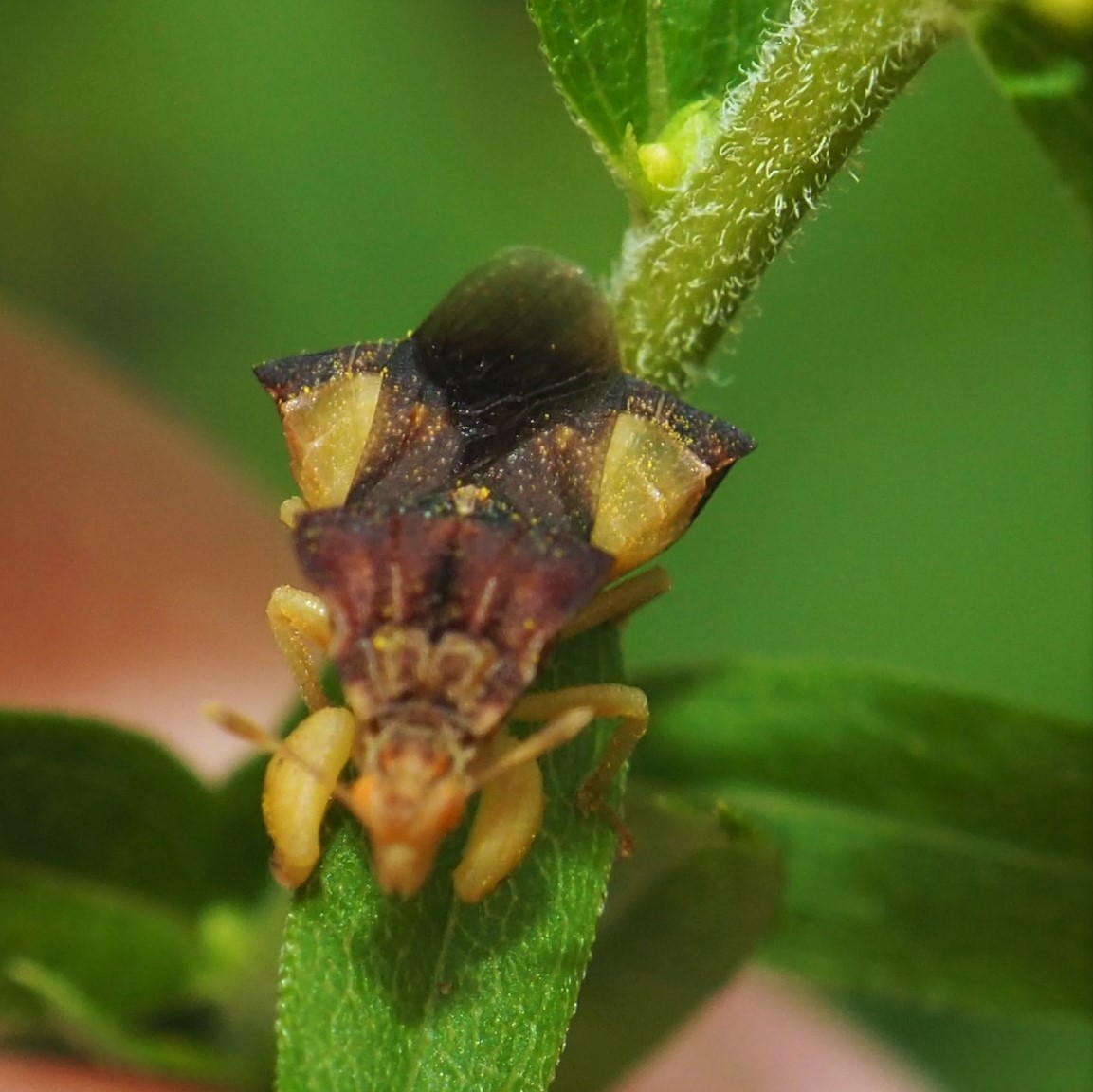
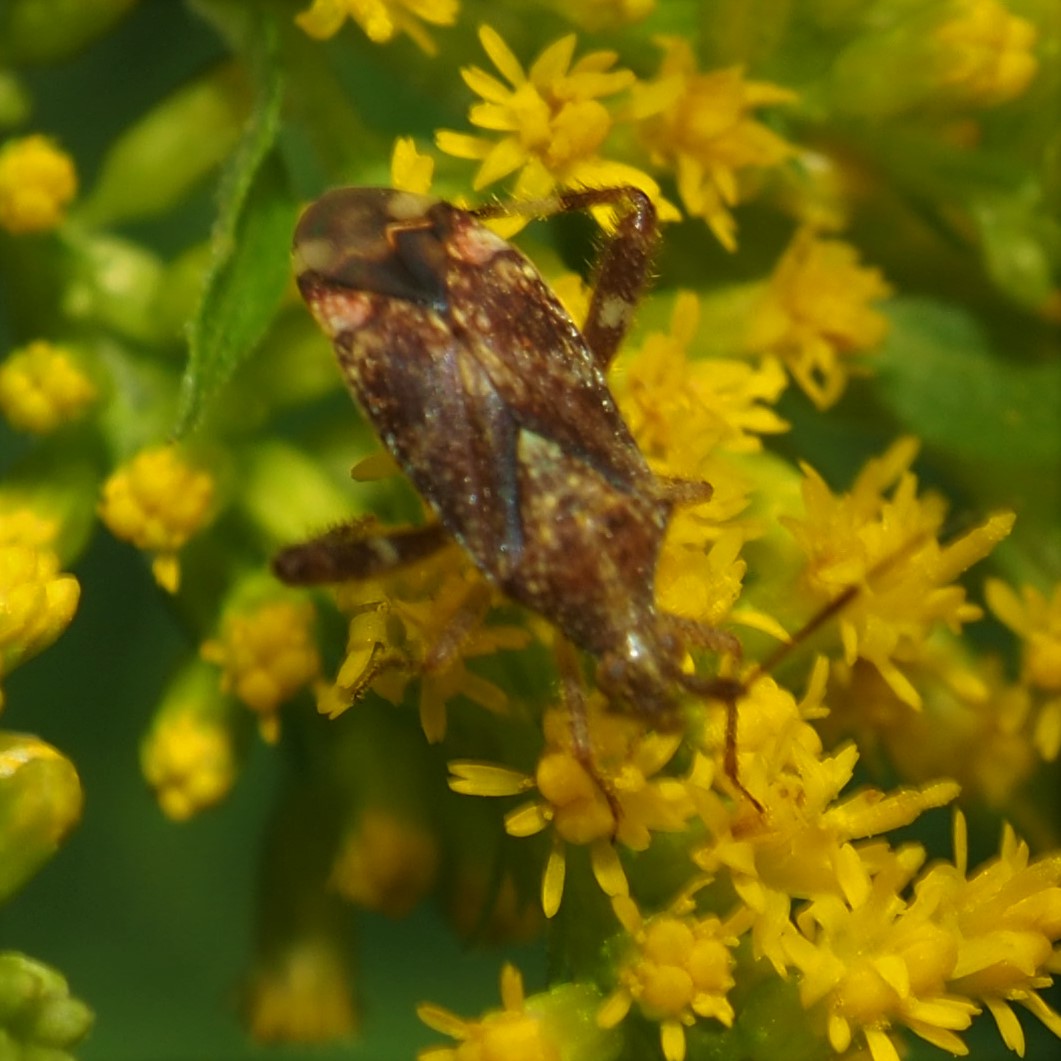
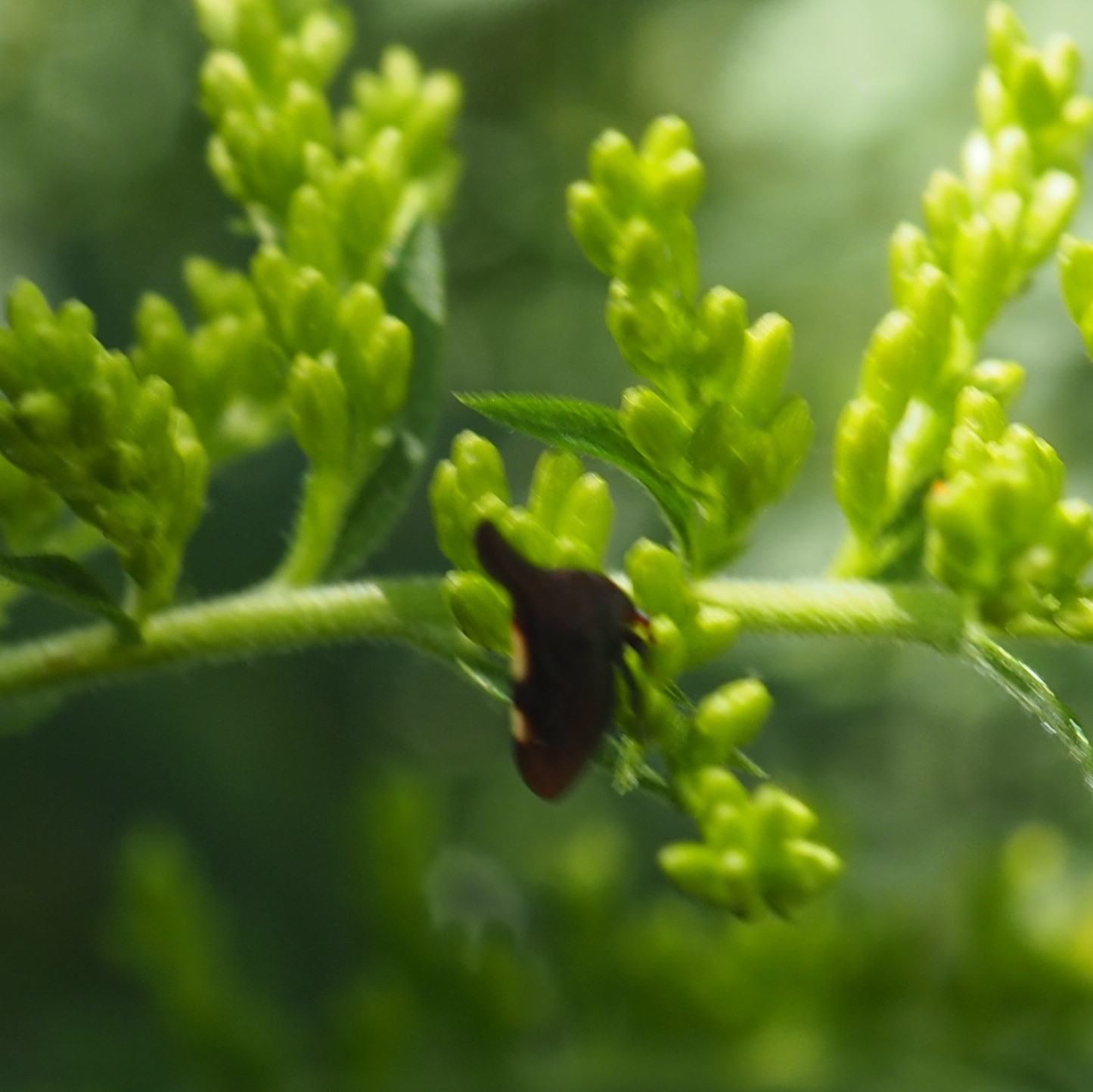
I hope you remember the tiny Thread-legged Bug that suddenly appeared the week starting with August 14th. I was sure it must be Empicoris errabundus, since that's the only really small Thread-legged Bug I ever see here. Well, this week it appeared on August 31, and sure enough, it's our E. errabundus. I suspect the species name means that it wanders a lot, because it DID wander from place to place.
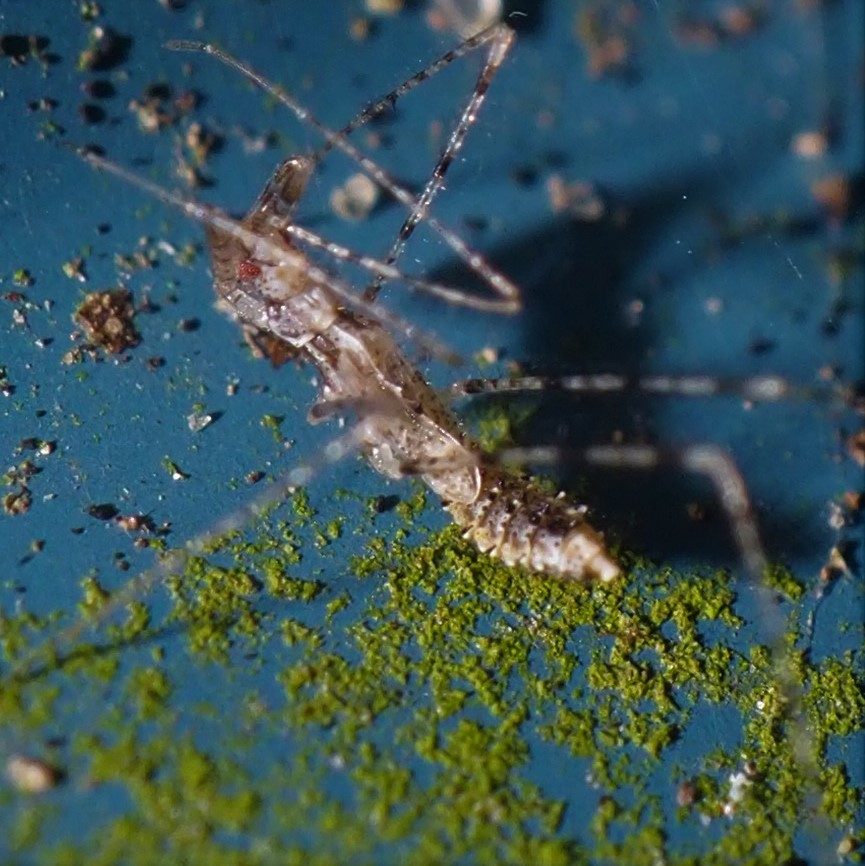

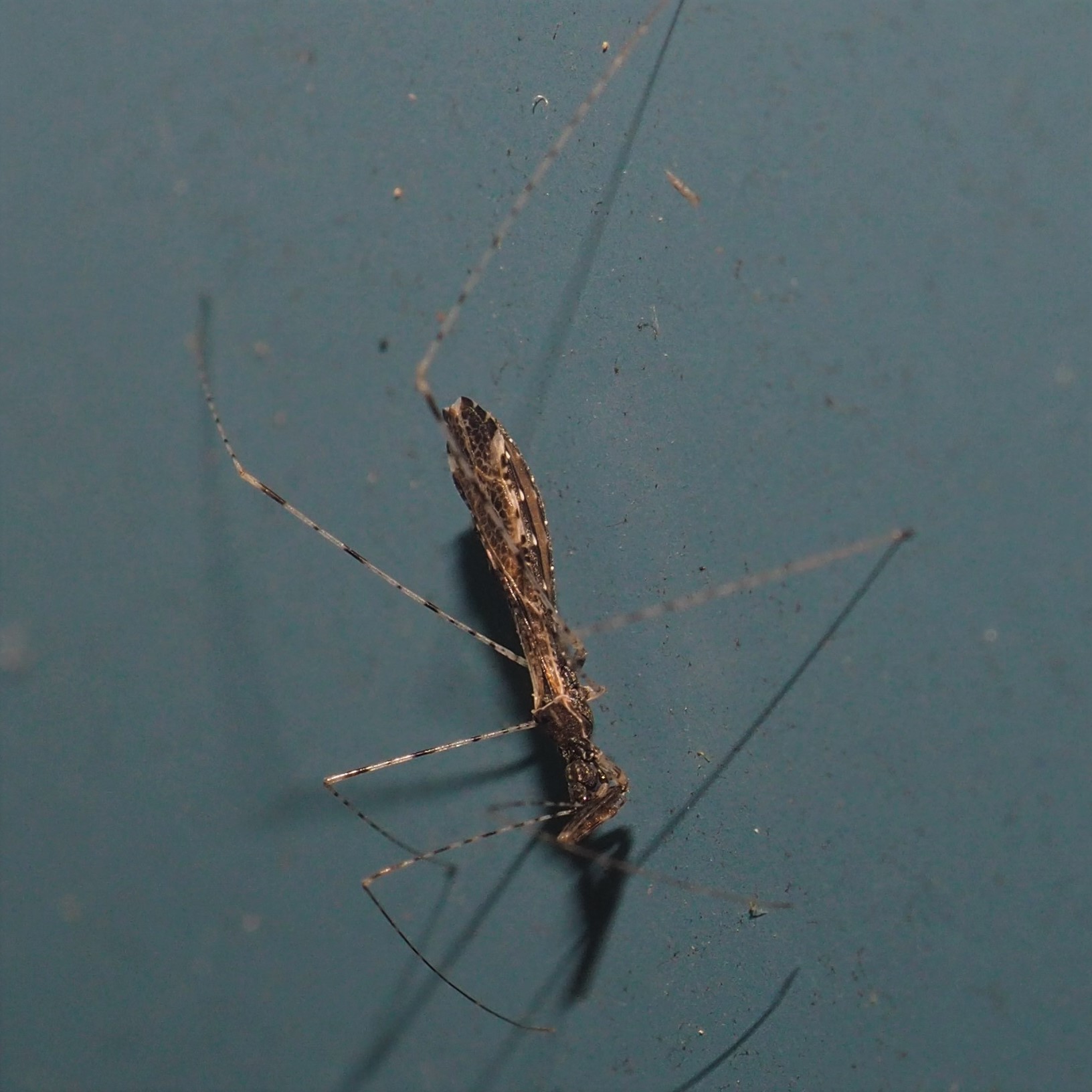
Now we have seen two Bugs in the Assassin Bug Family (Reduviidae): the Ambush Bug and the Thread-legged Bug. Dare we hope to see another member? Why yes, the nymph of the Pale Green (lurid) Assassin Bug, Zelus luridus, has been all over this week. Actually make that four of them - remember last week's other Thread-legged Bug (picture 2)? Not a vegan among all these!
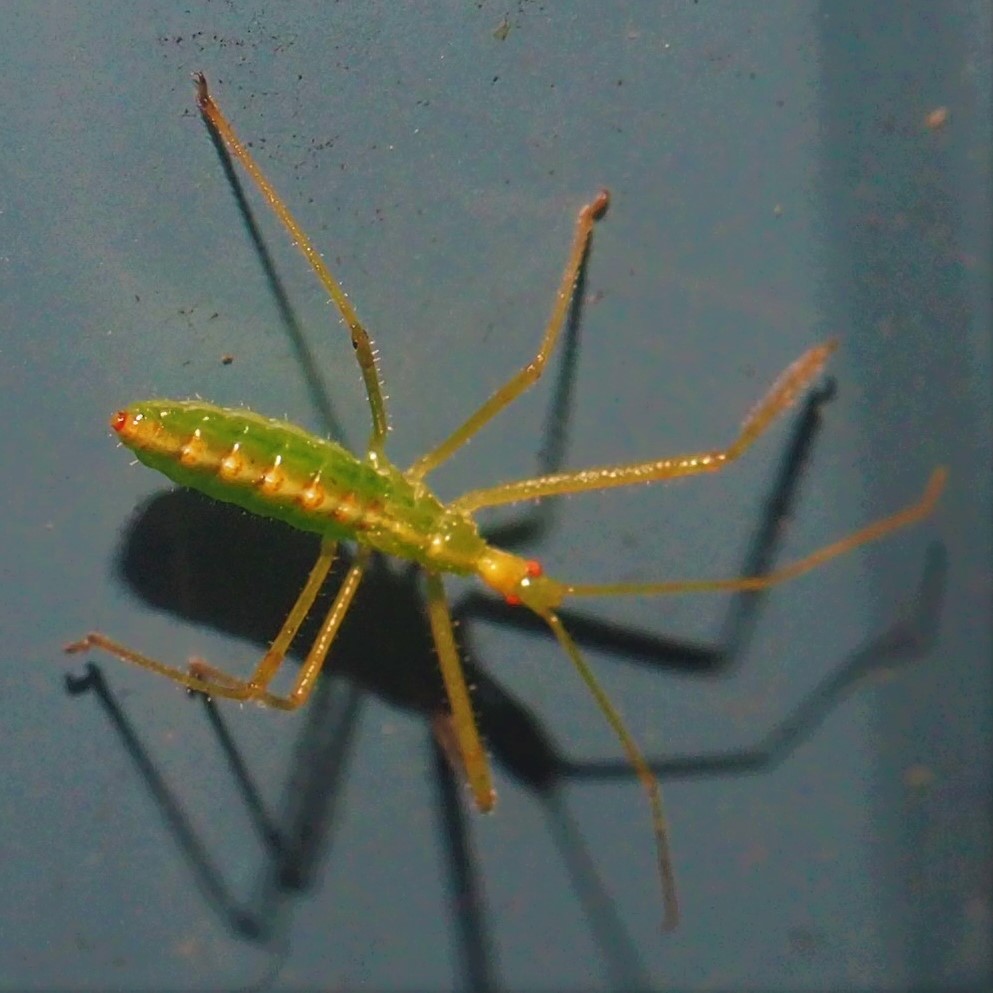

Let's look at another big group of Bugs - the Leafhoppers! First we have Erasmoneura vulnerata; then Erythroneura aclys; then Jikradia olitoria, the "Coppery Leafhopper" - that's one of the ones whose nymph is so sway-backed. It really does have almost a metallic-looking color to it.
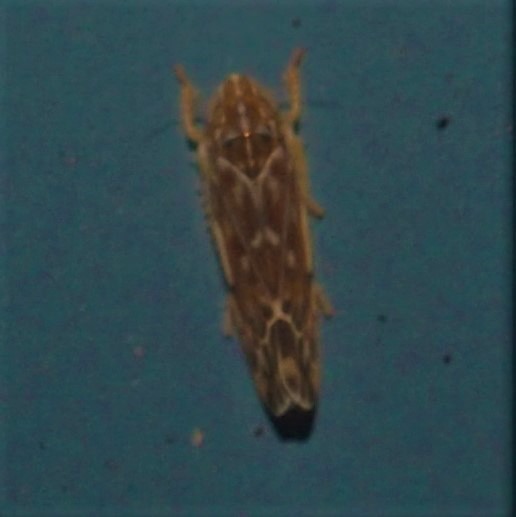
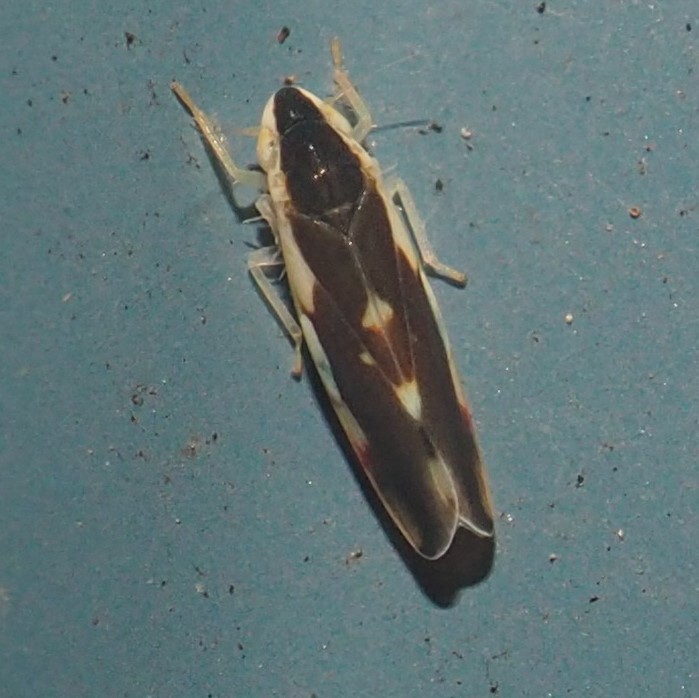
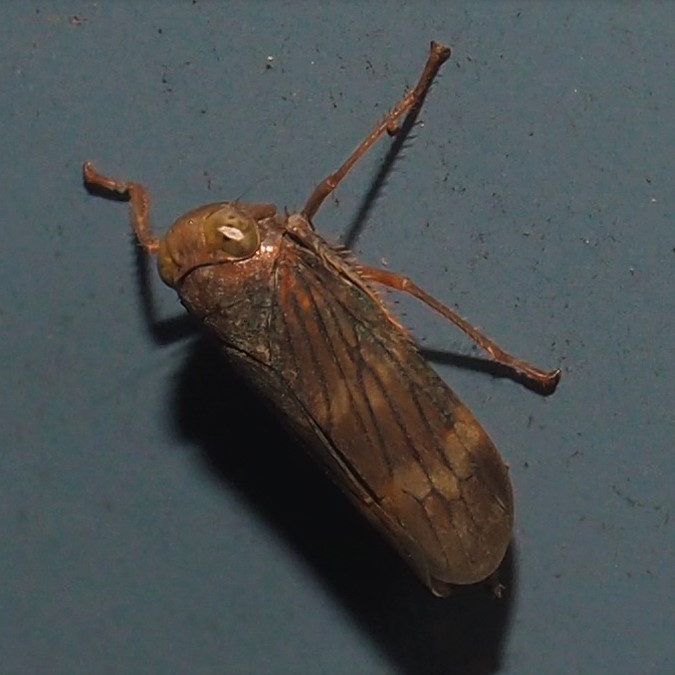
More leafhoppers: First is a member of the genus Eratoneura; then comes one that is sporty-looking enough to have its own species name: Eratoneura ardens (burning). Third belongs to genus Scaphoideus.
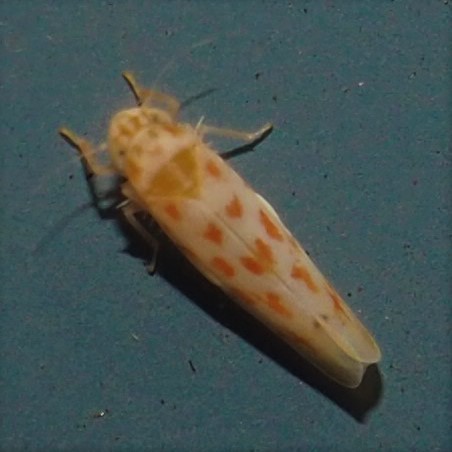
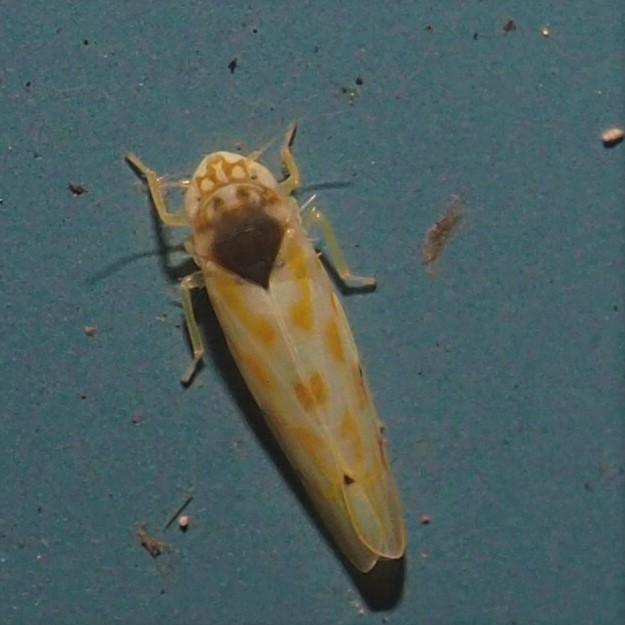

Here is another Plant Bug in two poses, and that Alder Spittle Bug that we've seen so often this summer.
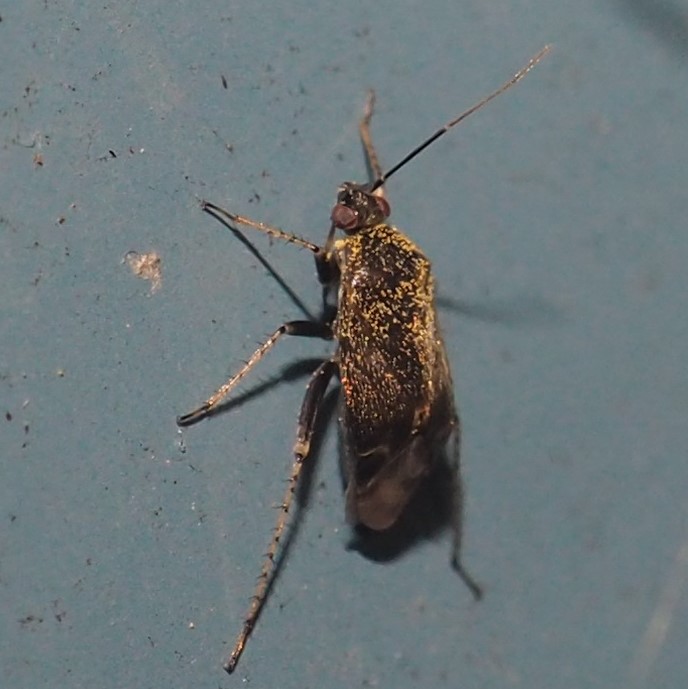

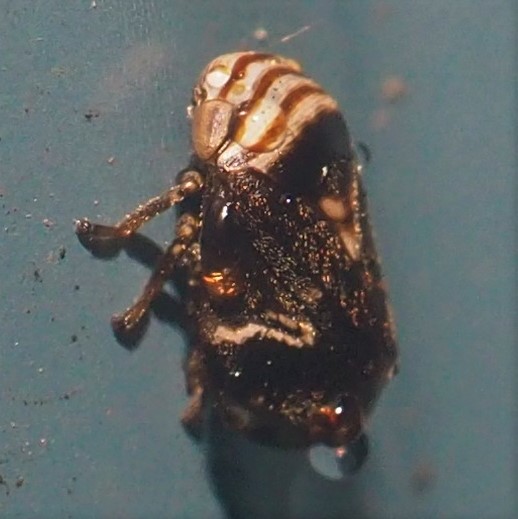
Now for our Barklouse population. Here is a nymph of Echmepteryx hageni, followed by two lucky shots in which the outer covering is less diffuse (Scaly Barklouse is one of its names) than usual. Speaking of luck, one day I managed to see a nymph HOPPING along from spot to spot.
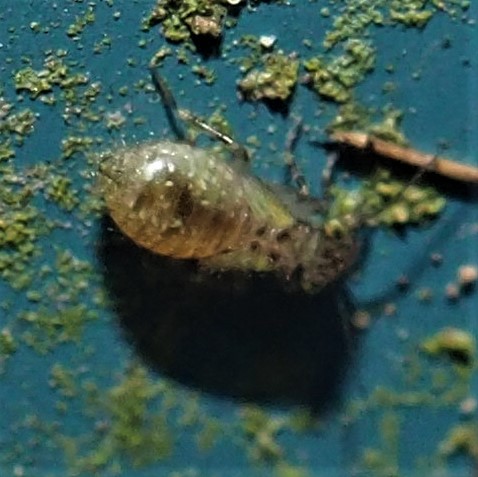
.jpg)

It was a strange week for Barklice. The Graphopsocus cruciatus seemed a bit less plentiful, but there were also multiple nests of eggs (picture 1). There were of course a good number of newly hatched adults, such as in picture 2, and a few nymphs.

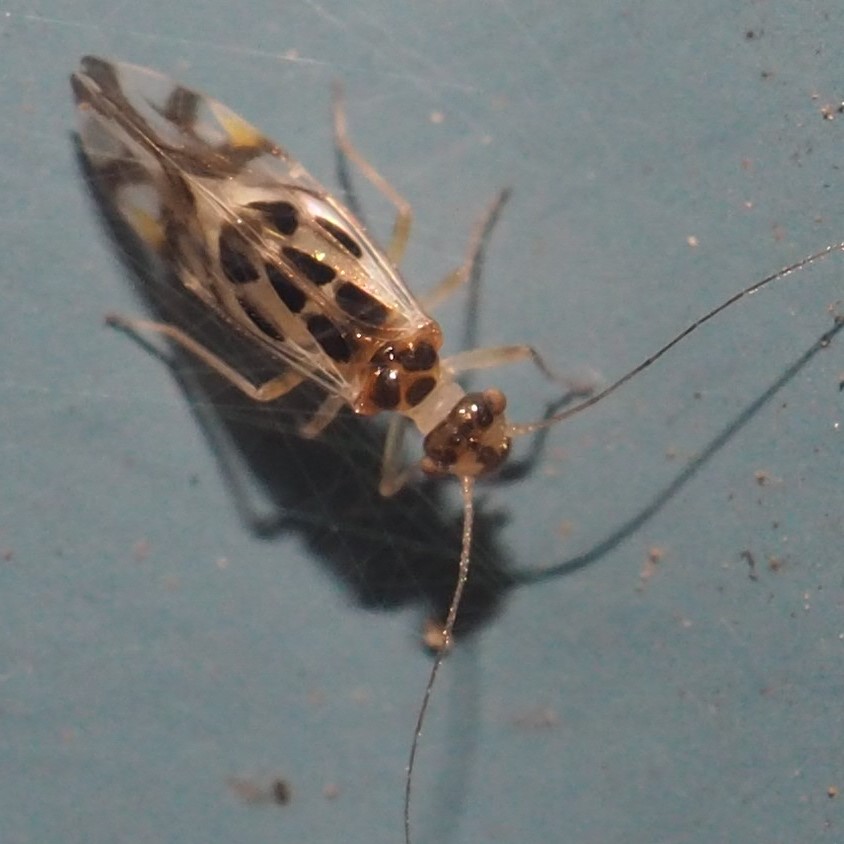
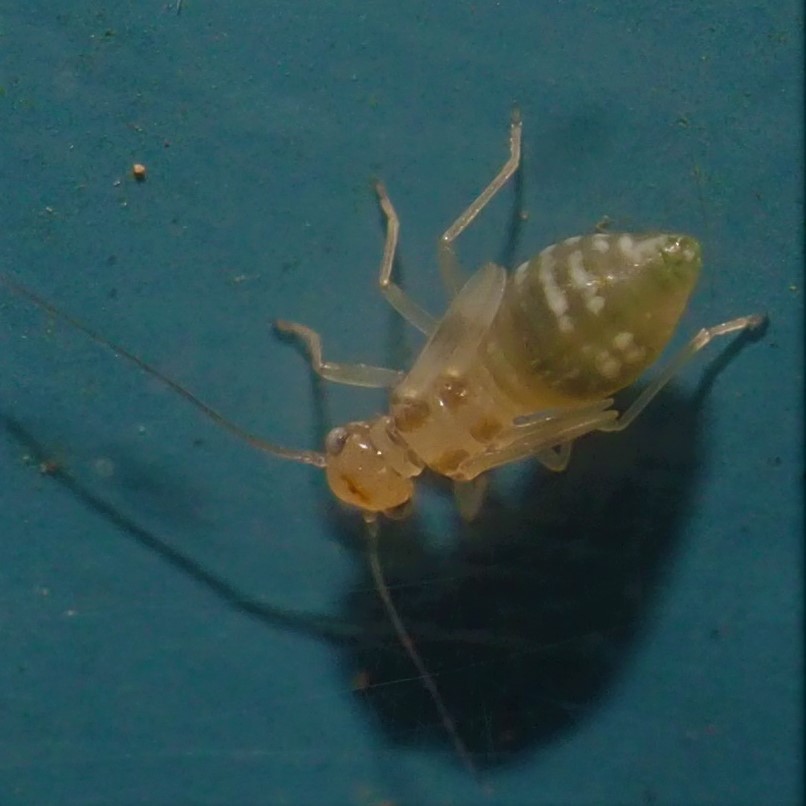
The Polypsocus corruptus are also in an in-between season. I saw nymphs all over the place. Picture 2 shows one with longer wings, which means it will be maturing into an adult soon. And guess what? Here on September 3 is our first Adult! The cycle goes on...
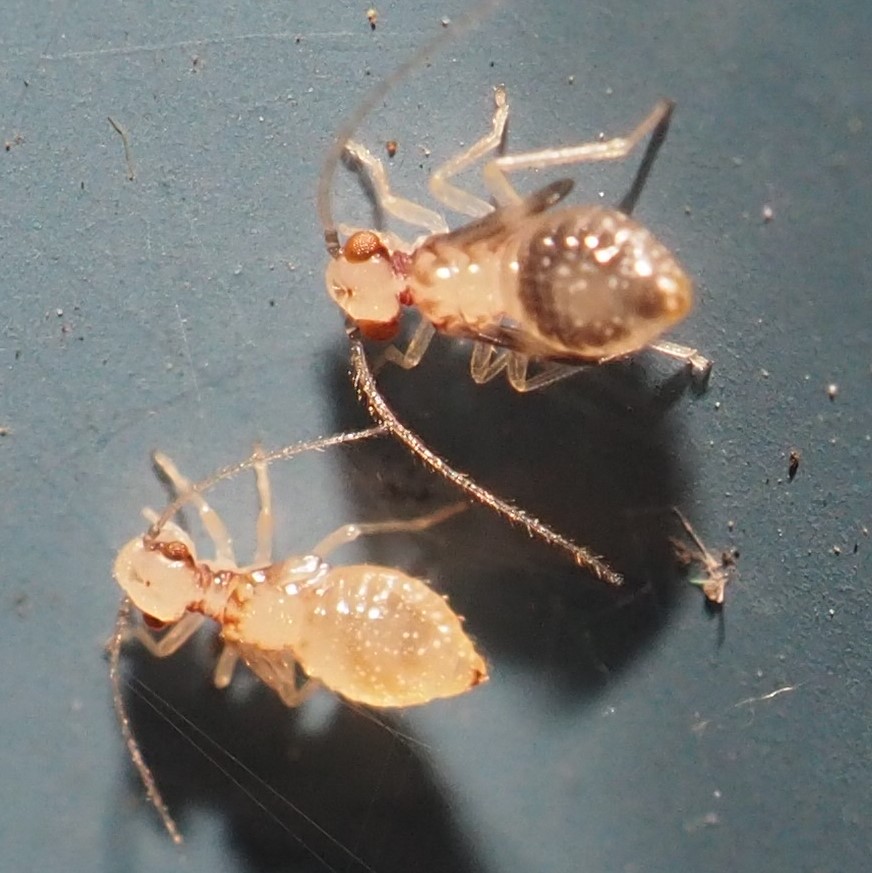
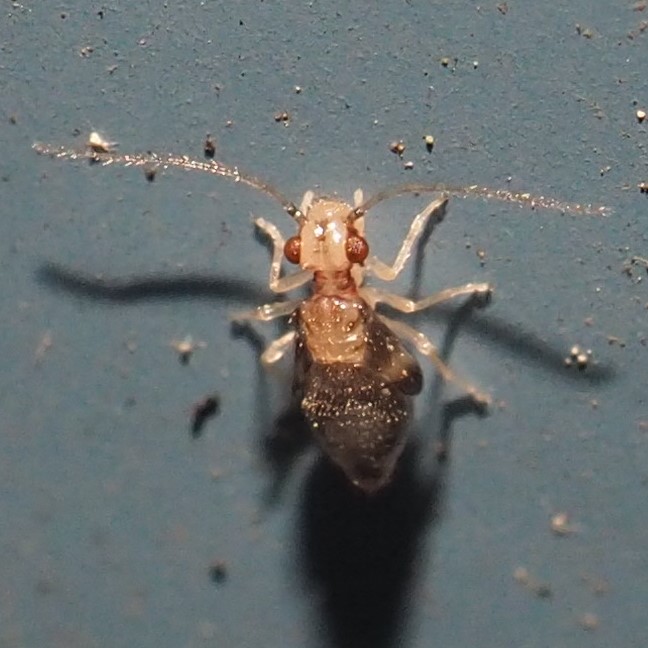
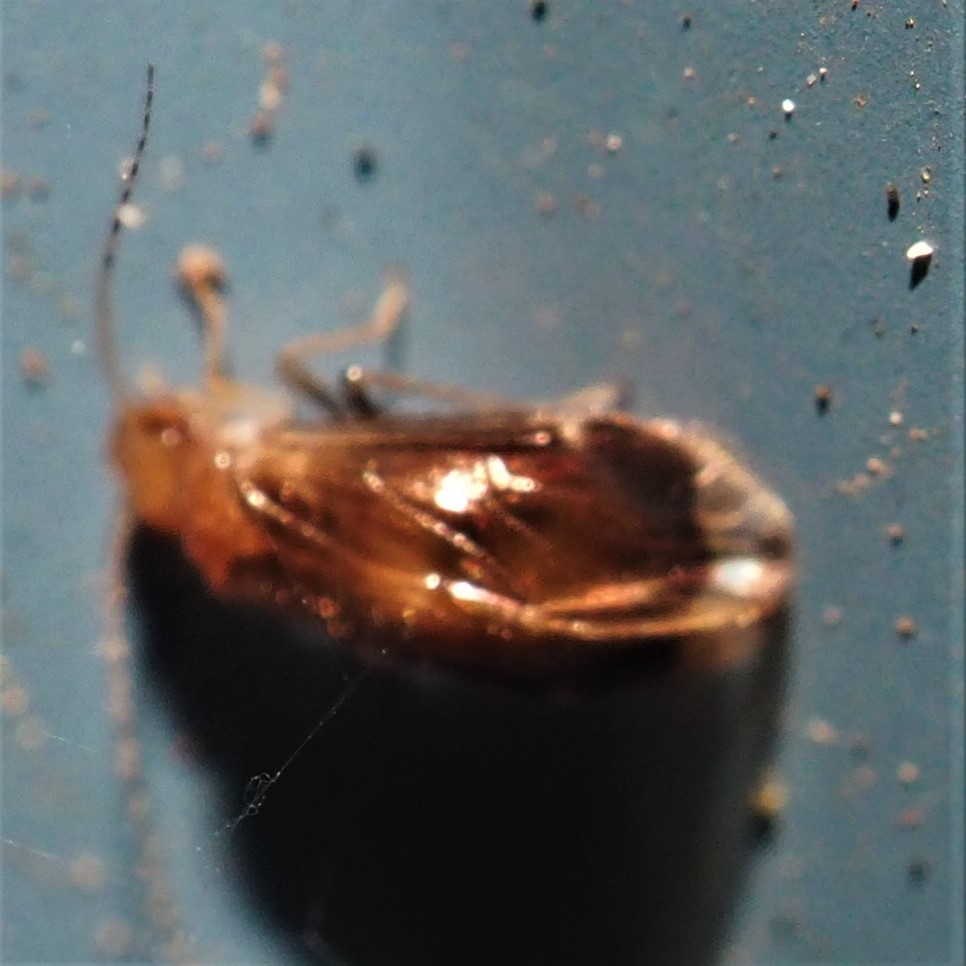
I did NOT see any Trichdenotecnum alexanderae or quaesitum this week. There were plenty of nymphs of Metylophorus novaescotiae, such as in picture 1. Number 3 here is the closest thing to either of the two Metylophorus genus Barklice (M. novaescotiae or M. purus) known to frequent Michigan. But it doesn't appear to be either of them, so it's an open question.
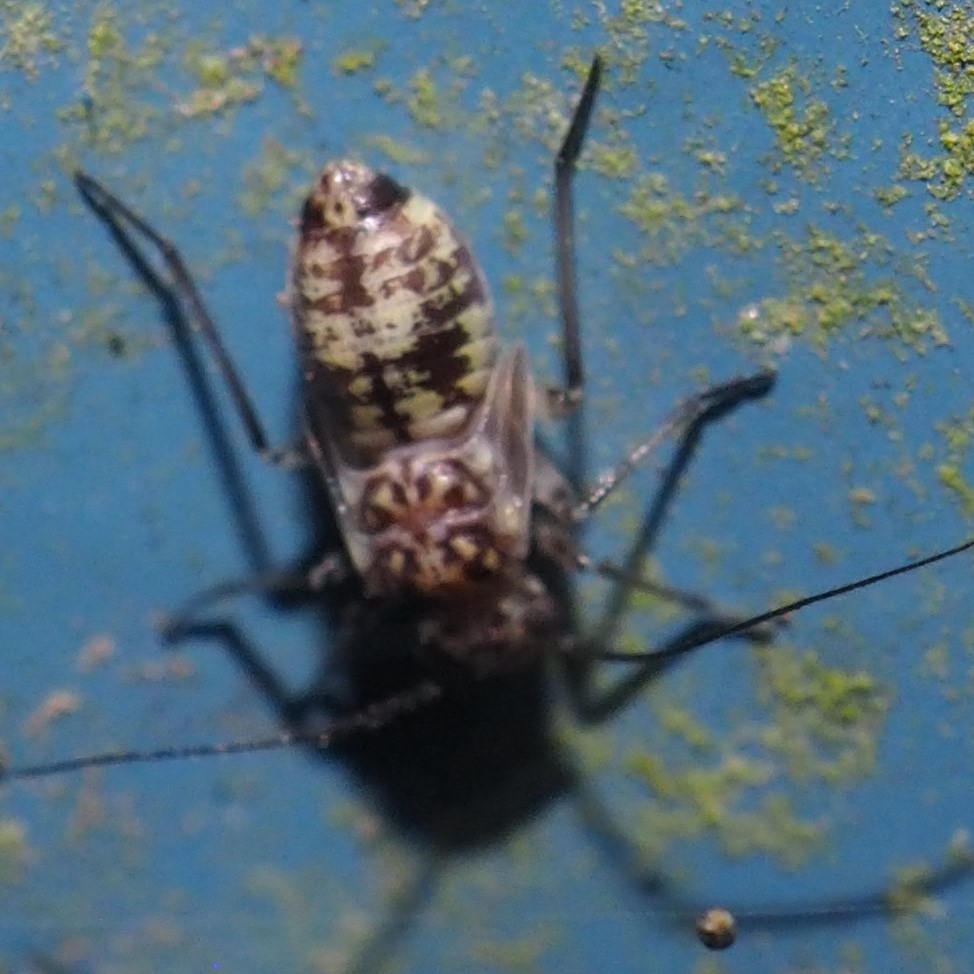
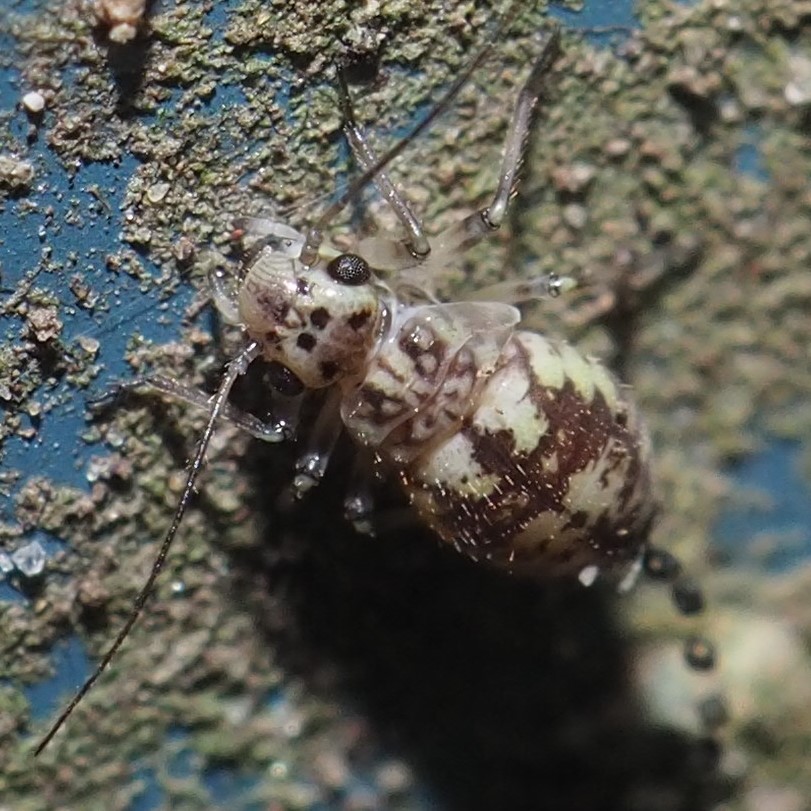
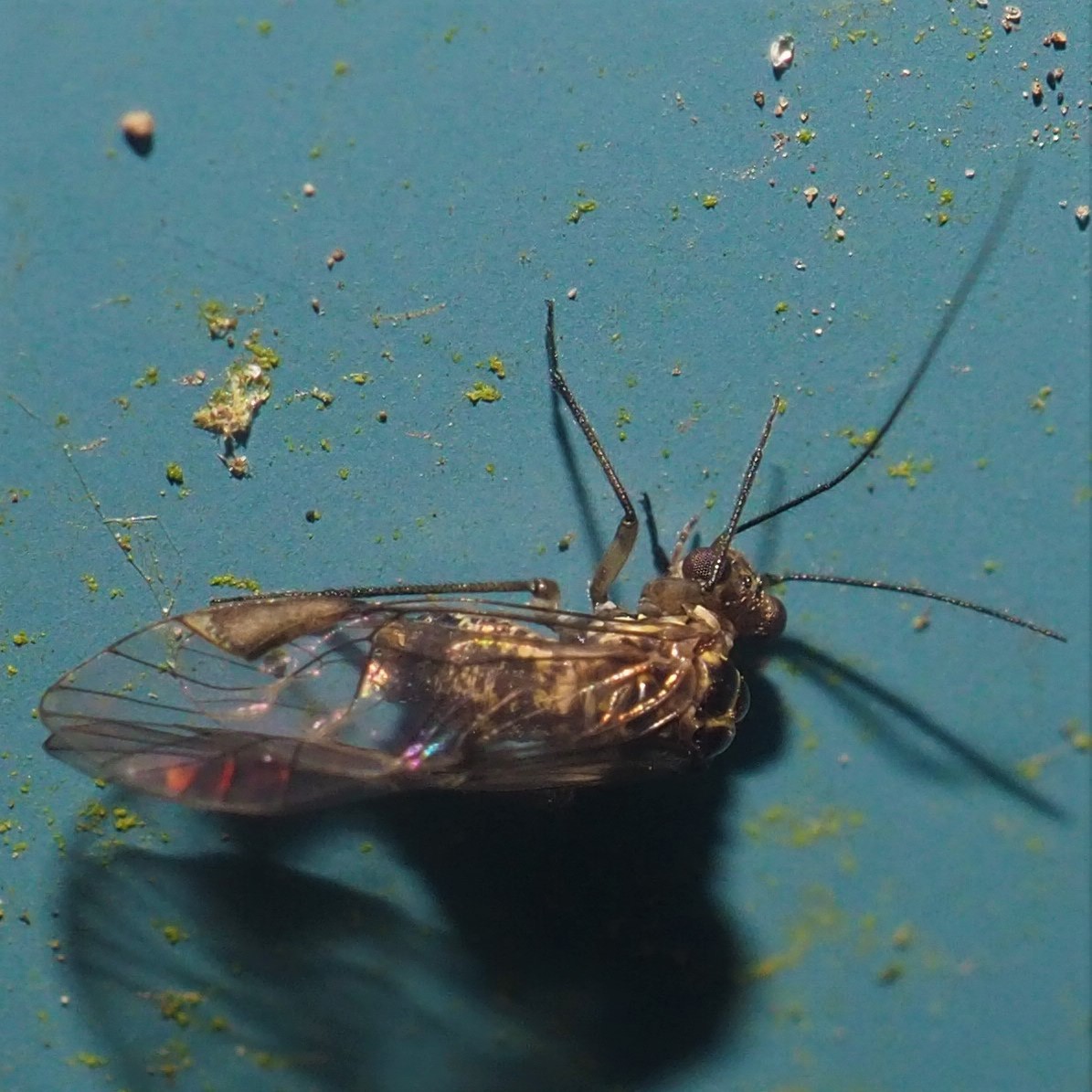
But speaking of open questions, I know you are eager to see what is going on with our Encrusted Barklouse nymphs, the tiny, almost invisible nymphs who seem to have a sticky substance that allows them to cover themselves with bits of their substrate. Well, I have been puzzling over this for a couple of weeks now, ever since realizing that some of the little blobs of "pebbles" are able to walk around. They are extremely small, almost invisible to my eyes. As of yesterday, there were three that I could just make out. First is the one that occupied panel 19 on the North Wall of my woodshop. She disappeared for a day or two and then I realized that she (I say "she" because I have begun to call her "Betty-lou") had moved to panel 20 on August 28. It had rained and a good deal of her substrate covering had been washed off. On August 31 I got a picture showing her wings had developed substantially (picture 3).
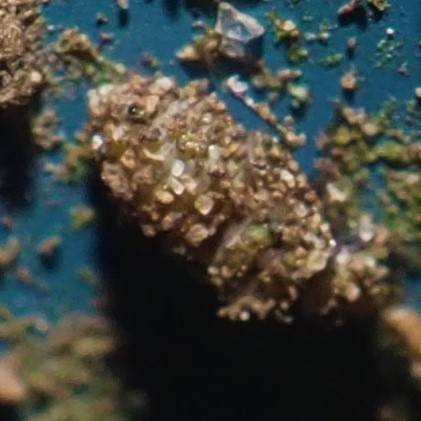
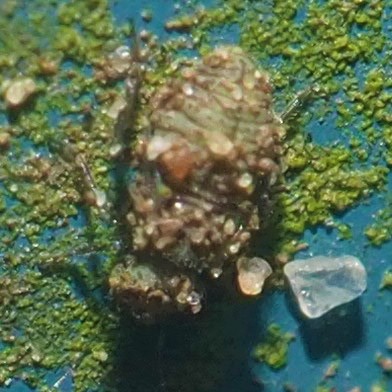

Other encrusted Barklice were found on panels 19 (where Betty-lou used to be) and panel 10! I had named the one on panel 10 Jean-Paul in addition to Betty-lou after the names on the mailbox in the Monty Python sequence in which the ladies row to France to seek out Jean-paul Sartre, those names being Jean-paul and Betty-lou Sartre. Sorry, Dick and Jane just didn't seem appropriate. Those two Barklice were photographed on September 2.
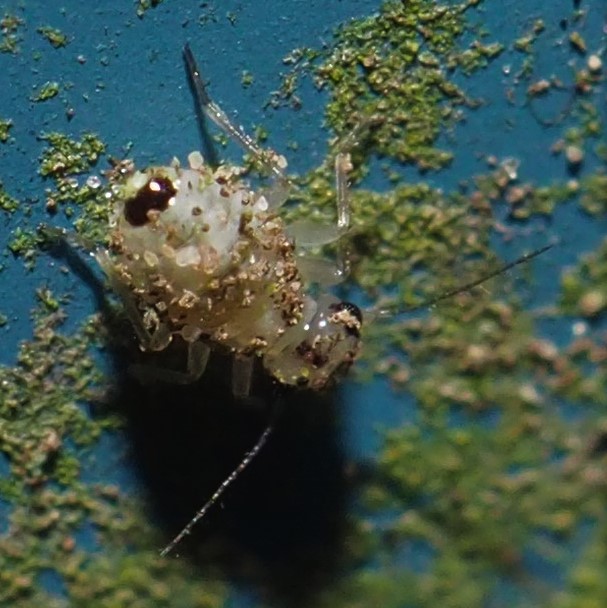
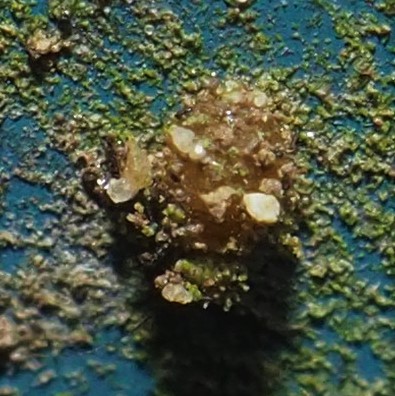
Betty-lou was quiet and didn't move on since August 31. On the evening of September 2, she moulted to become this adult Barklouse, pictured at 4:17 pm Eastern. (You can see the moult on the upper-left of picture 1.) At 6:21 pm, I got more shots, but she didn't seem to be getting easier to identify. The later pictures are of something in the Trichdenotecnum genus. On the morning of September 3, she had already flown.
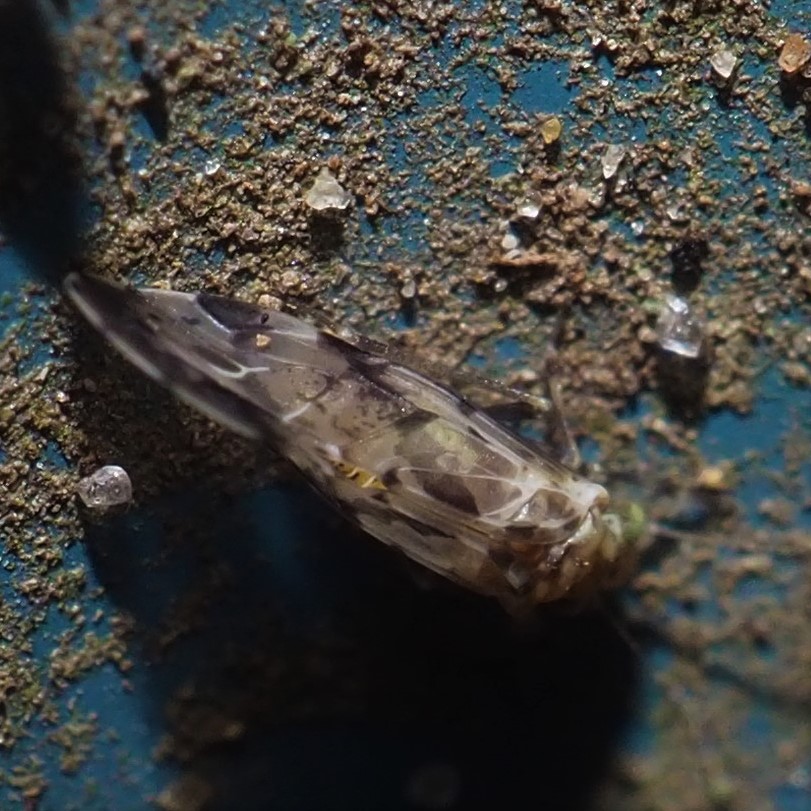
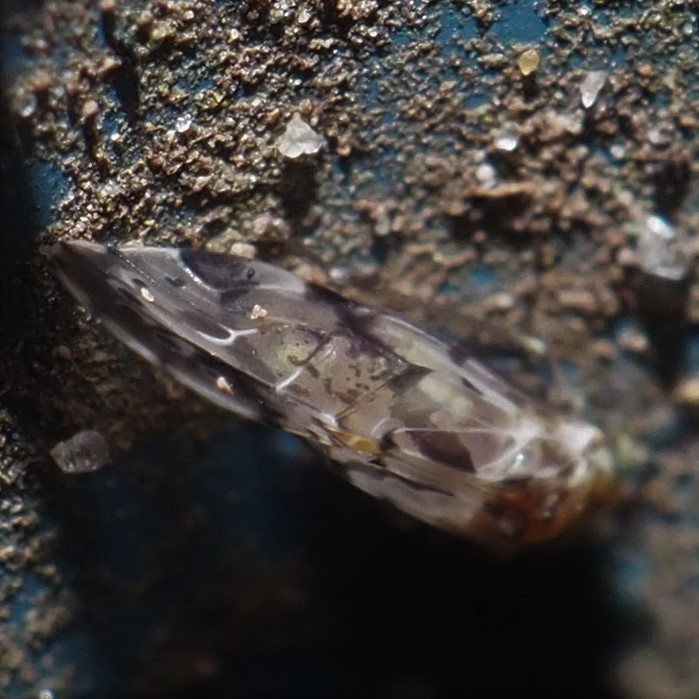
On the way to the Flies, we see an Autumn Meadowhawk. I had to put my hand close to it to get a better focus but it allows you to see how small this little Dragonfly is. The second picture isn't cropped so you can see how LOONG the legs of this Crane Fly are. Third is probably a Fungus Gnat (I wish they would change the name so we could see ho very beautiful these Flies are.
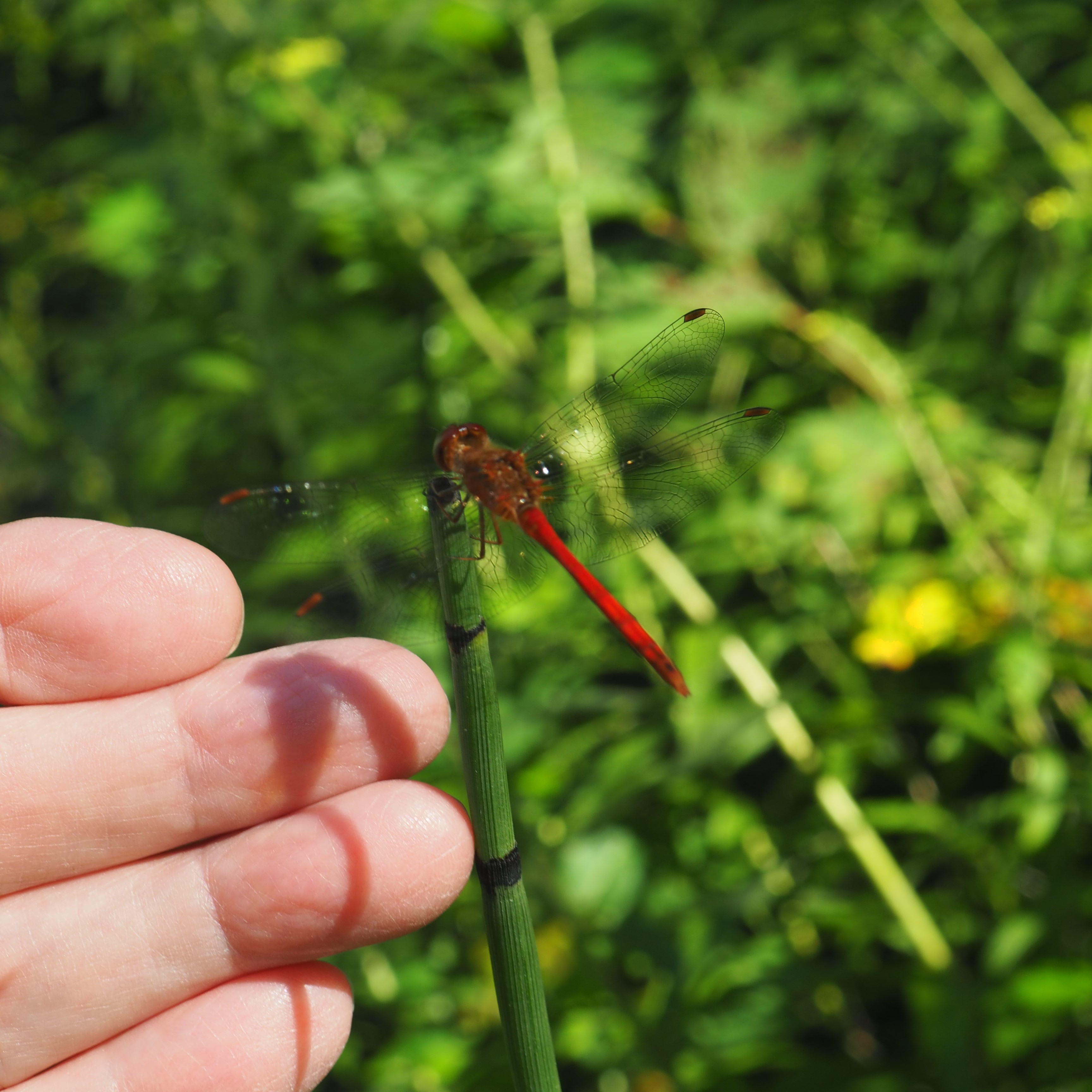
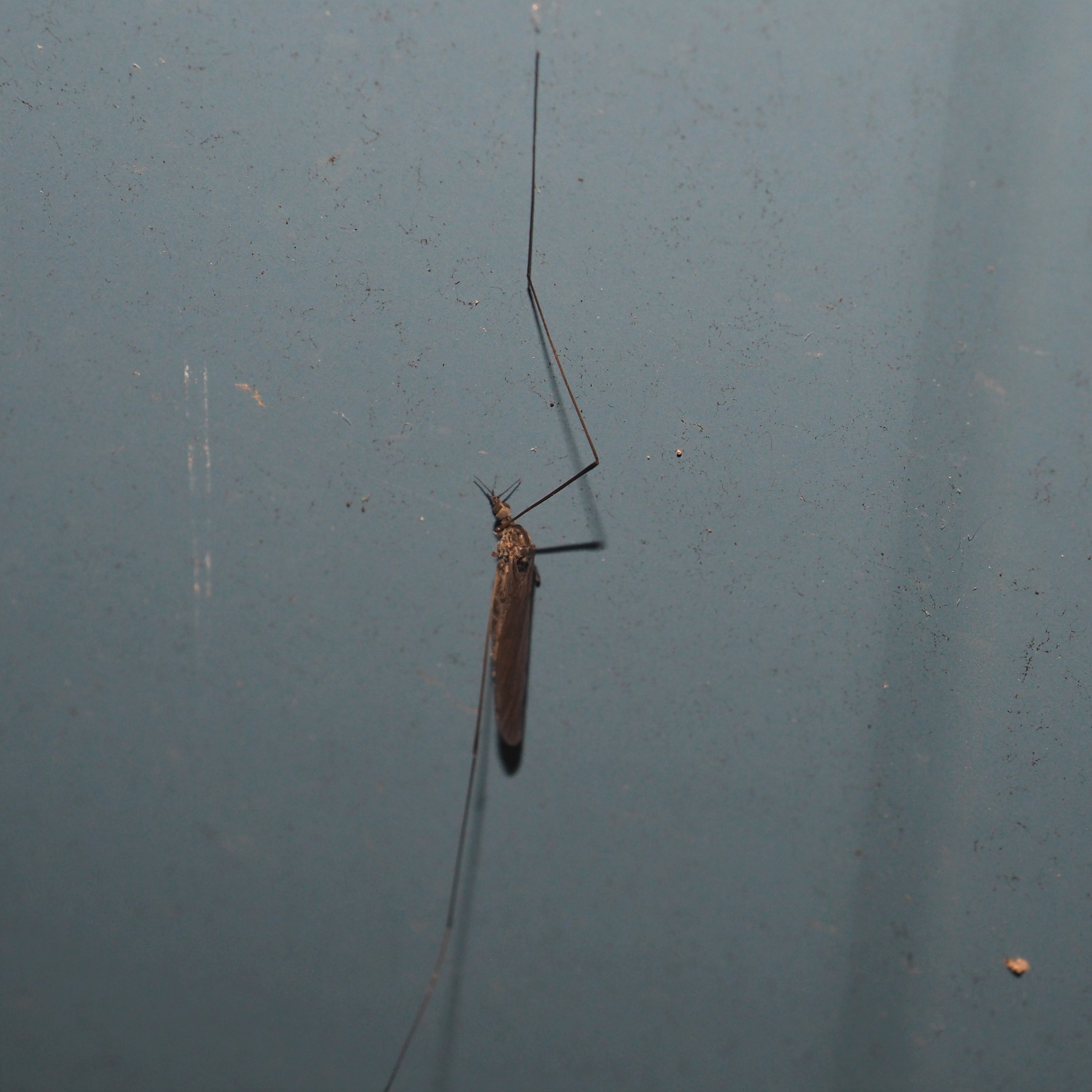

Here are two little Flies that almost glow. And a scruffy little Fly that would be scary if it were bigger. Look at those spiky legs!
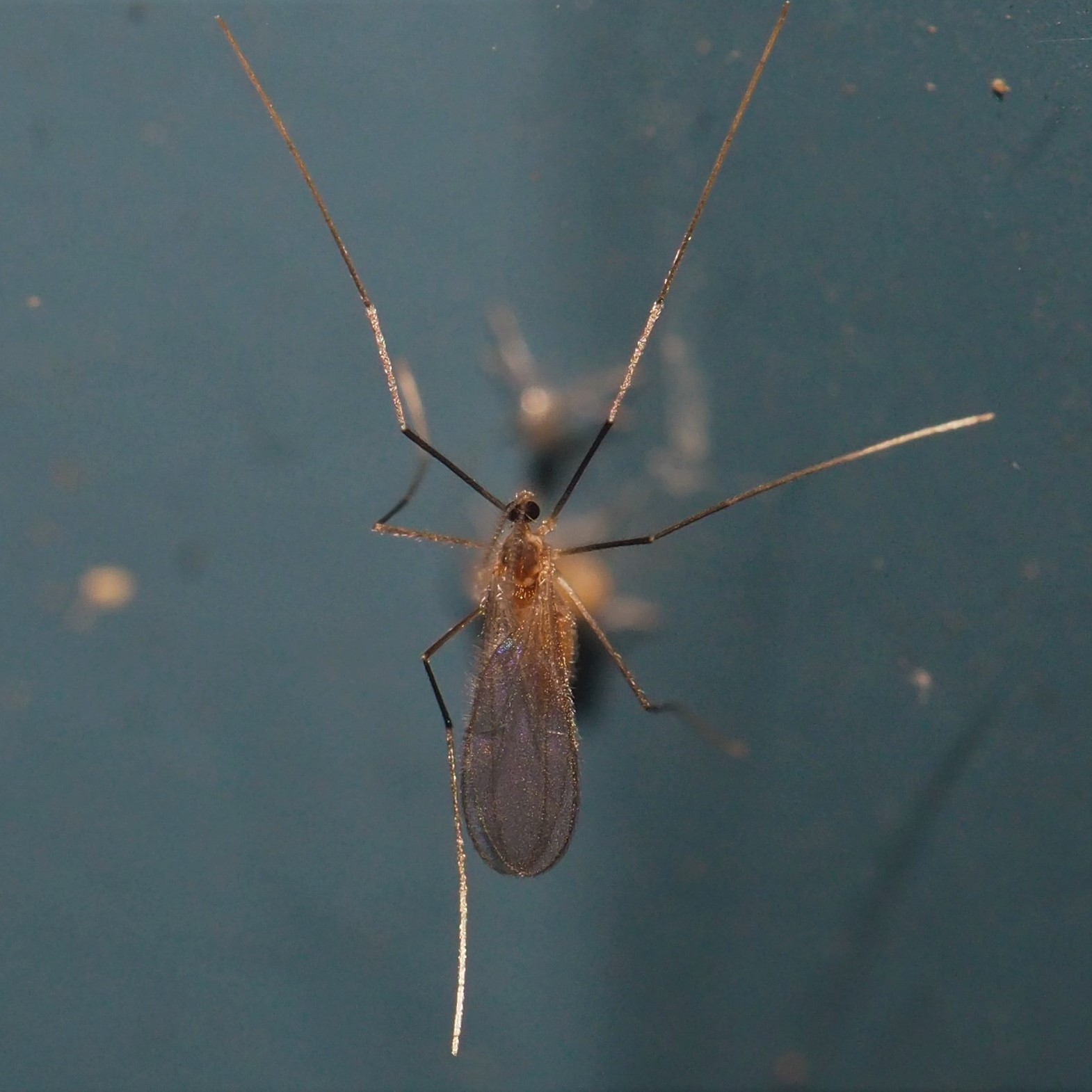
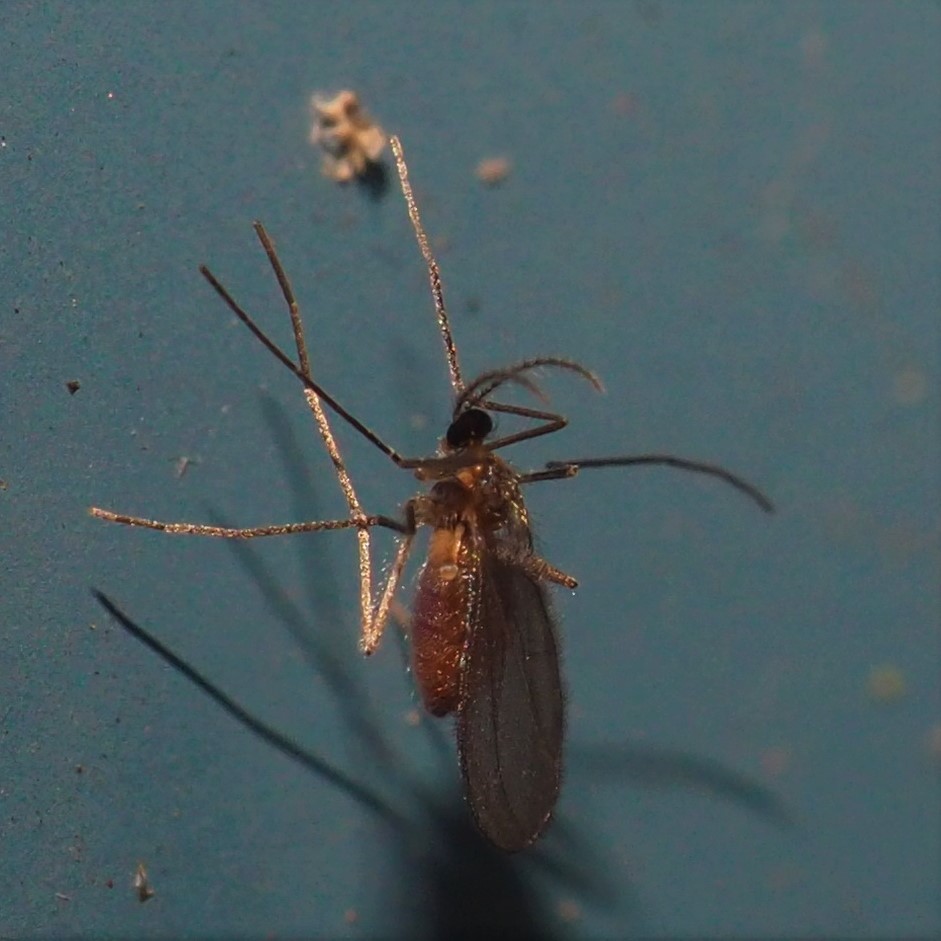
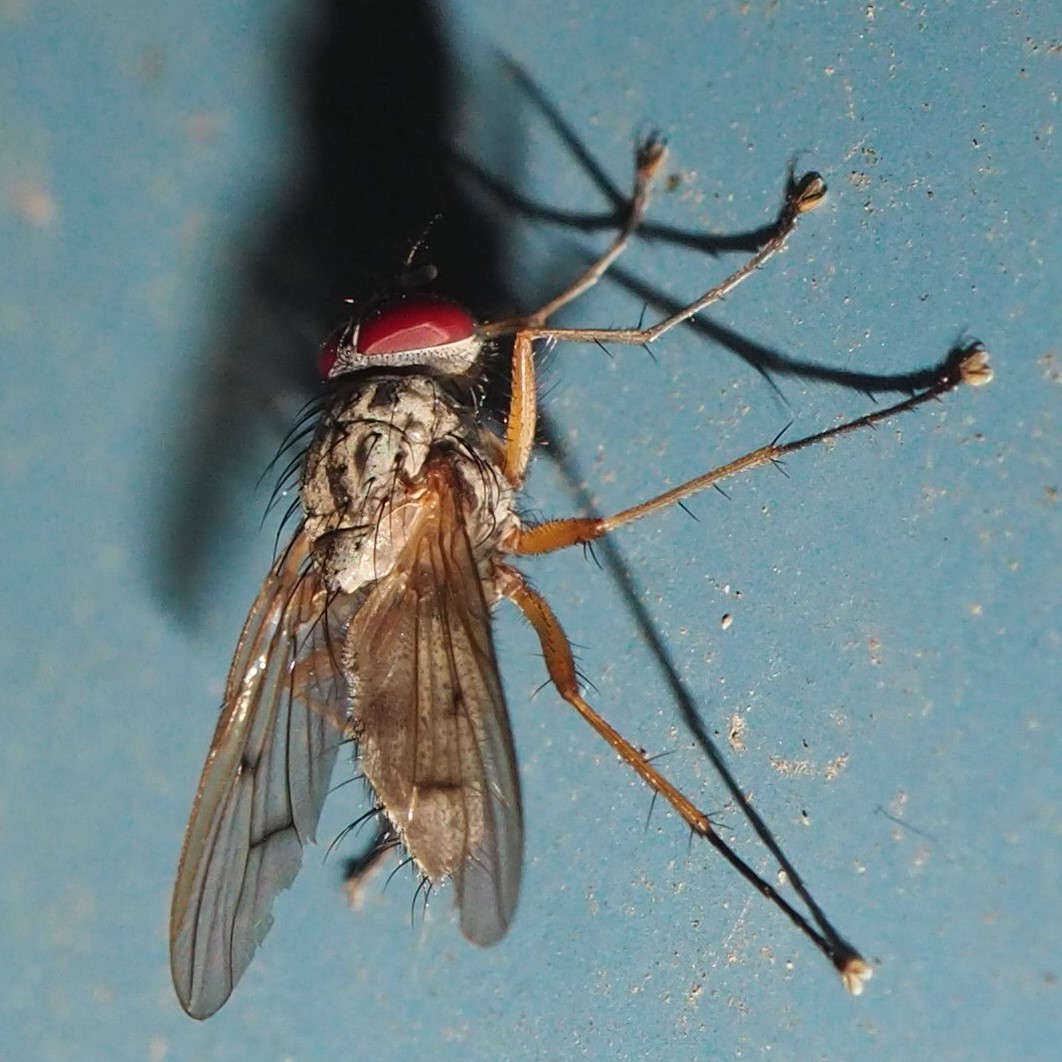
There is something so attractive about this little Lauxaniid Fly (two pictures). But the Bluebottle or Blue Greenbottle is a real glitter-bug.

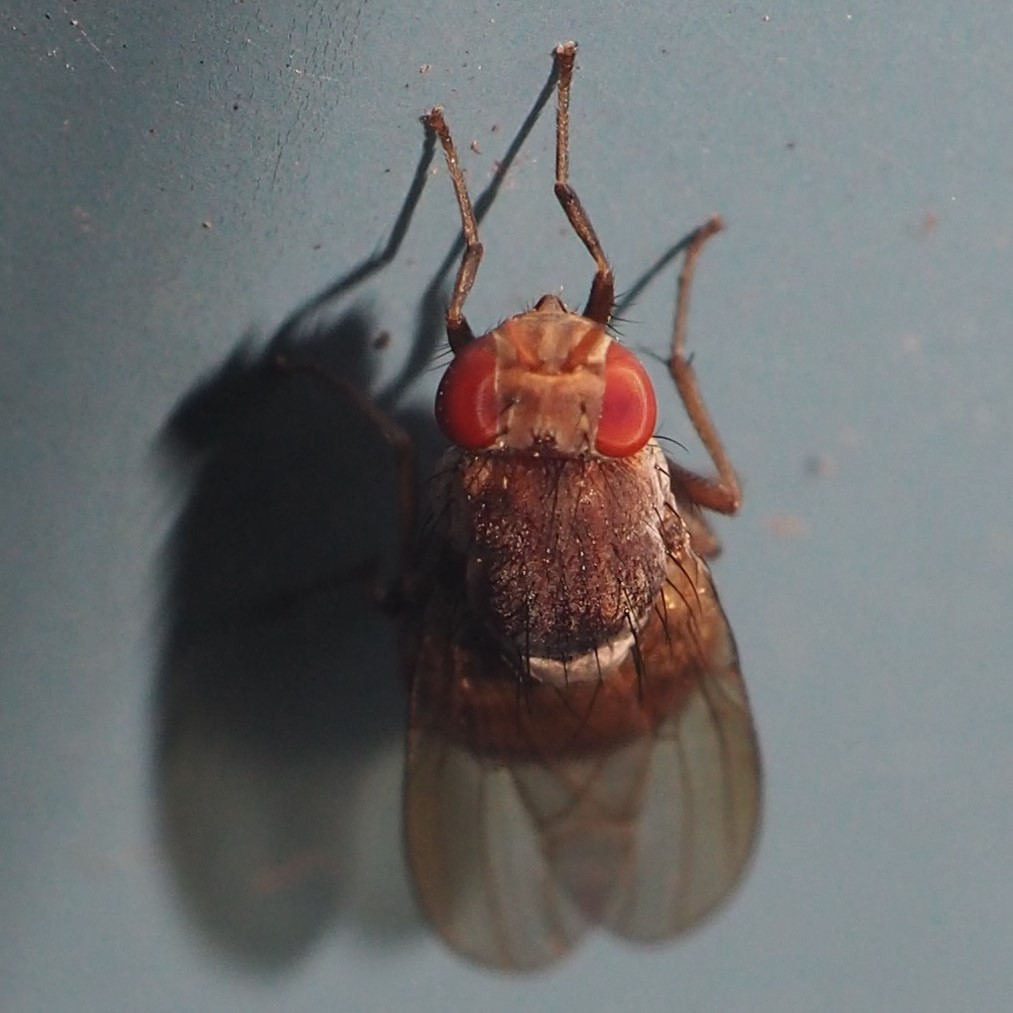
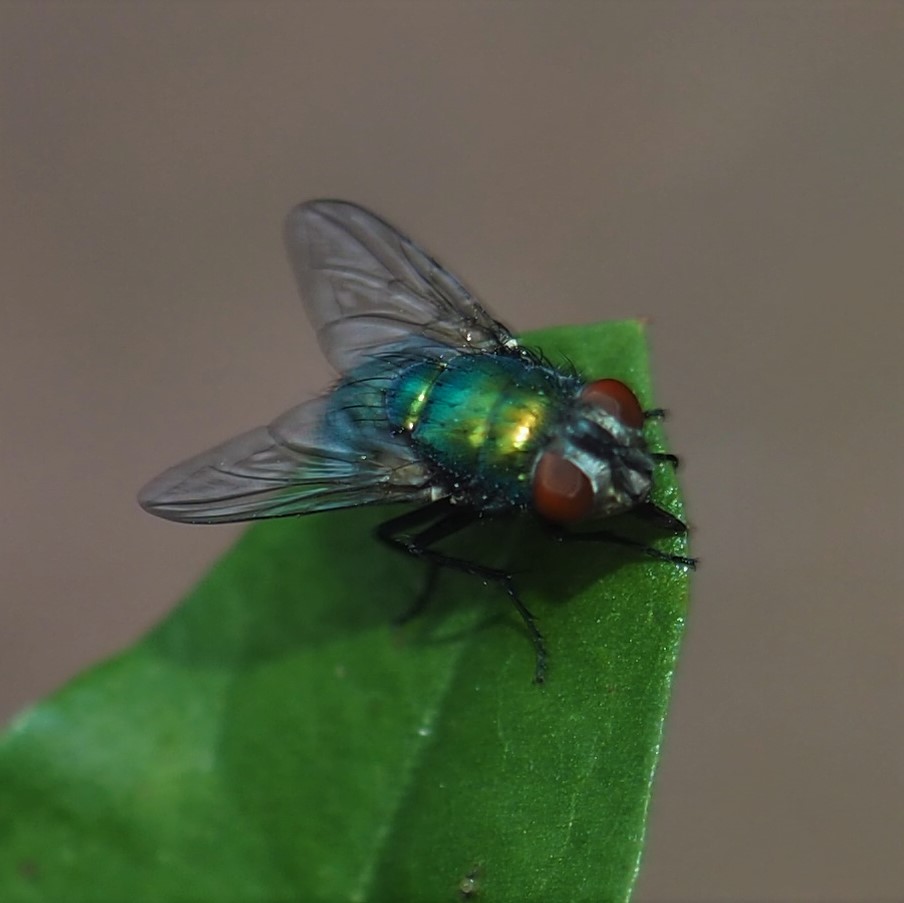
Do you like tricks? Then look at this. It has the same colors as the Locust Borer Beetle. But is it? Clearly it's one of those Wasps that love the Goldenrod so much. Right? I remember the first time I ever saw one. I must have got too close to it, and it flew at my head and around and around buzzing very loudly. All of a sudden I saw its act for what it was, and when it landed I got a lot of shots of it. Look at those EYES. Those are not the eyes of a Wasp, but of a Fly. It is one of the largest Hover Flies (I think), and is a mimic of Wasps. It is the Eastern Hornet Fly
(Spilomyia longicornis).

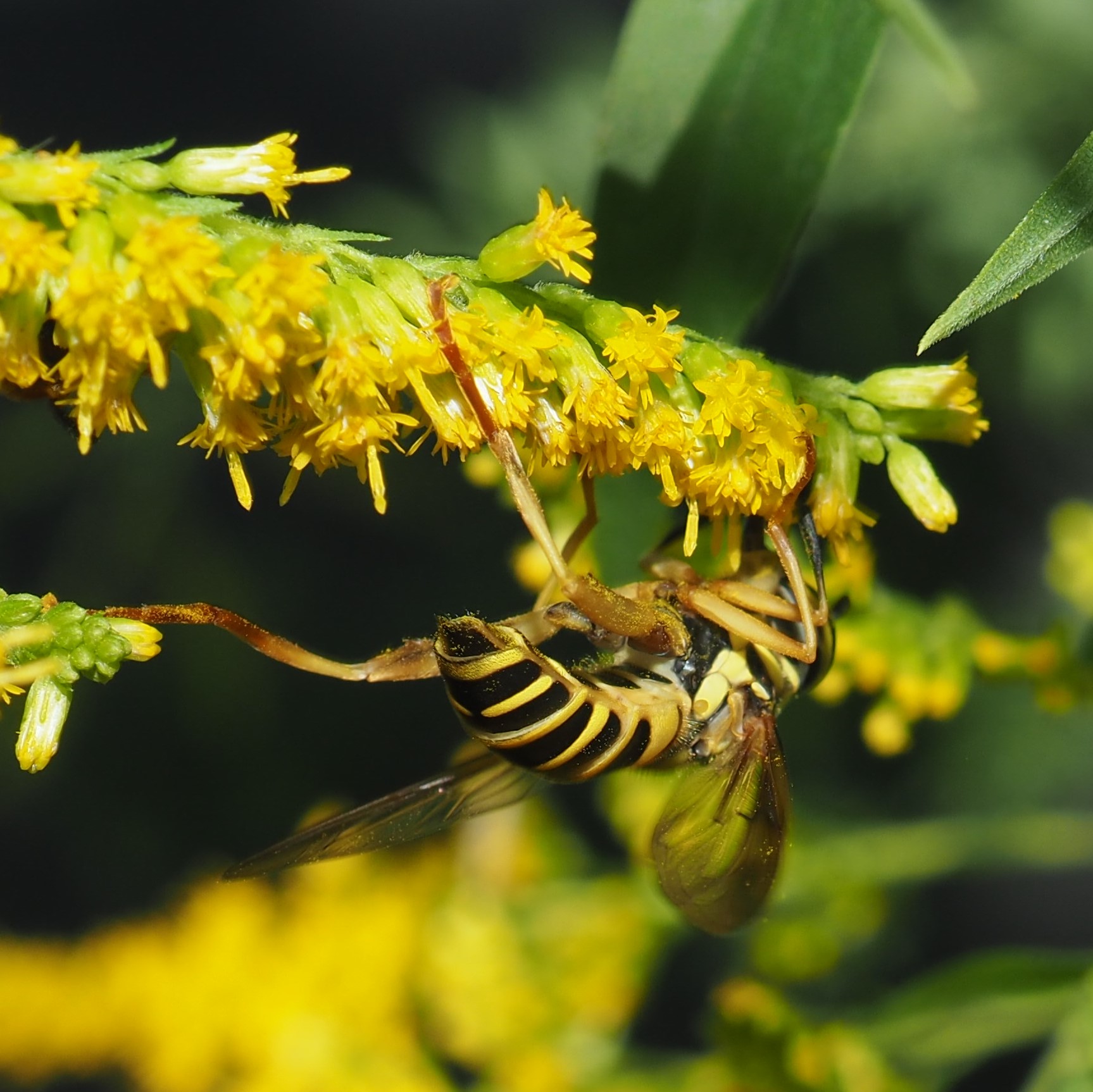

A couple more Flies. Of course we've seen the Bathroom Moth Fly. Not that I've ever seen one in either Bathroom. Next is the Anopheles quadrimaculatus, which is supposed to have four spots on its wings, but I've Never gotten past two on this Mosquito's wings. Third is a complete mystery.
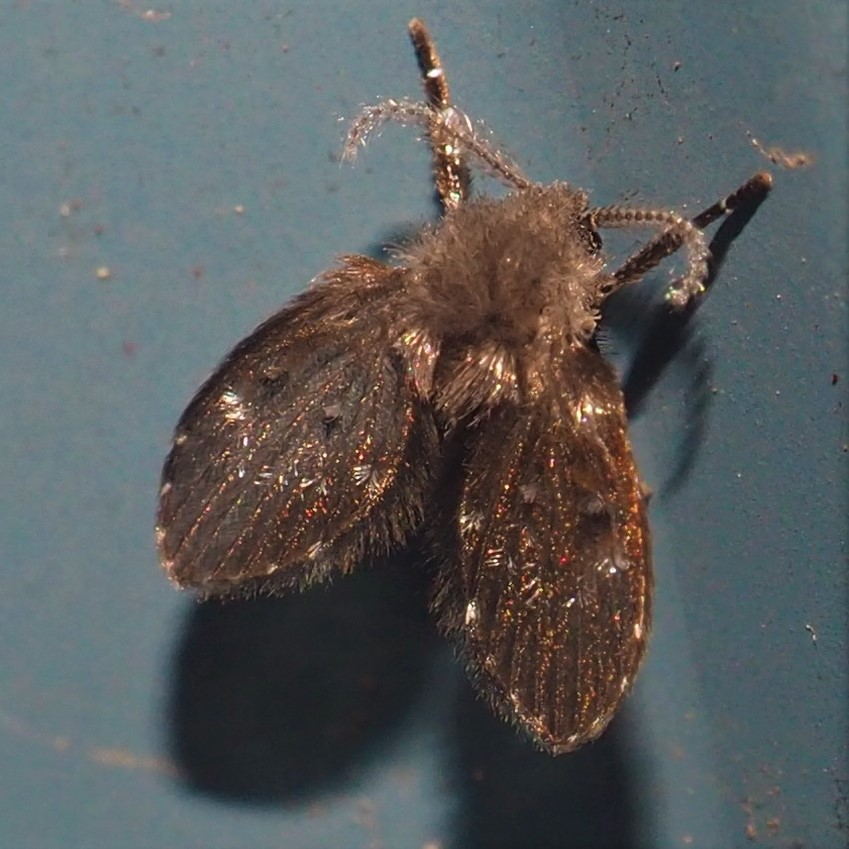
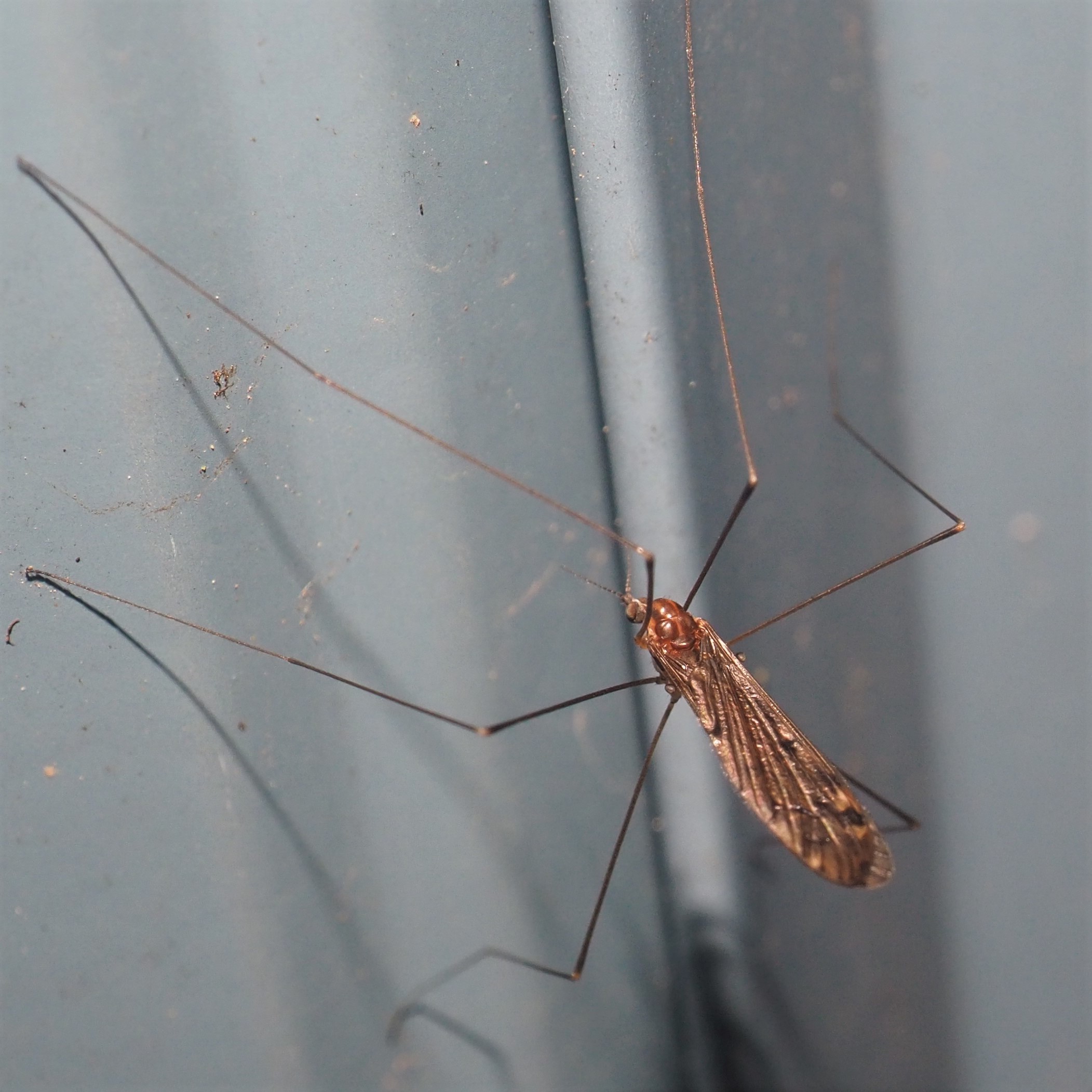
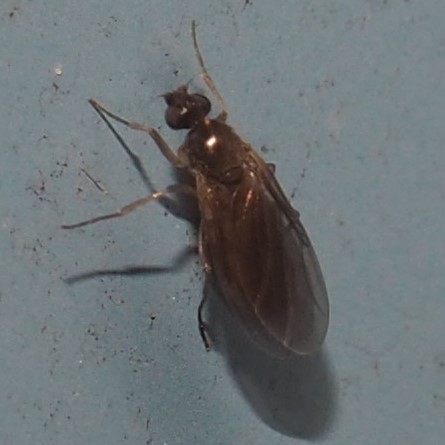
I saw one Mayfly, one of the Slate Drakes of Genus Isonychia. And several little Moths. Number 2 was ID'ed as Schreckensteinia erythriella, a member of Bristle-legged Moths Family Schreckensteiniidae by the ID app, which works on AI to guess the actual ID. One of my iNat colleagues mentioned that the Schreckensteinia genus is probably right. The third is possibly in the Genus Blastobasis.
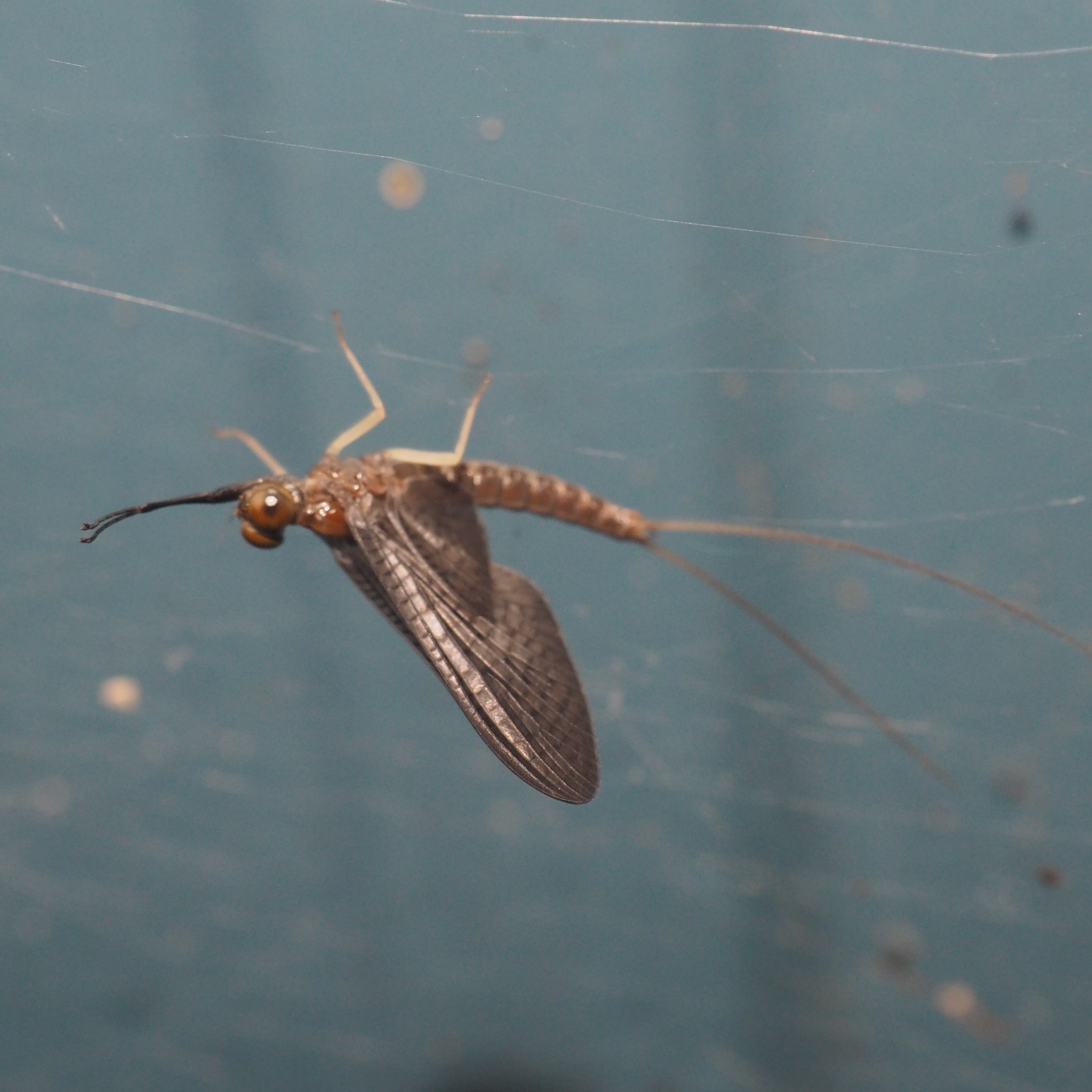
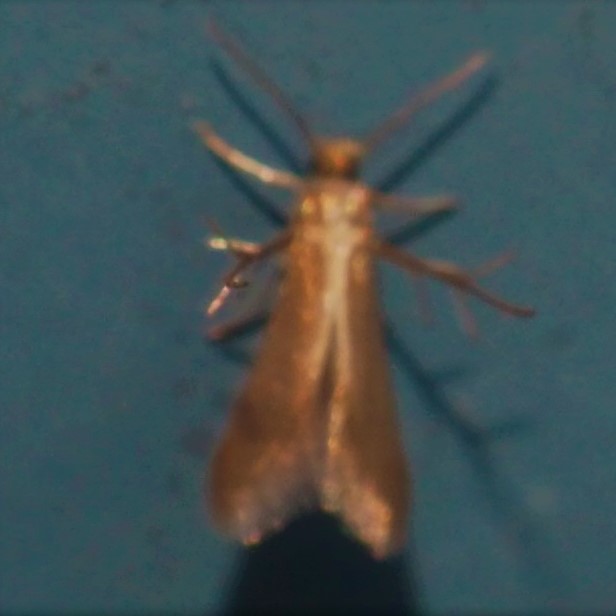
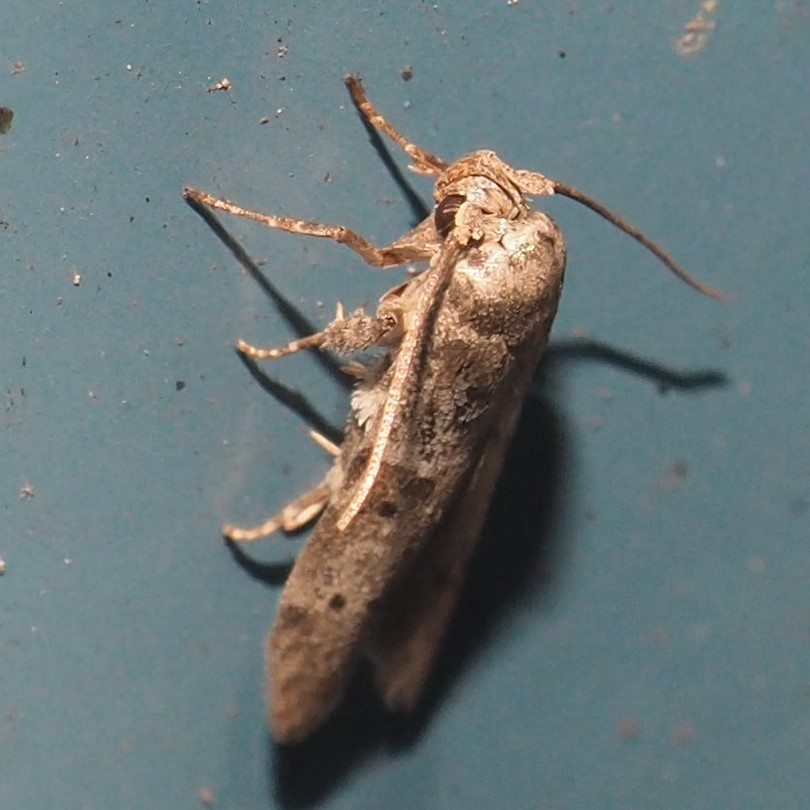
The last Moth is a Leaf Miner (two pictures), whose caterpillar makes tiny twists and turns inside a plant's leaf. You can sometimes identify them by their postures. Picture 3 is of that little "silverfish"- looking Moth we saw last week.
.jpg)
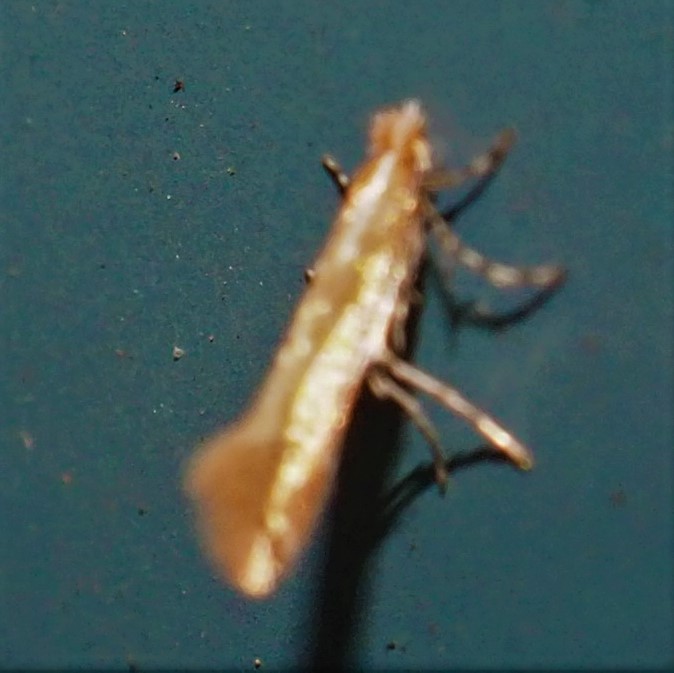
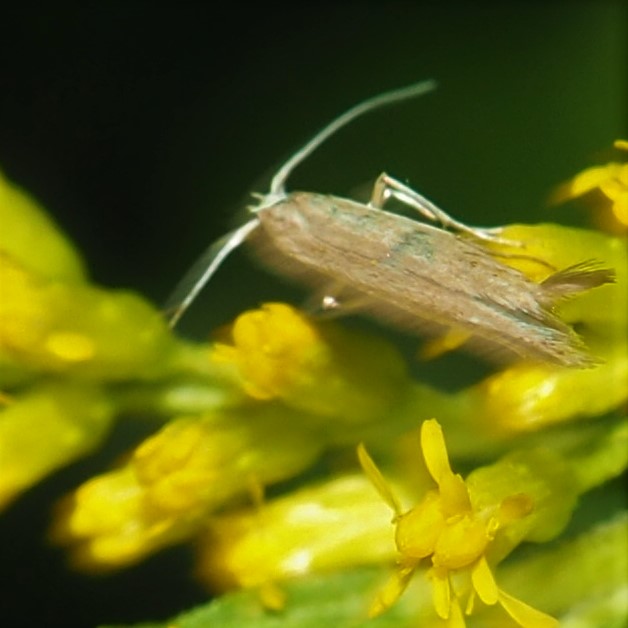
I think we have time for a shortish Flower Walk. You've already seen the Japanese Anemone, but here's another view. And the Astilbe, which was given me by Betty Beese, the amazing woman who got around on a go-cart but to work in her magnificent garden, she would fling herself onto the ground and do all the work of two ordinary people. Her funeral is today (September 4), and there is never going to be her equal. Third, did I ever mention that the Celandine Poppy would be the perfect gift to someone who likes to weed and loves that pure Yellow?
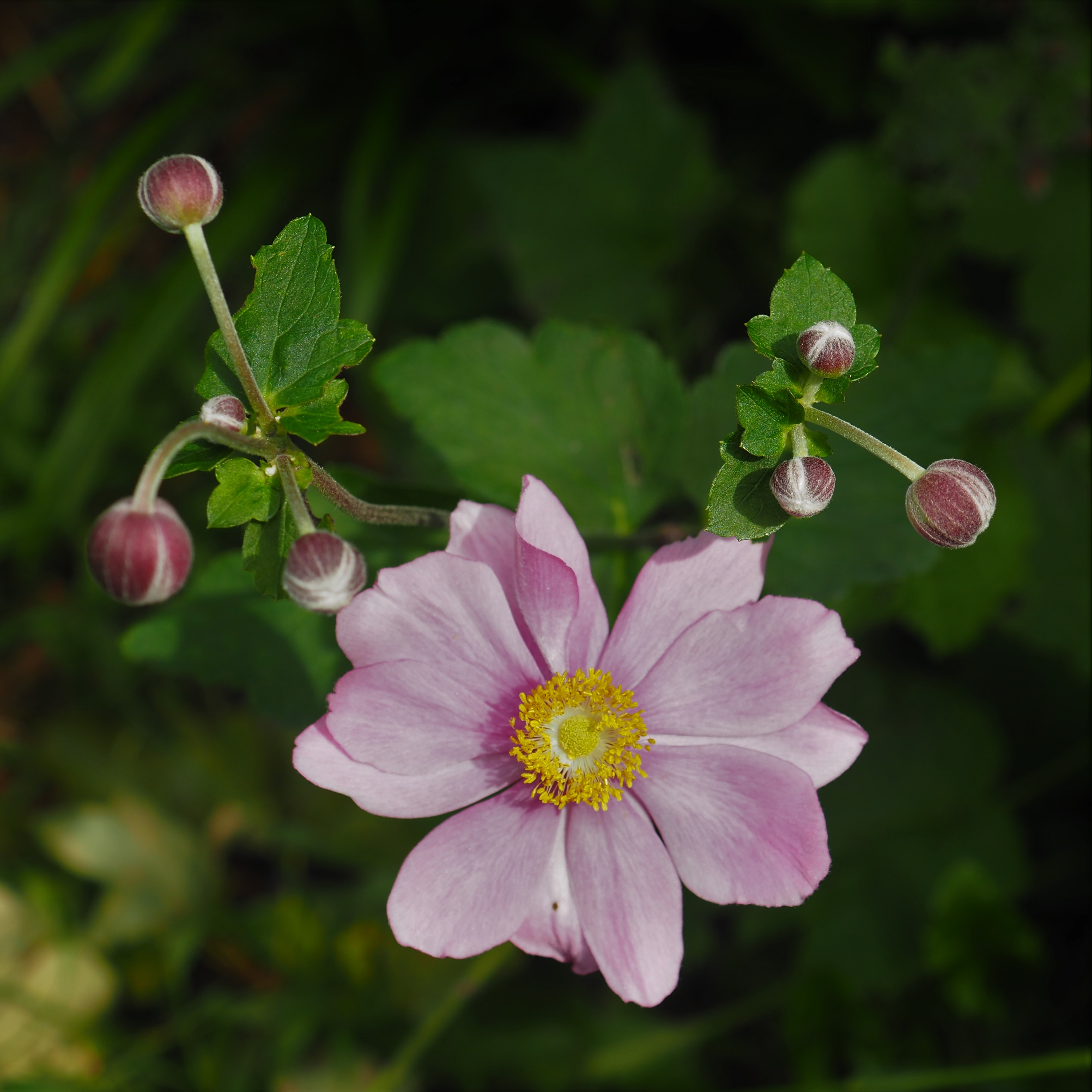

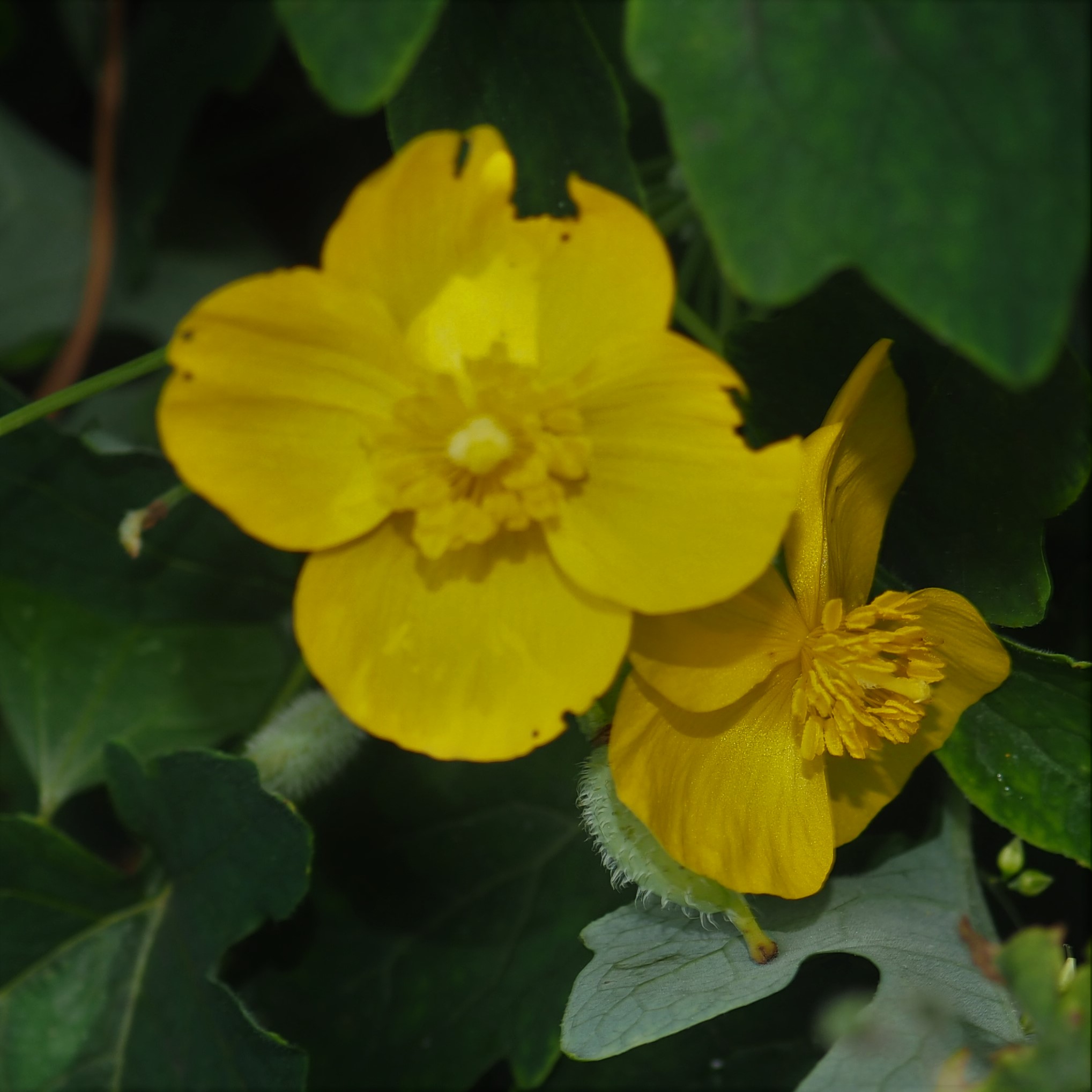
Another gift for the Yellow-lover like you. The Common Tall Evening Primrose seems to want to measure itself against the house. In picture 2, it is bursting to join the tallest trees. I don't know how I got those pictures, but when I was cropping the day's worth of pictures, there were these two amazing shots.
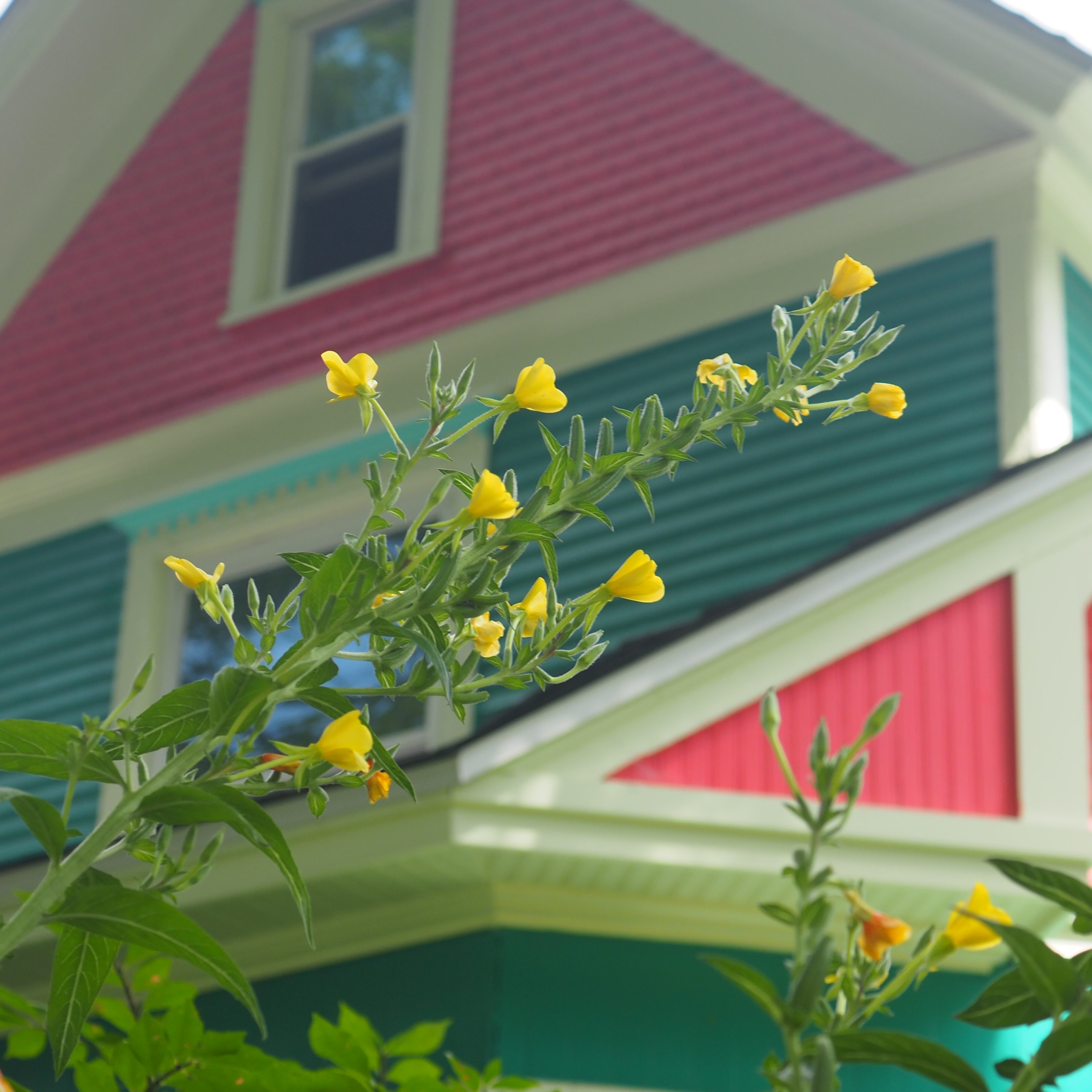
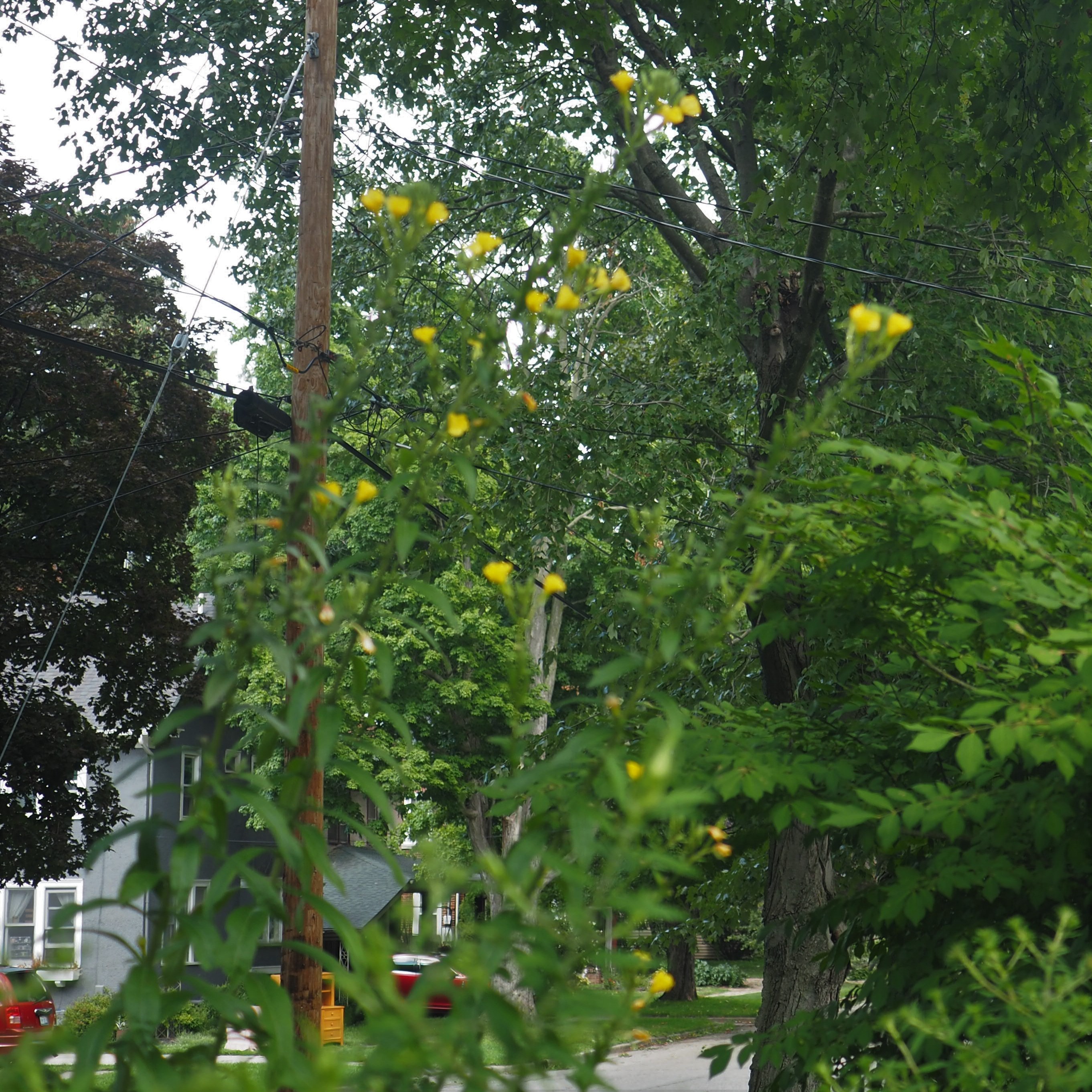
Here's the Asiatic Day Flower, blooming from the Pond, along with a few admirers. And just under the wire, today is the very day that the purple Aster actually bloomed out loud! And a huge surprise! Two days into September, after finishing up its bloom more than a month ago, here is that Spiderwort again!
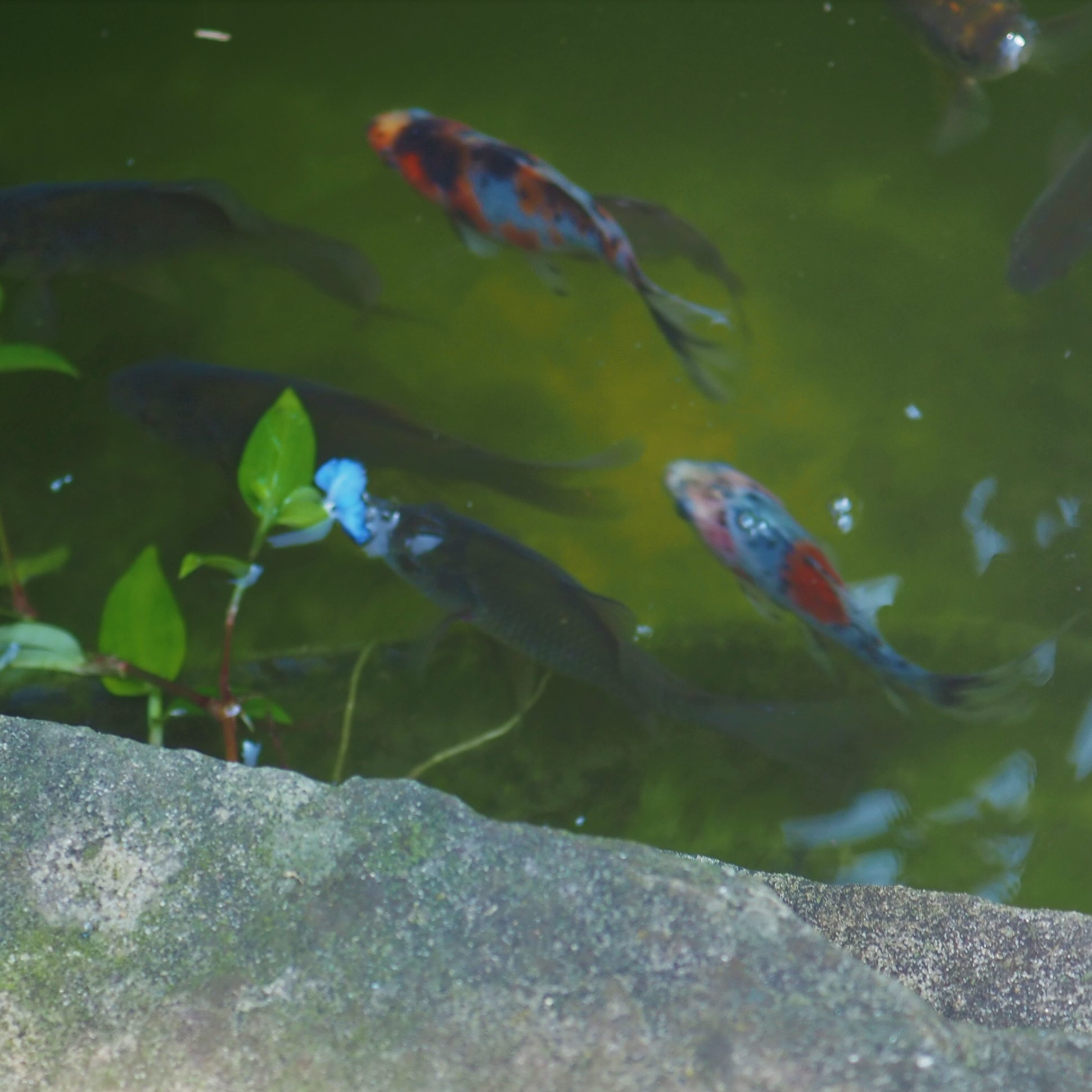
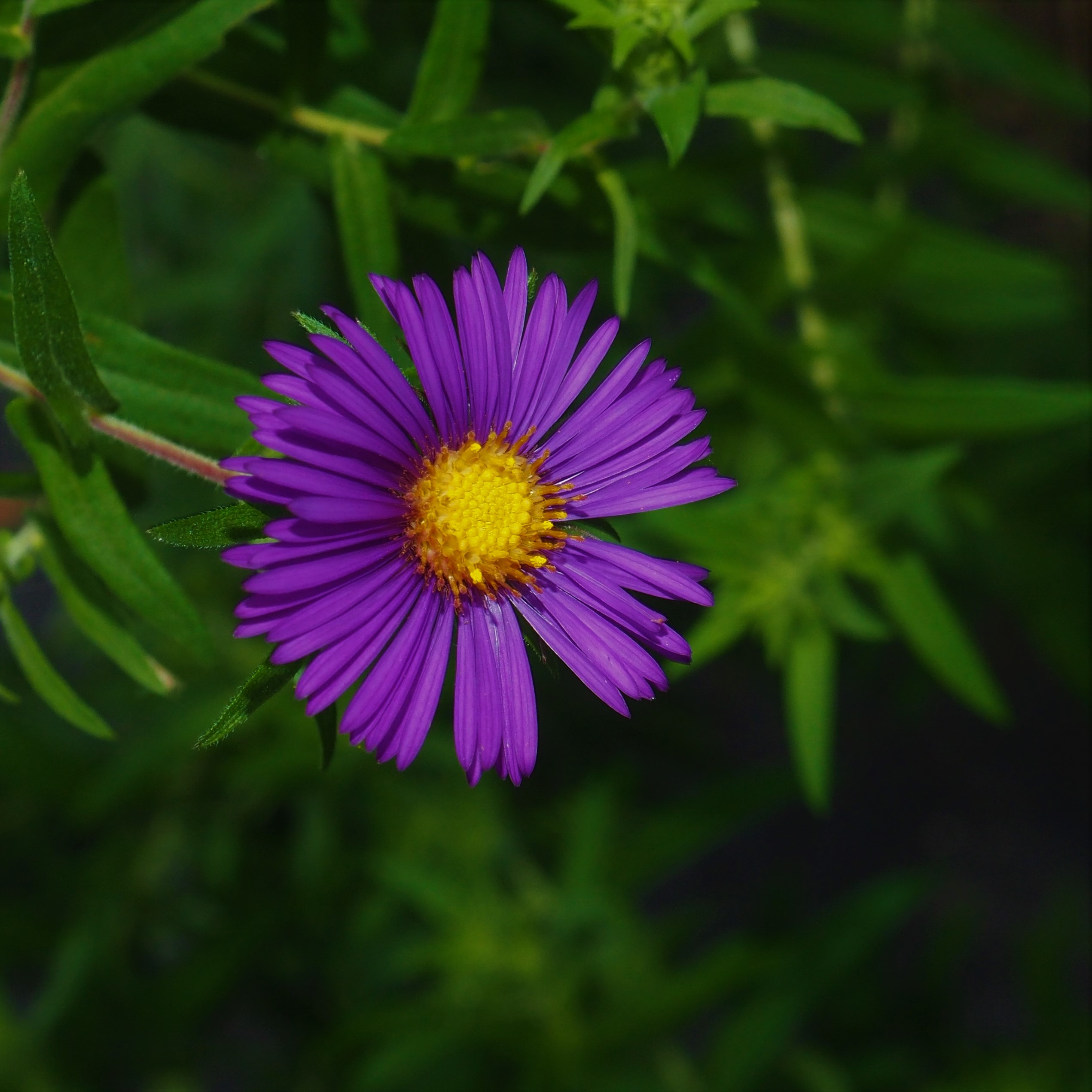
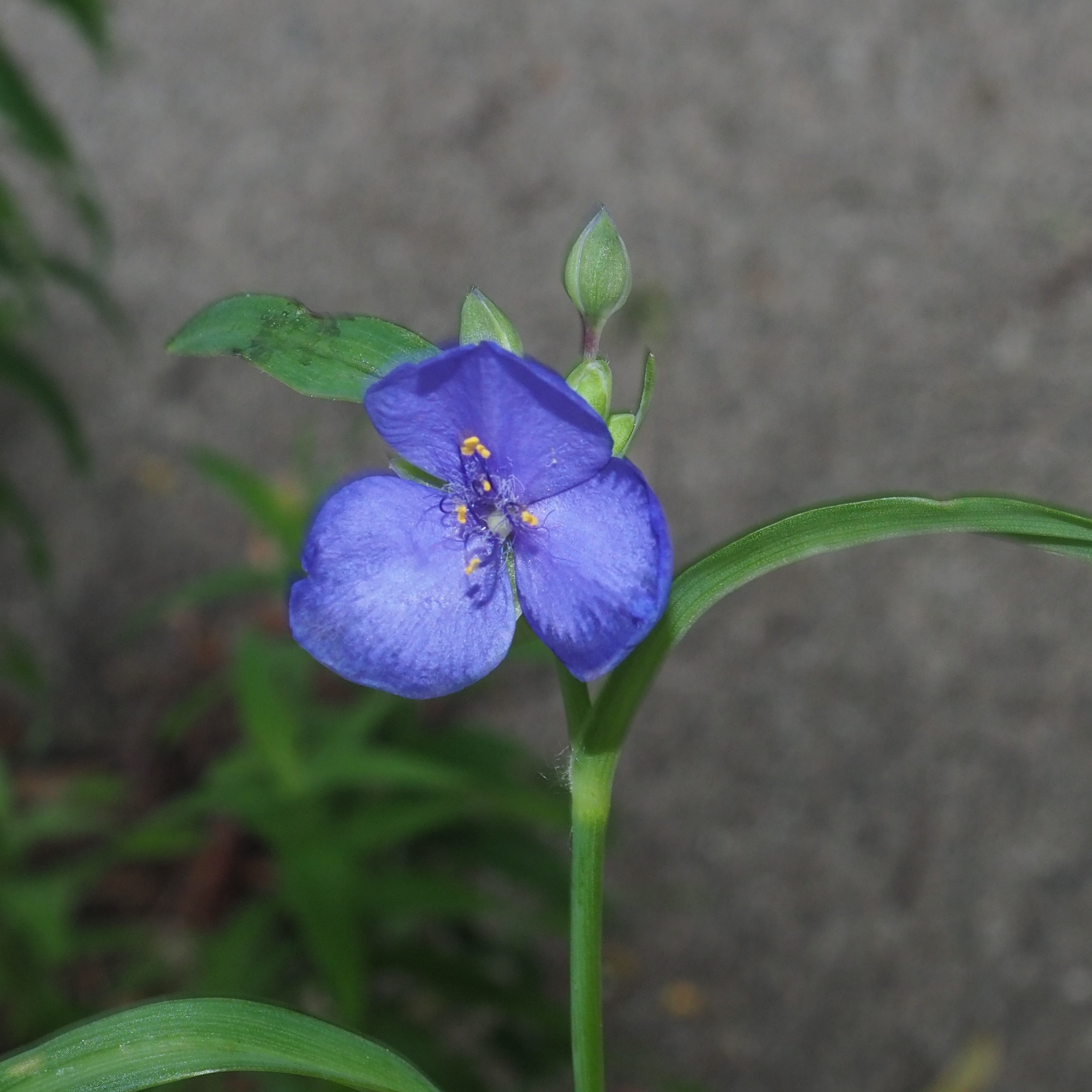
For now, let's look at the Spiders of the Week. First is the Cellar Spider, followed by a Common House Spider. This one seems to have been invaded by one of the Wasp larvae, tribe Ephialtini. I believe the third is a Cobweb Spider. Note the decoration on the head might be confused with the "necktie" on the head of the Common Cannibal Spider, Mimetus puritanus.
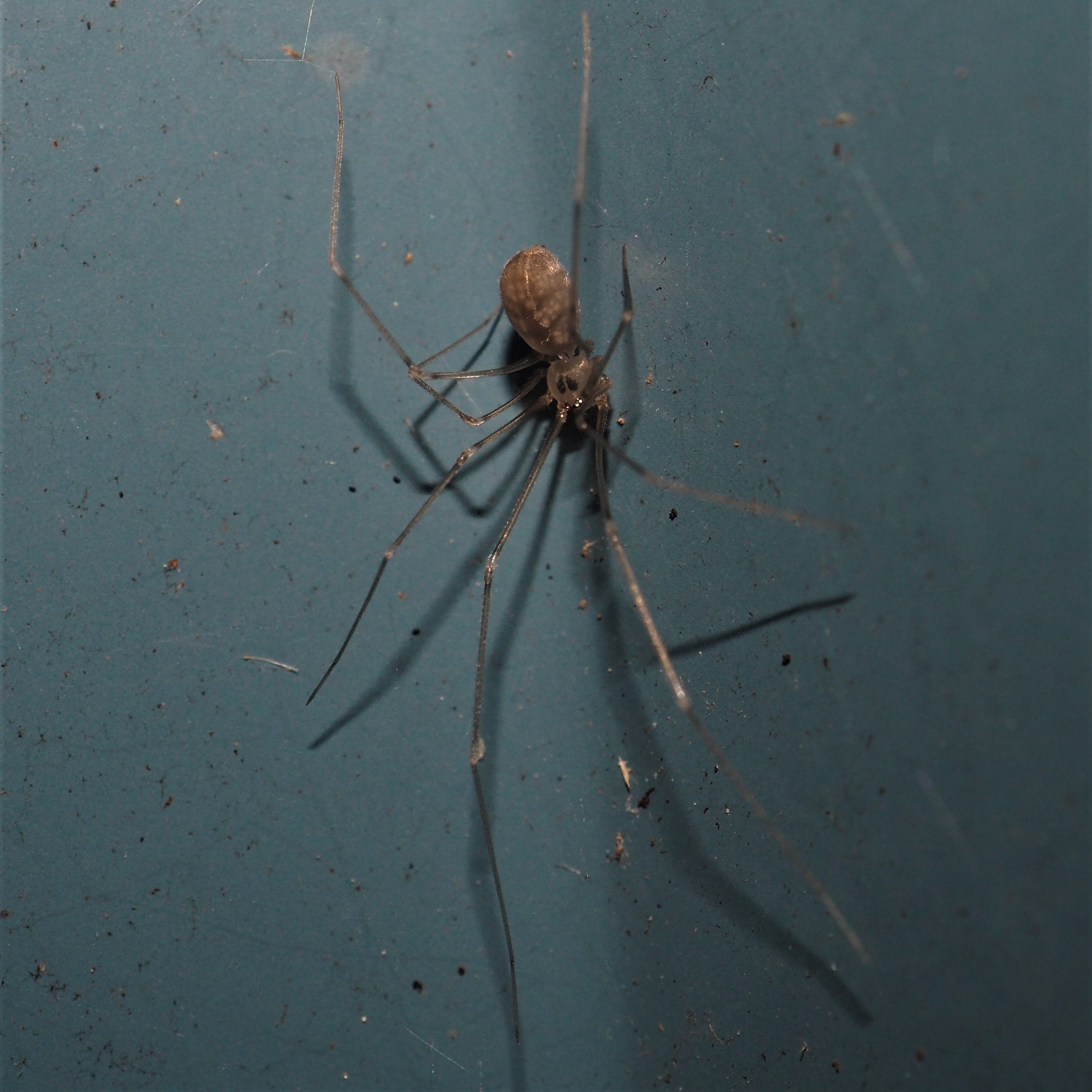
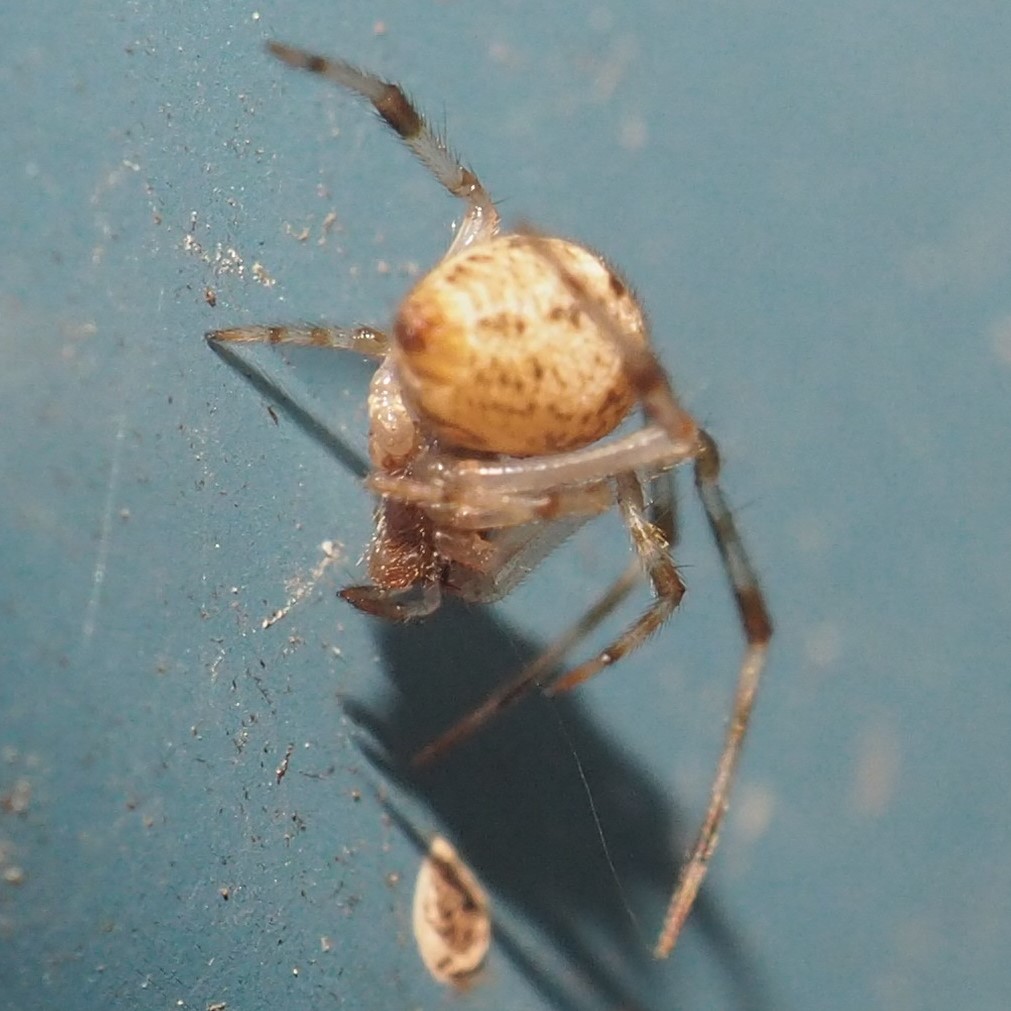
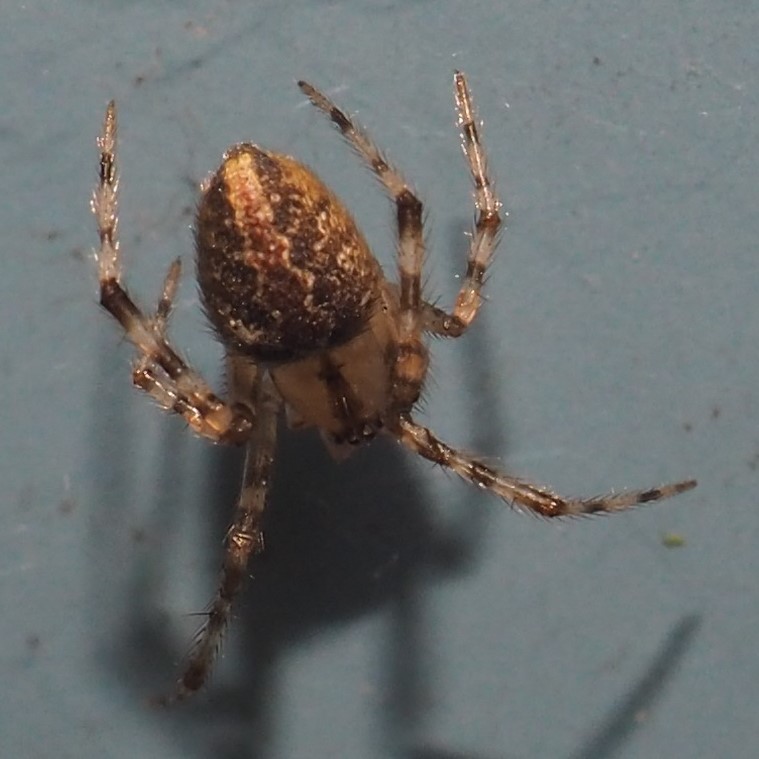
Since I have brought up the thought of M. puritanus, here are some real pictures of it (to the best of my knowledge). First is an almost fully grown one. Then you see one that I am almost certain is a juvenile of that species. It has the "necktie" on the head and the eyes are getting easier to see.
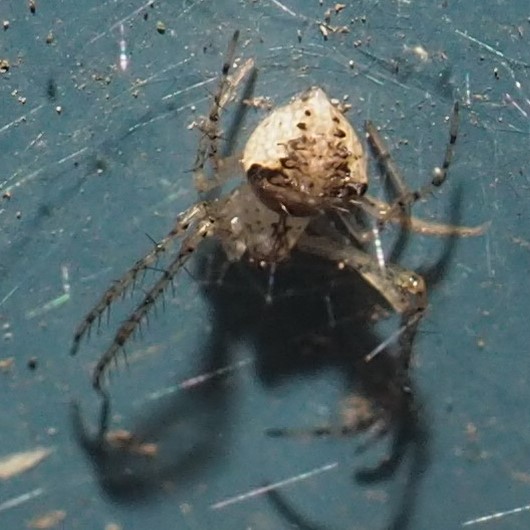

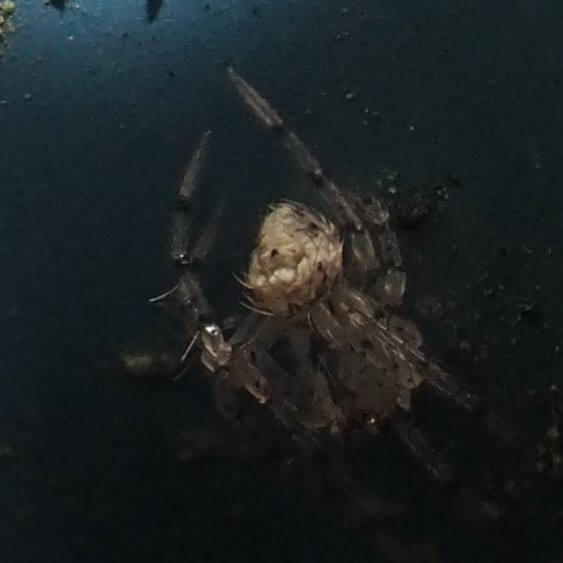
First here is a Mystery Spider, all grey. Then another Mystery (probably another Common House Spider) with a mystery prey item. And last, a non-furry Spider which seems to have been conquered by a Furry (possibly a Jumping) Spider.
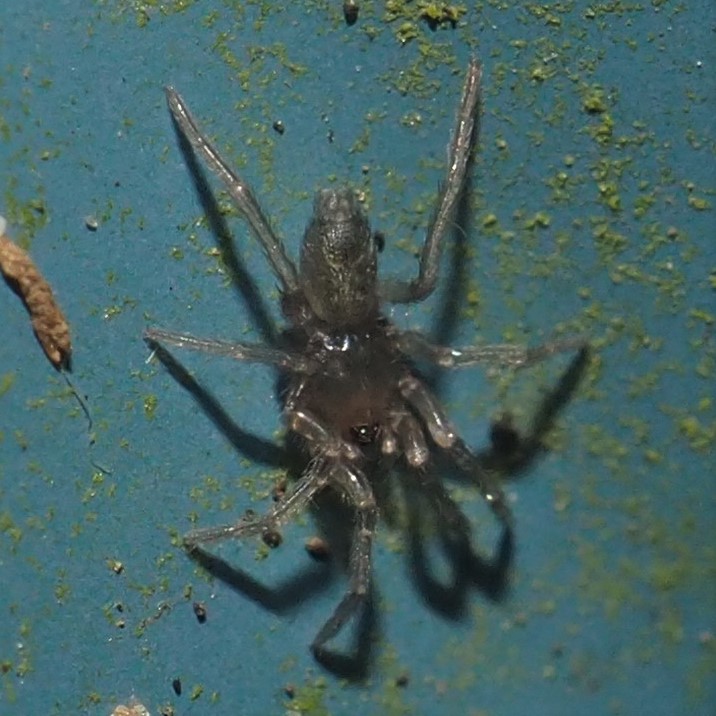
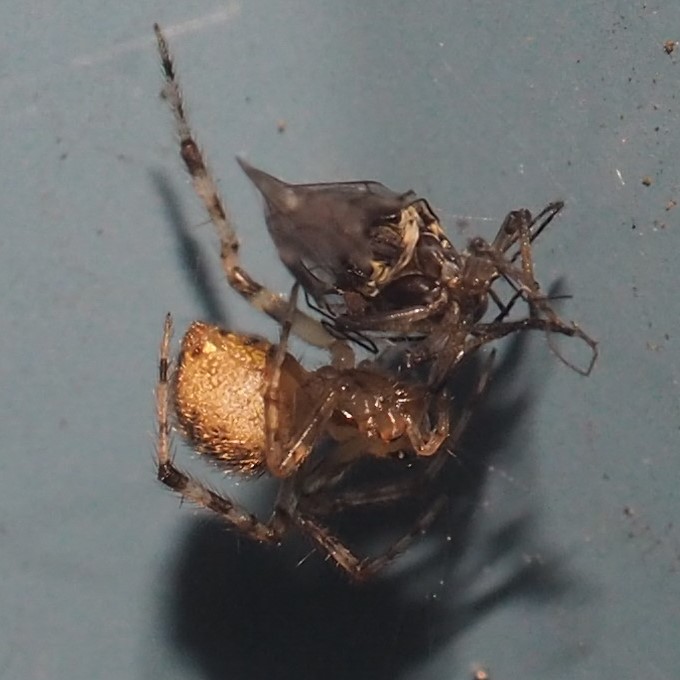
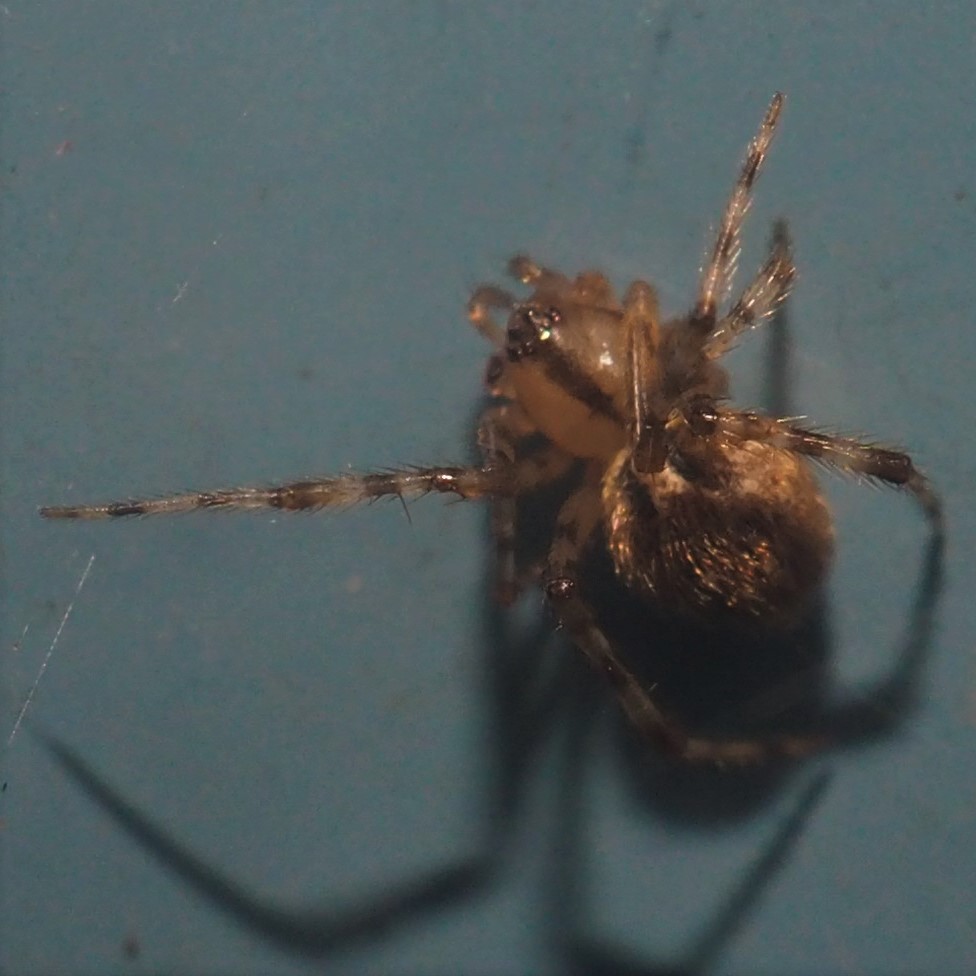
The Wall contained a number of TINY Wasps. The most interesting was this one who seems to be jabbing the captive Spider with either paralyzing venom or maybe even Wasp eggs.
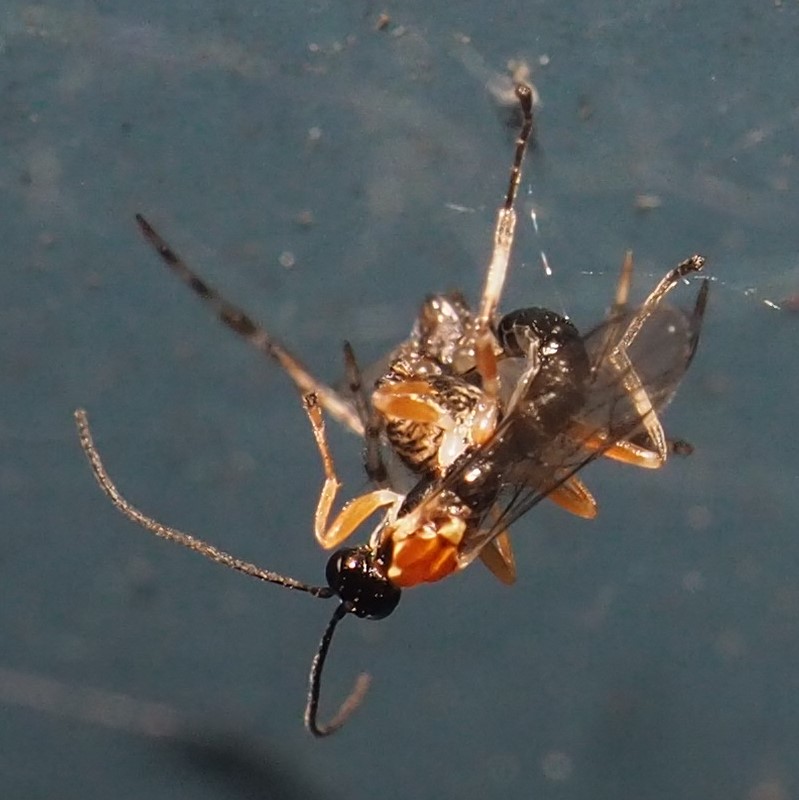
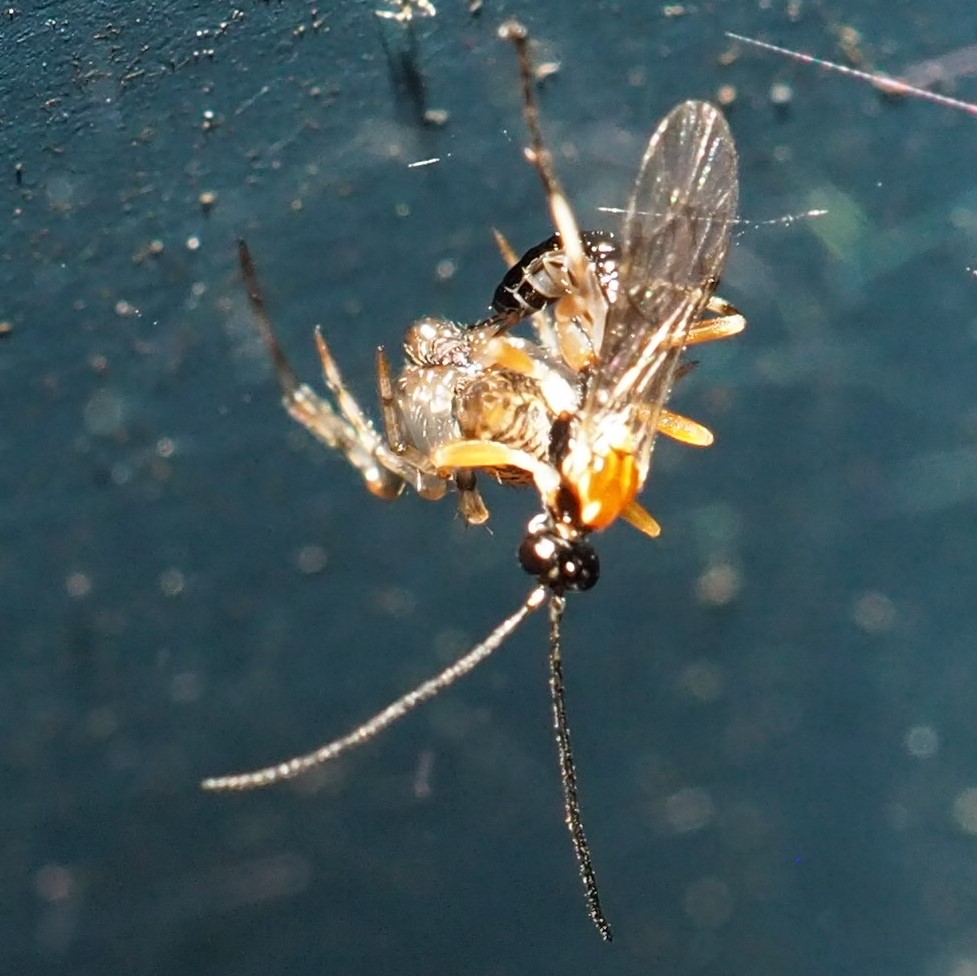
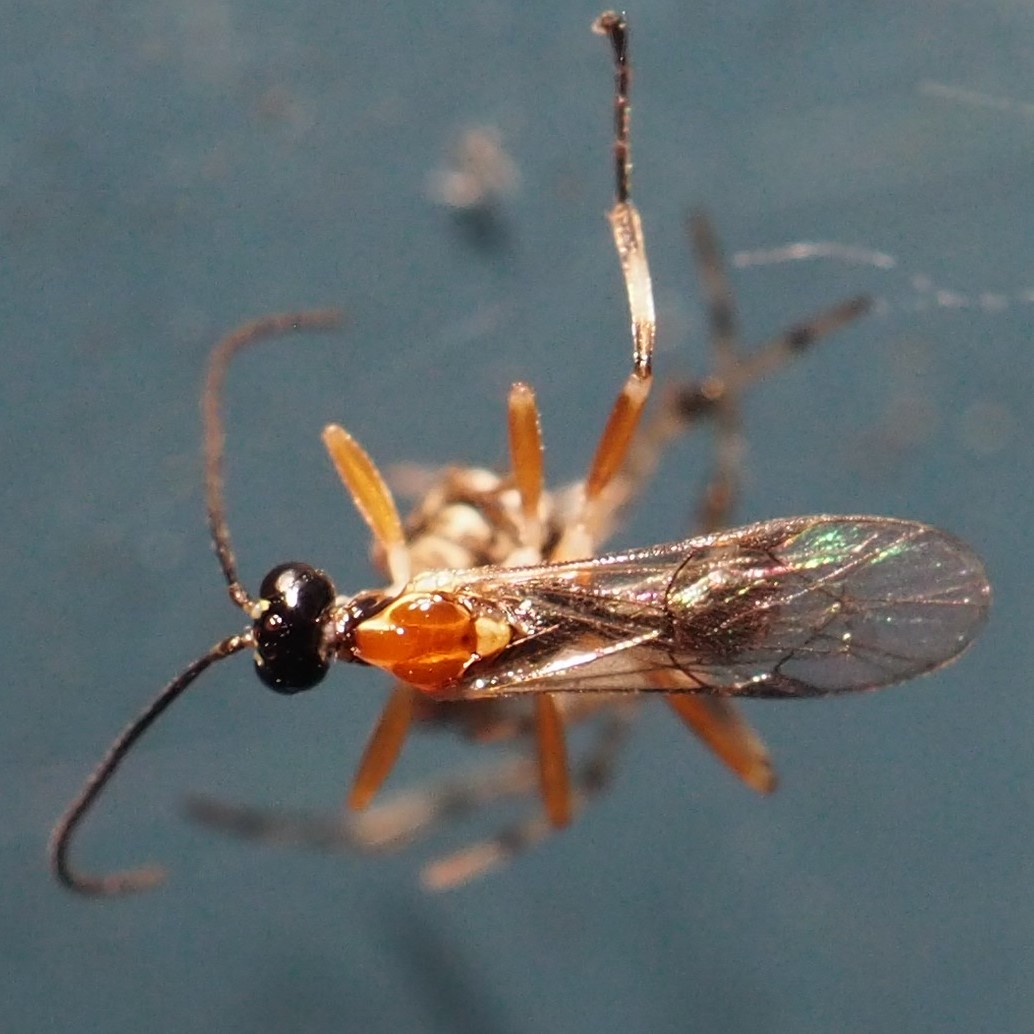
The Wasps are great fans of Goldenrod nectar. This one is a Bald-faced Hornet, one of the Yellowjackets that make their giant nests in trees. Since there is a big nest next door, they seem to be neighbors.
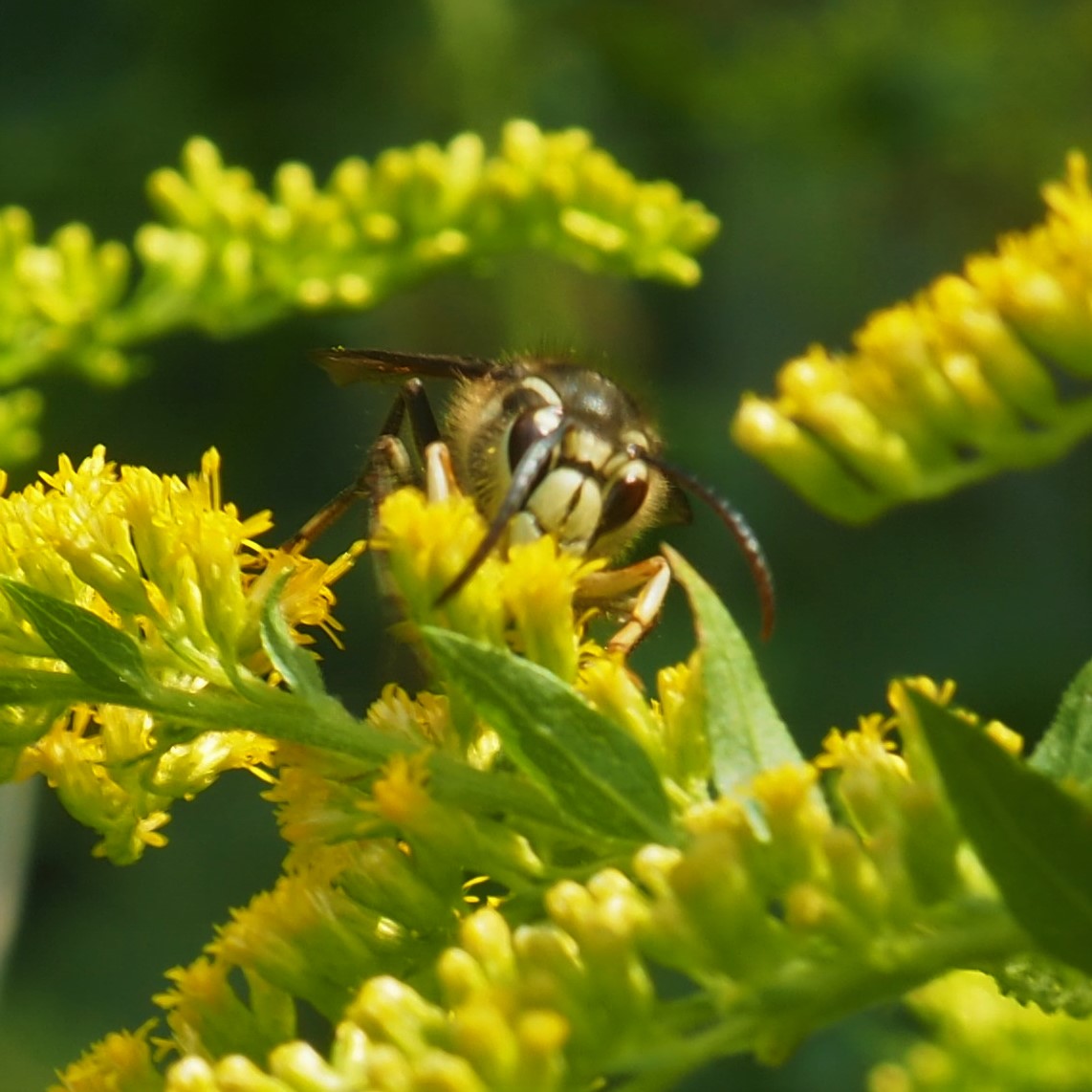
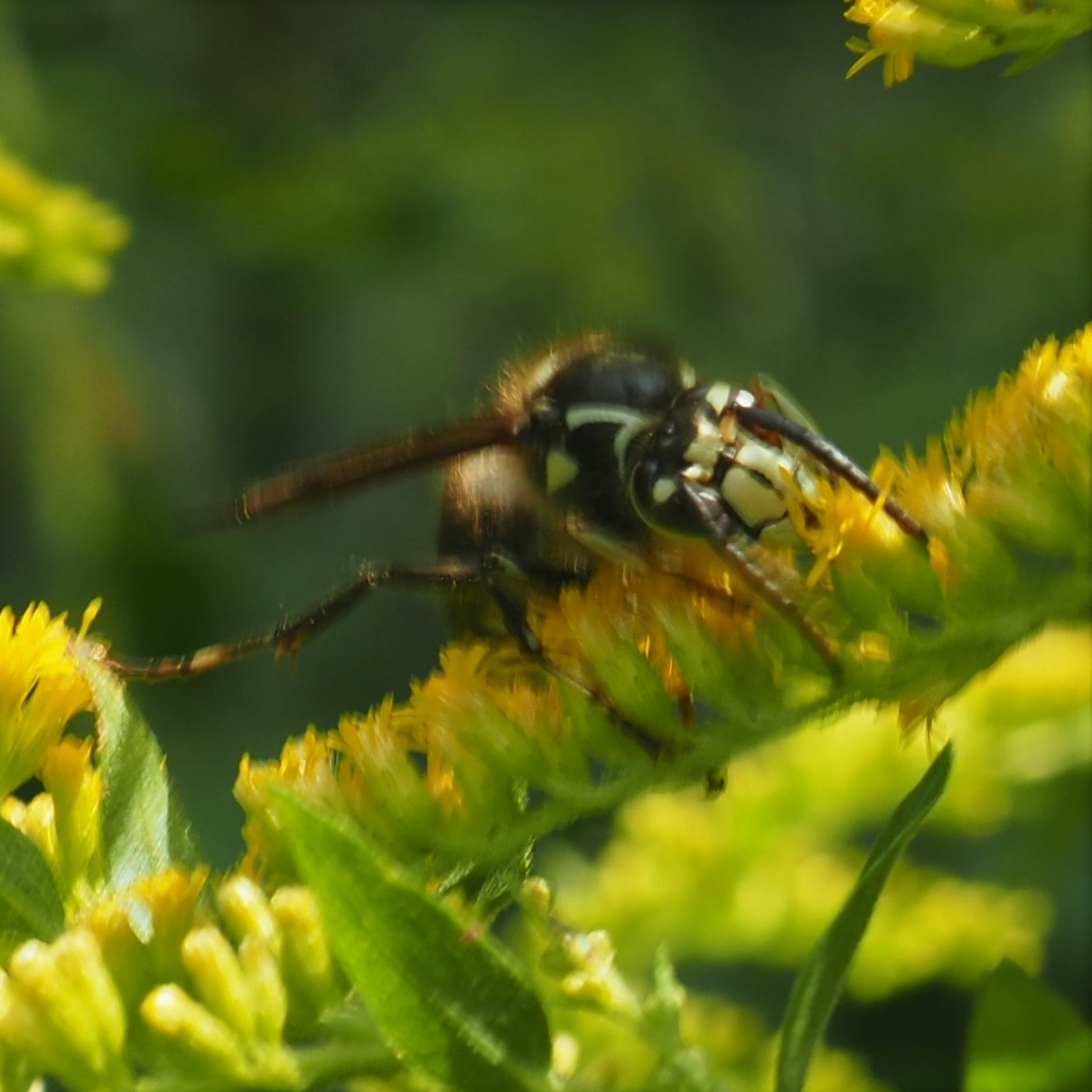
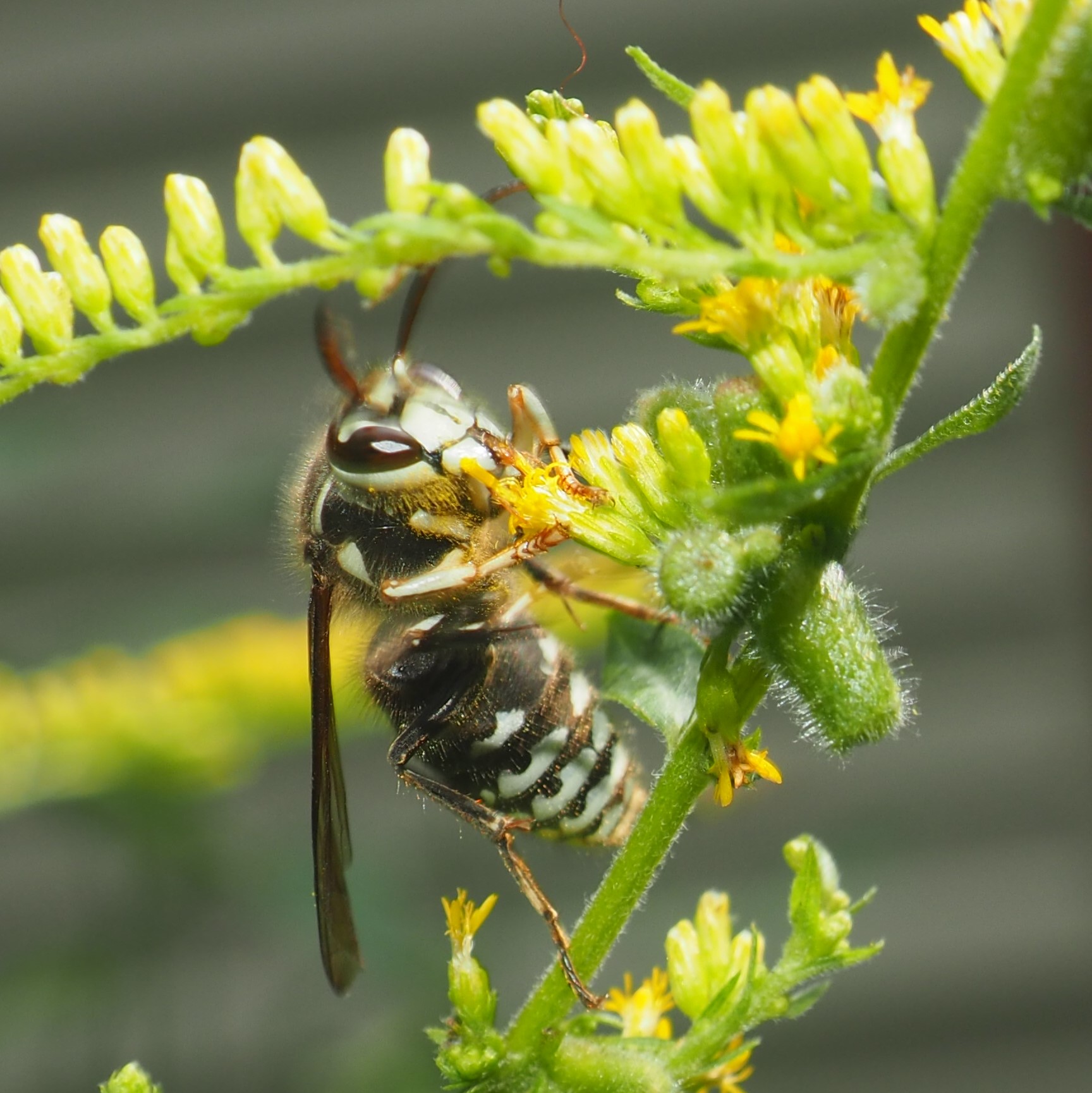
Here is a miscellany of Wasps in Goldenrod. First, the Dark Paper Wasp. Next, the Fraternal Potter Wasp. And last, another of the Yellowjackets. I would have needed more angles in order to identify it...
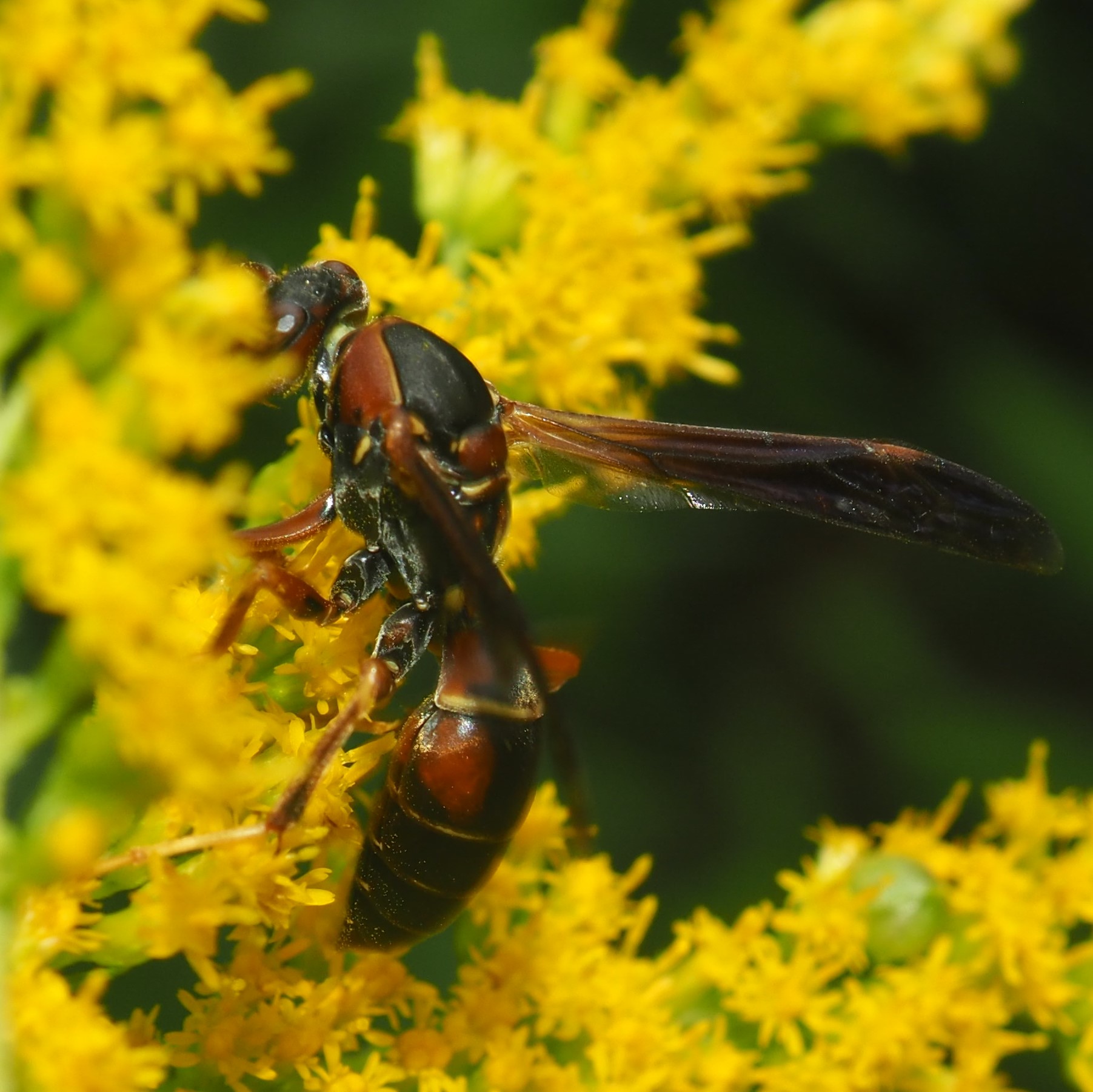
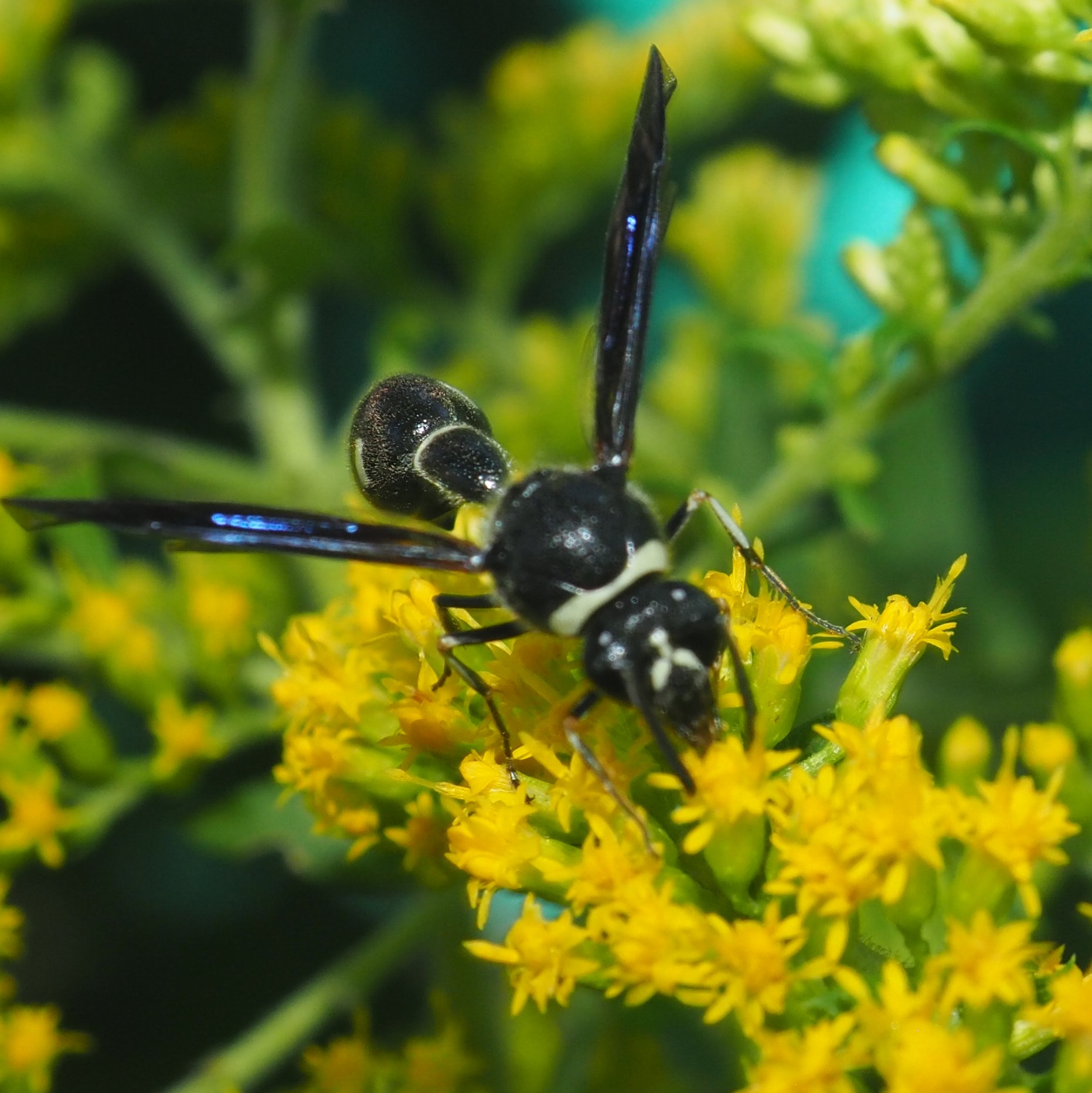
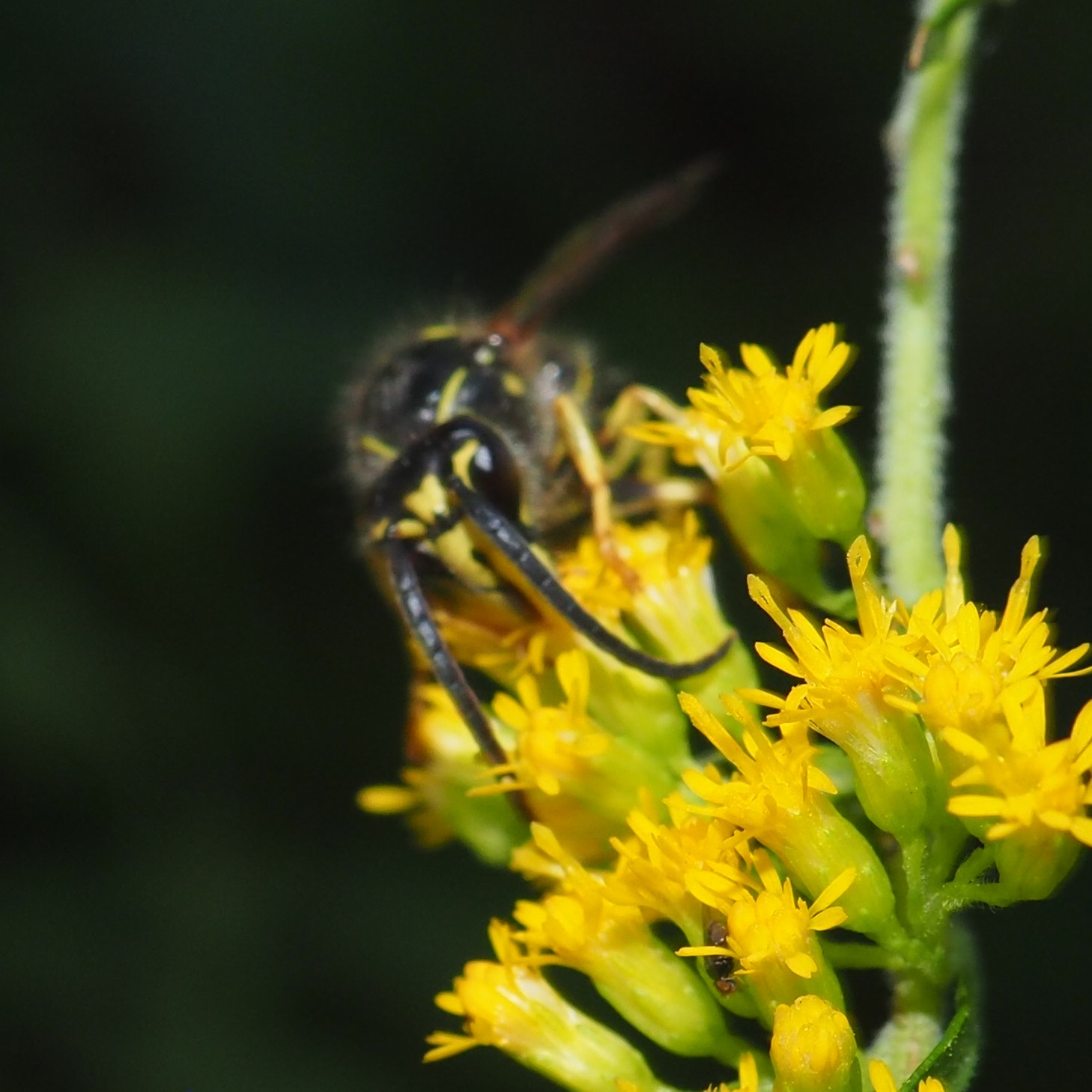
Here are some more Insects that haven't yet been documented here today. First, here is a Scorpion Fly in a number of different poses and places.
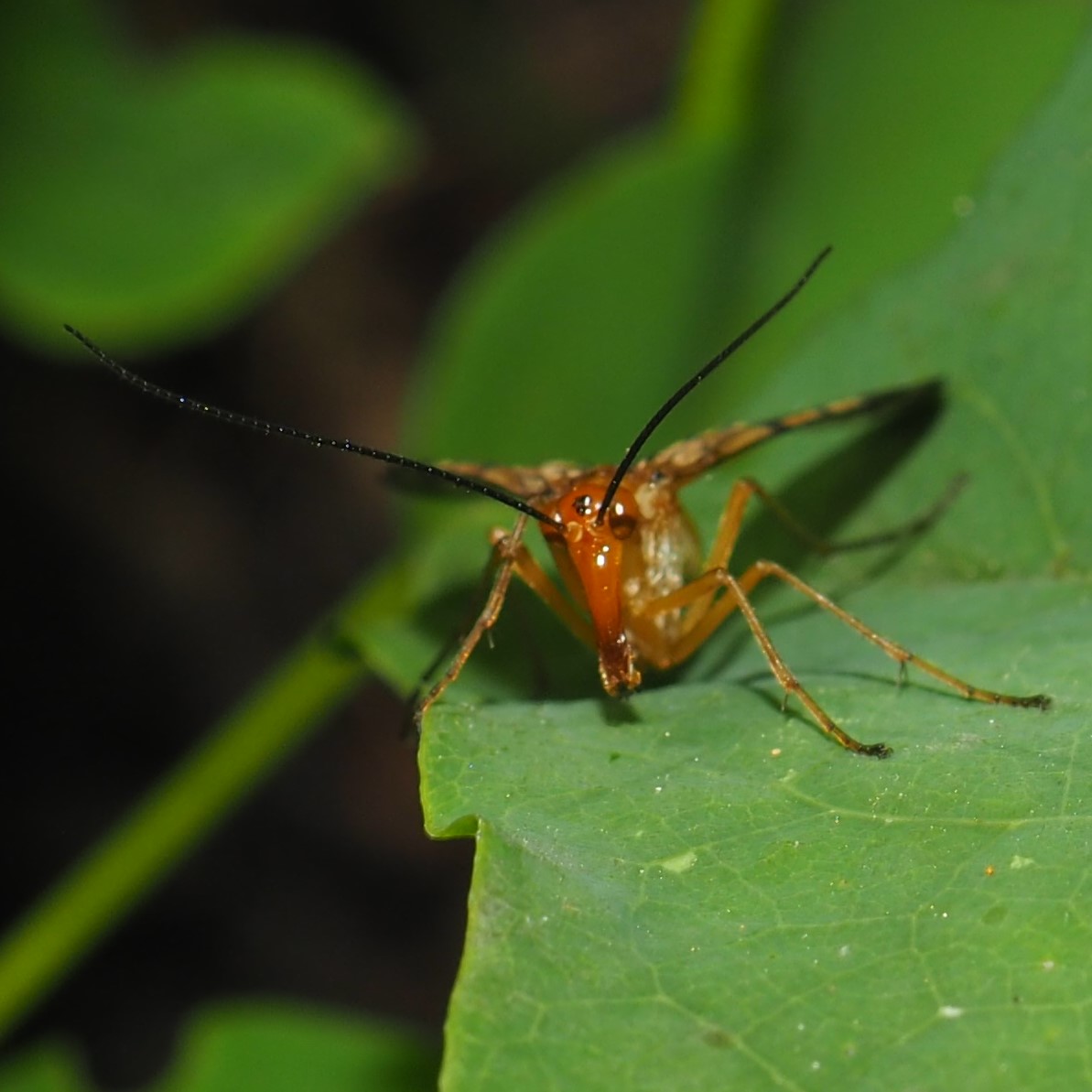
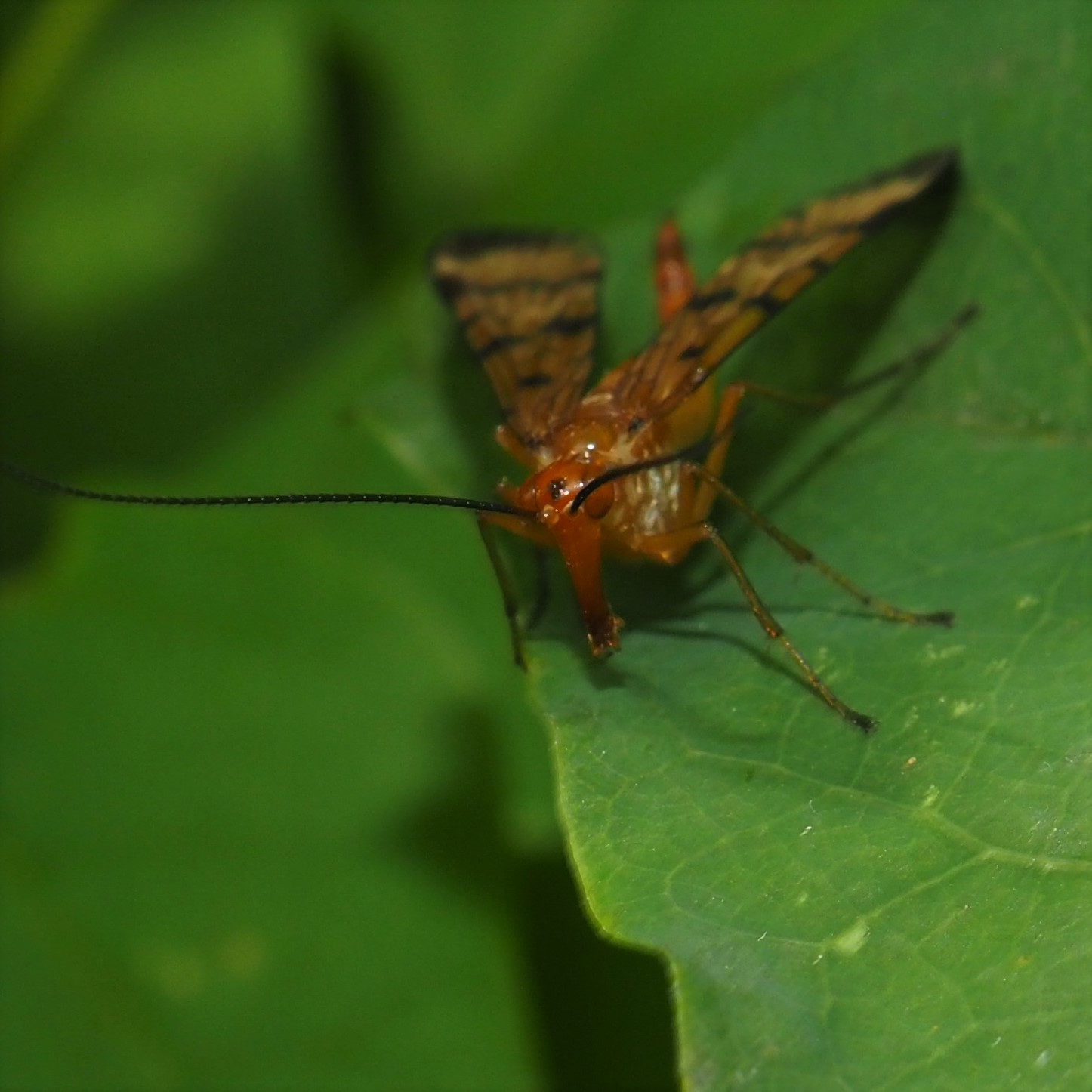

The Pillbugs have too many feet to be Insects, but they exist here in numbers. Most of the ones I'm seeing on the Wall are the Brickwork Pillbugs. Same for the Polyxenus. These are both so small that it's easy to mix them up.
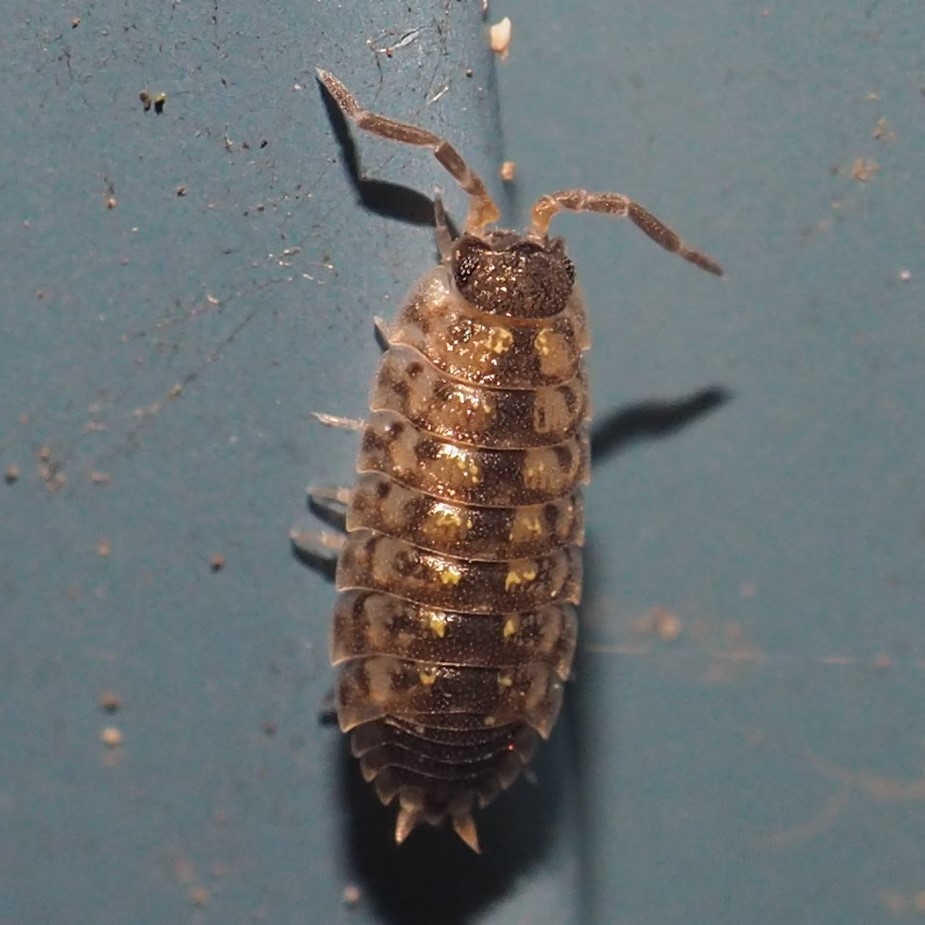
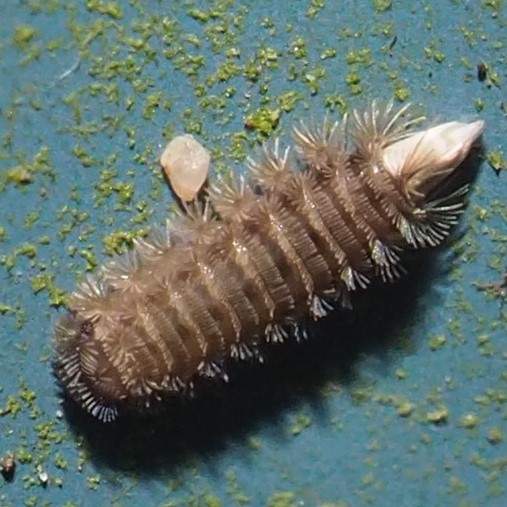
Let's see how the Pond is doing. There are three main attractions: the Water Lilies, the Fishes, and the Frogs. Most of the pictures I've been taking have two or more of these characters. First, a Lily with a group of Fishes. Then a little Frog on the traditional Lily Pad. Third shows a Frog with Fishes swimming near it.
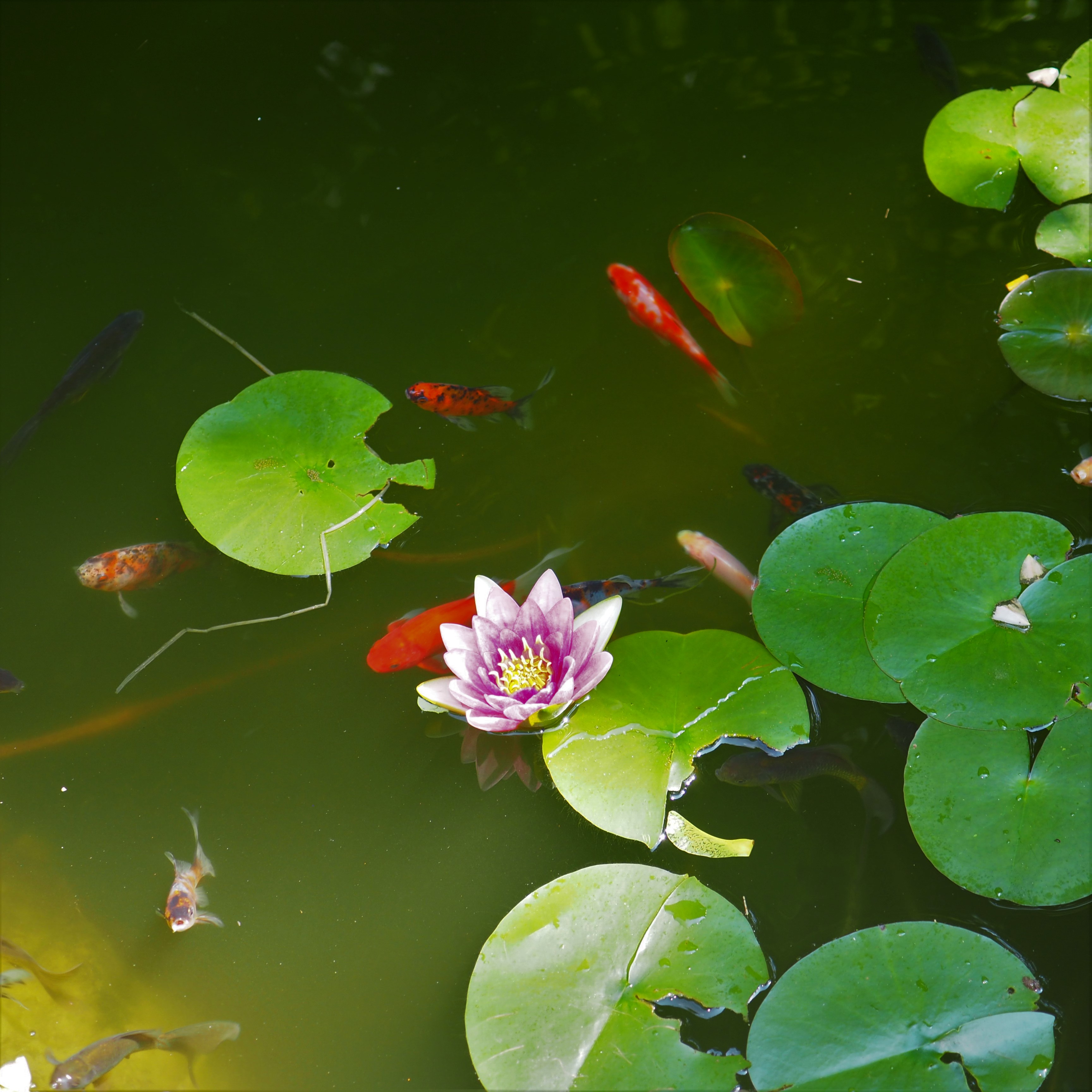
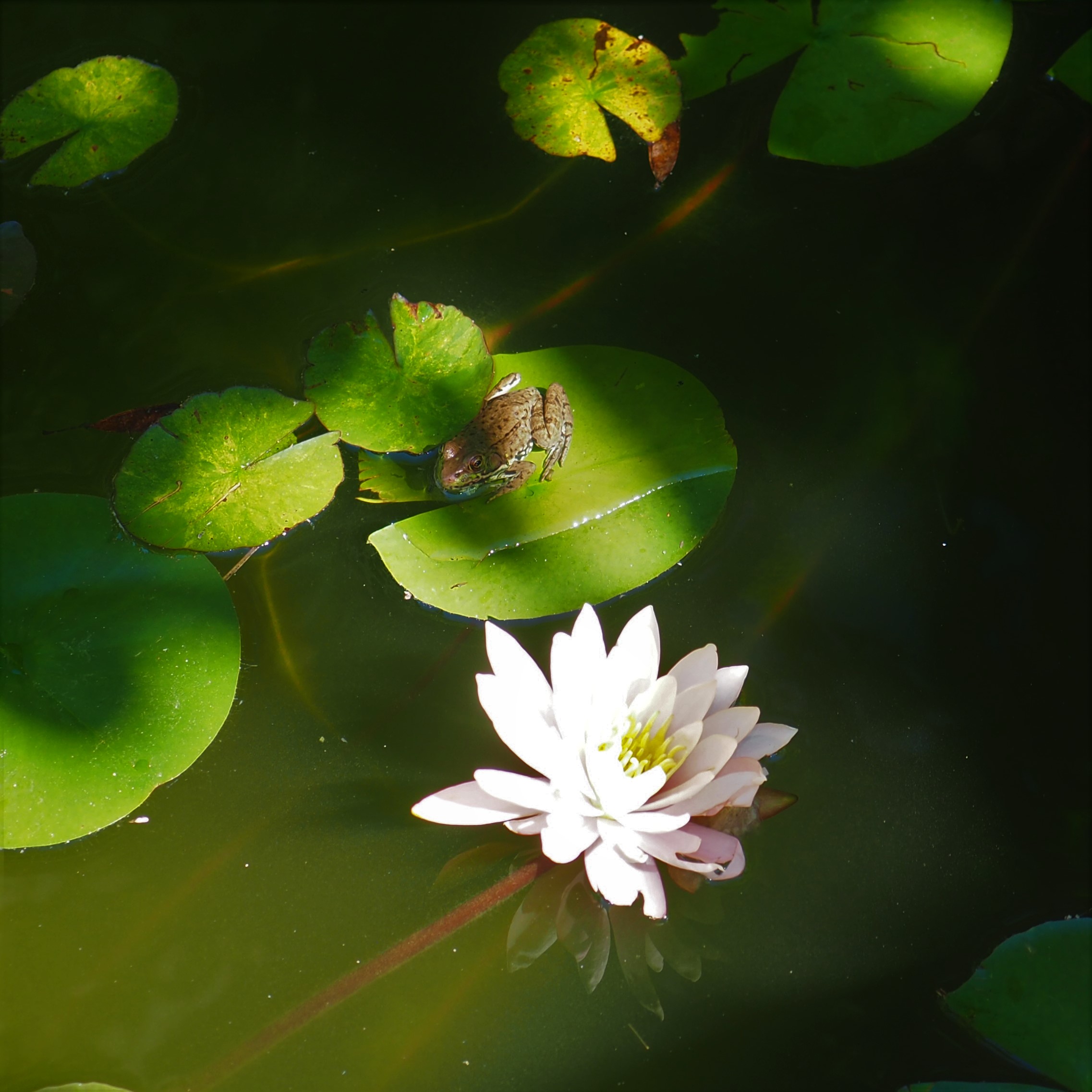
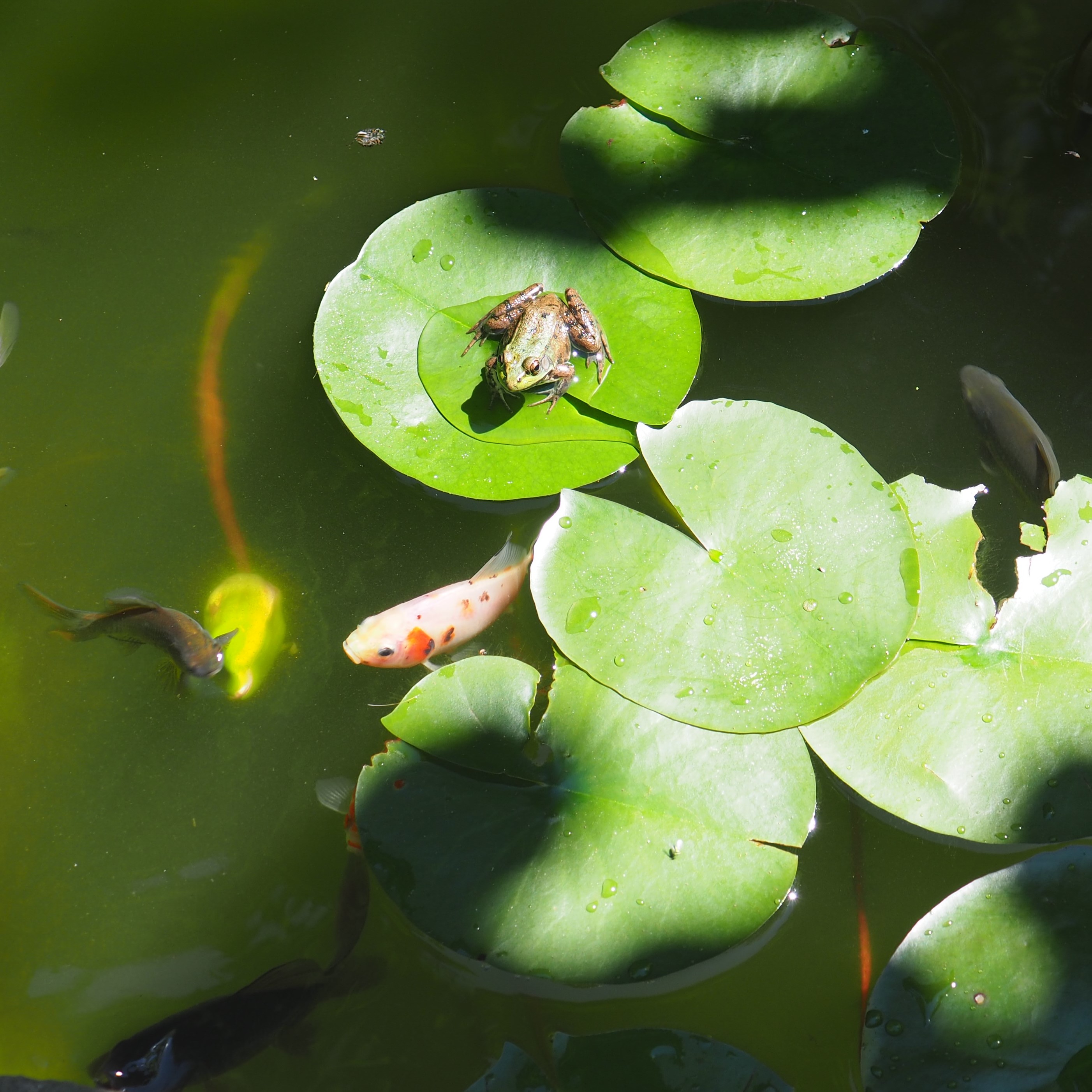
The Frogs are the most plentiful since I started having a Pond out there. There are at least eight of them. And as the little Tiny ones have grown a bit, they are also starting to try to talk back and forth with me. Mostly they move their throats in respons to my purring voice. I apologize for the moving point of interest - I was so excited I watched the little Frog instead of the camera viewer. Click on the empty frame.

Another week that just whizzed by. A week in which power was down from Monday to Thursday, and Internet even longer. That caused my connection to my server on the College's server to change and apparently this is not something they know how to fix at IT. So I'm editing this as a complete webpage and will have to convert it to the usual format at the Blog site when my connection wakes up. I hope you had a good week and will have many more.
Love, Martha
Back to August 28, 2022
Forward to September 11, 2022
Back to main menu
copyright Martha O'Kennon 2022




































.jpg)


































.jpg)




































